






















Ajmere Dale, Square » P110
Chase Anderson, Origin Bank » P116
Lindsey Bennett, Kyriba » P118
Eric Esper, The Hertz Corporation » P121
Carlos Olea, The Howard Hughes Corporation » P124
Jeff Kist, Redbox » P129
Rebecca Thompson, AAON » P132
Michael Schmit, SWM International » P136
Scott Hamilton, iHeartMedia » P140
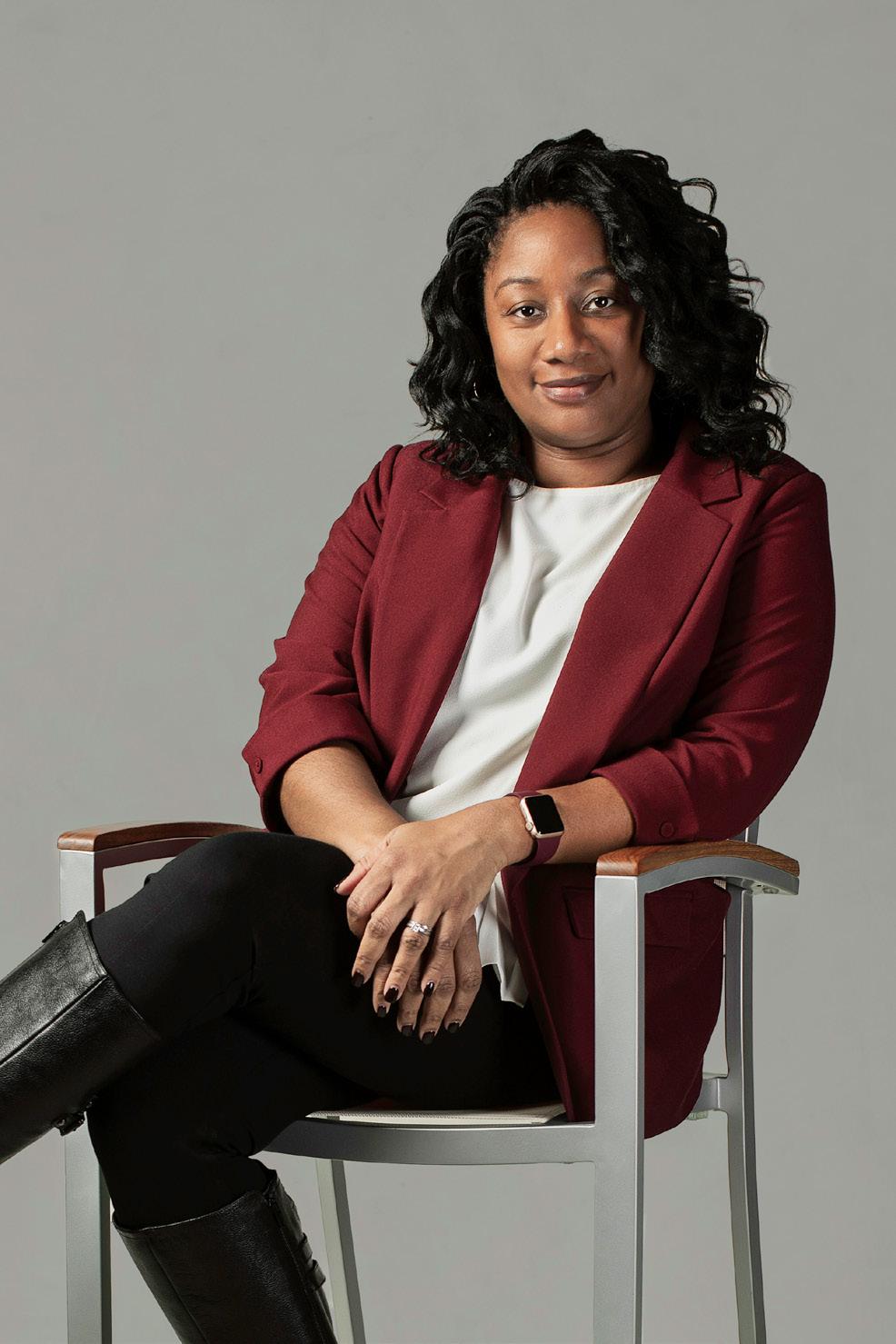
Stephen P. Theobald on how he’s approaching two big challenges he faces today as CFO at Walker & Dunlop
50
Brendan Malley restructured QBE North America’s litigation function into a collaborative and vital part of the business
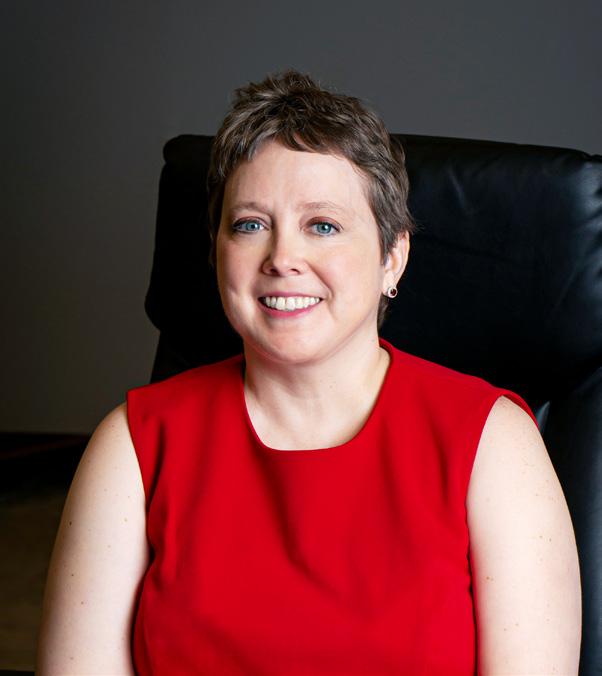
61
How Steve Lyons helps the Columbus Crew soccer franchise flourish
67
How Celia Harper-Guerra builds a recruiting process that draws in top talent and helps the company scale in the years to come

80
Stacie Williams prioritizes NewYorkPresbyterian employees so they can, in turn, prioritize their patients
85
Camden Property Trust’s Laurie Baker knows the importance of taking chances
144
How Carrie Olesen guides change with meaning for a remote workforce at GitHub
156
Terri Zandhuis is Krispy Kreme’s HR all-star, bringing passion and joy to employees and customers alike
164
With a leadership philosophy learned in the Marines, Jim Taylor builds empowered teams at Transportation Insight
180
Rachael Peterson sets employees up for success by implementing digital platforms that improve their work and their lives
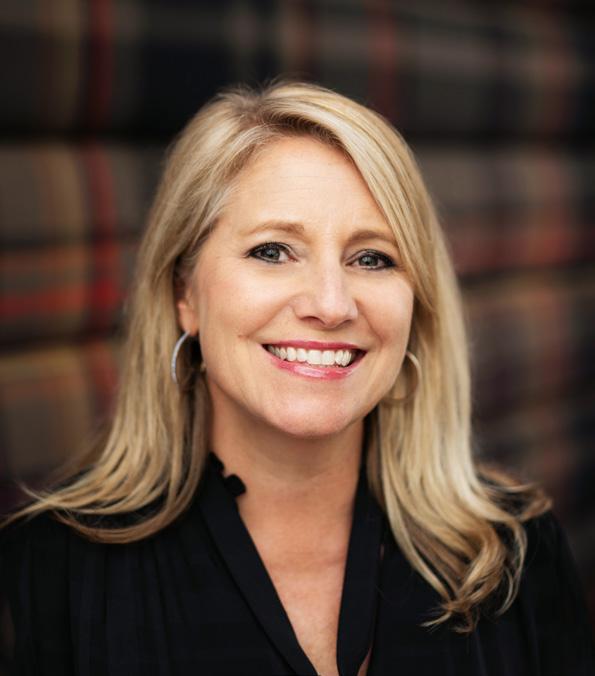
183
Eileen Simon dedicates her leadership and her time developing team members and communities around the globe
How Andesa CEO Ron Scheese made his company 100 percent employee owned
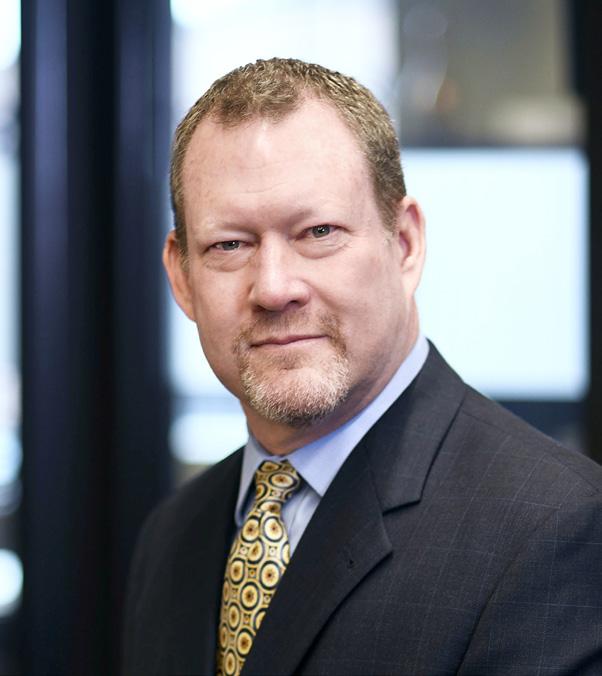
186
Restaurant Ramp-Up
Former civil engineer Allison Howard finds her place as the Los Angeles Lakers’ vice president of corporate partnerships 101
HR expert Bhavna Dave knows how important it is to partner with the business—and it’s something leadership should be doing now, not in five years 177
How Marcum helped the Howard Hughes Corporation ramp up its restaurant and retail operations in NYC’s Seaport District 189
Director, Editorial
Kevin Warwick
Managing Editor
Frannie Sprouls
Editors
Melaina K. de la Cruz
Sara Deeter
KC Esper
Hana Yoo
Staff Writer
Billy Yost
Contributing Editor
Julia Thiel
Contributing Writers
Cora Berg
Will Grant
Kathryn Kruse
Keith Loria
Lior Phillips
Sara Verdi
Zayvelle Williamson
Andrew Wilson
Clint Worthington
A.J. Zak
Stephanie Zeilenga
Designer
Melody Pohla
Photo Editors/Staff
Photographers
Cass Davis
Gillian Fry
Profile® is a registered trademark of Guerrero, LLC.

© 2020 Guerrero, LLC guerreromedia.com
825 W. Chicago Ave. Chicago, IL 60642
Subscriptions + Reprints
For a free subscription, please visit profilemagazine.com /subscribe. Printed in China. Reprinting of articles is prohibited without permission of Guerrero, LLC. For reprint information, contact Reprints & Circulation Director Stacy Kraft at stacy@guerreromedia.com.
CEO & Publisher
Pedro A. Guerrero
Chief of Staff
Jaclyn Gaughan
VP, Sales
Kyle Evangelista
VP, Hispanic Division
Vianni Lubus
VP, Finance
David Martinez
Director, Client Services
Cheyenne Eiswald
Senior Client Services Manager
Rebekah Pappas
Client Services Manager
Brooke Rigert Director, Talent Acquisition
Elyse Schultz
Talent Acquisition Manager
Haylee Himel
Director, Business Development
Jenny Vetokhin Manager, Business Development
Angela Reeves Director, Strategic Partnerships
Krista Horbenko
Senior Events Manager
Jill Ortiz
Senior Director, Sales
Ben Julia
Sales Training Manager
Alexa Johnson Content & Advertising Managers
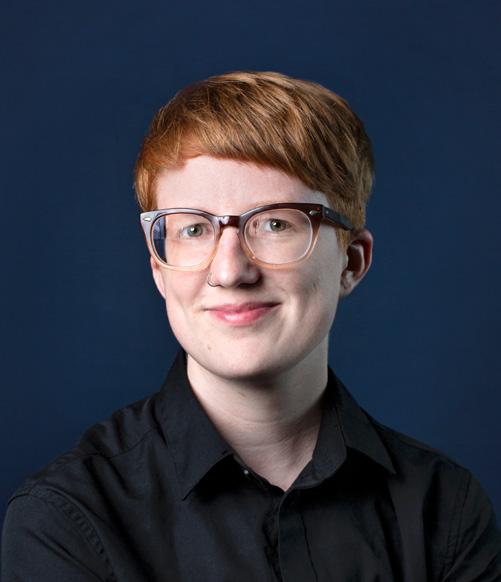
Christina Brown
Allyssa Bujdoso
Chip Carey
Justin Davidson
Michelle Harris
Brandon Havrilka
Tom Kiddle
Elif Negiz
Chantal Roberts
Hannah Tanchon
Molly Thomas
Michael Velazquez
Ashley Watkins
As I sit here typing out this letter in mid-May, there are birds chirping outside and the leaves are starting to unfold on the tree next to my apartment window. The sun is shining, and it’s difficult to believe that there is a global pandemic happening.
This is the first-ever remote production of Profile magazine, and I have only seen my coworkers via computer screens. It’s easy to feel discouraged that we aren’t all in the same room, reviewing cover iterations and printing out sections for a final round of proofing. Creative work is teamwork, and it can seem even more daunting when we’re isolated.
But my team and I saw this as a challenge that we could overcome. When the Illinois shelter-in-place took effect in mid-March, we had to pivot from doing a cover photoshoot to brainstorming and executing an engaging cover illustration focused on our special section of chief accounting officers. During our weekly Zoom meetings, our designer Melody Pohla shared her screen to showcase the different inspirational elements, place the money images taken by our photographer Gillian Fry, and tweak the final cover design.
As difficult as this year has been, it is important to find the glimmers of hope and inspiration to carry you and your team through. This issue is no exception.
Square Inc.’s Ajmere Dale discusses the importance of celebrating mistakes as opportunities to grow, as well as how he and his accounting team support the “incubator of ideas” at the mobile payment company. Patricia Porter shares how she empowers her talent acquisition teams to deliver top-level talent to Booz Allen Hamilton’s clients and how the key to successful teams is communication.
Remote work has become a reality for many companies across the world. At InVision, all eight hundred employees work remotely, and Shelby Wolpa reimagines what a world-class culture can be. And at GitHub, whose workforce is 70 percent remote, Carrie Olesen shares how to drive change in an already successful organization.
These unprecedented times call for moments of great leadership. I hope you find the inspiration and insights you need in these pages and at profilemagazine.com.
Facebook: @gh.profilemagazine
LinkedIn: @Profile_ExecMag
Twitter: @Profile
Frannie Sprouls Managing Editor Gillian FryAlthough Kelly Coomer’s résumé shows an information technology executive with more than twenty years of experience leading global technology teams, IT wasn’t a path she’d ever planned to pursue. Her undergraduate degree was in business, finance, and marketing, but she liked consulting—and IT consulting was where the jobs were.
Coomer started her career in information technology right out of college, working in a variety of roles at Accenture over the course of eight years. Then she made a dramatic career shift, buying two Cold Stone Creamery ice cream shops in the Chicagoland area.
“After running those for four years, I decided to come back to IT and make an income,” she says with a laugh. “I went to Allstate, who had been a client of mine before I left, and spent about twelve years there.”
In August 2019, Coomer was hired by Sammons Financial to become its chief information officer. The company is comprised of three member companies: Midland National Life Insurance Company, which includes Sammons Corporate Markets; North American Company for Life and Health Insurance;
and Sammons
Institutional Group, which consists of Midland Retirement Distributors and Sammons Retirement Solutions. Coomer’s role involves leading technology operations and strategy to enable strategic growth across Sammons Financial’s member companies.
“I was attracted to the culture here. In 2020, Sammons Financial is number five in Glassdoor’s company ranking. The outstanding culture combined with the idea of being accountable for end-to-end IT was something I was looking for.”
Several months into her new job, Coomer is examining where the opportunities lie in the organization and is putting together a plan for how to make changes.
“A lot of what I’m looking at is about business and IT operating models,” she explains. “Sammons Financial has implemented Agile, and in some parts of the organization, we have tight IT business coupling with the work broken down in incremental enhancements to garner feedback and evolve. My goal is to expand this focus enterprise-wide.”
One example: shifting the life insurance business from a waterfall-project approach with long-term, multiyear initiatives to
shorter-term strategies. At the heart of any agile organization is an ability to be nimble and flexible while containing costs.
“Today, it is particularly critical to focus first on the KPIs, measure their value, and assess that the work is on the right track,” Coomer notes. “My job is to define the opportunities where business and IT interact. That requires making the right investments in technology and software.”
Coomer’s role requires her to provide leadership in all technology areas, including applications, software development, data, infrastructure, architecture, IT risk and security, asset management, and desktop computing. When she was hired, she learned of the company’s interest in creating a platform of the future for the life insurance business that just never gained traction. She looks forward to taking on the challenge.
“It’s much broader than just fixing something broken in technology; most of the work is transformative and in essence is how people work together to solve problems,” she says.
Among Coomer’s first assignments was to take a big-picture look at the organization, examine the work in three dimensions—strategic, operational, and people—and assess where each group was in the IT organization
and where opportunities existed in each of the three pillars.
She identified seven action areas to focus on in her first year. For example, in the strategic pillar she homed in on the business and technology operating models, use of Agile, road maps, and product mind-set. In the operational area, she saw the need for solid measurements on performance as an organization and set in motion a new dashboard to better track and assess results.
And for the people pillar, Coomer started looking at how the company’s use of contractors compares to the rest of the industry.
“Like other companies, we rely on IT contractors, and that can pose an inherent level of risk,” she says. “We are working to define a new framework on when and where it makes sense to use contractors based on generating tangible results on a day-to-day basis.”
For the past four years, NIIT Technologies has partnered with Sammons on core application modernization, support, platform upgrades, and policy conversations, helping to reduce core application maintenance costs by 35 percent. “Kelly brings an innovative mind-set to Sammons, which will accelerate the transformation to the next level of being a top digital insurance competitor,” says Anurag
“I was attracted to the culture here. In 2020, Sammons Financial is number five in Glassdoor’s company ranking. The outstanding culture combined with the idea of being accountable for end-to-end IT was something I was looking for.”
Chauhan, executive vice president and global head of insurance at NIIT Technologies.
As part of the company’s life-technology transformation strategy work, Coomer is employing a “right-to-left” strategy to replace aging technology, looking outward and planning a way to bring in the systems and platforms of the future.
“Kelly’s strategy is in sync with DXC’s dualagenda approach as we help her run missioncritical systems while preparing Sammons Financial Group for the digital future,” says Phil Ratcliff, vice president and general manager at DXC Technology.
Coomer intends to implement all these changes in her first year with the company and believes the changes that are already underway will create quite a different look for Sammons Financial’s IT structure by the time 2021 rolls around.
“The place we will see the most immediate impact to reduce costs and increase performance is in our Life Business Unit,” Coomer says. “A year from now, we will be operating in a model where we have clear KPIs, with product teams that measure the business value of their work. We expect to see real returns either through growth or expense reduction as a result of the work they are driving.”
“It’s much broader than just fixing something broken in technology; most of the work is transformative and in essence is how people work and solve problems.”
We congratulate Kelly and wish her the best for her journey to technology transformation through very strategic innovative strategies.
When John Michael Gross joined Cascade Environmental as its first-ever chief information officer, many in the company expected him to simply take on the responsibilities of an IT manager.
“The company never had a CIO before, so it didn’t really understand somebody thinking strategically about technology,” Gross explains. “It only understood, ‘My computer is broken,’ or ‘I can’t log in and I need someone to fix it.’”
From the start, he spread the word of his mission in ways that his new colleagues most certainly found unconventional.
“One of the things I say to people often is I don’t care about technology, which I know
seems contradictory to what a CIO might say,” Gross says. “The most important thing we can do day in and day out is solve a business problem and drive or increase sales, efficiency, or profitability.”
Bothell, Washington-based Cascade Environmental is a leading environmental drilling company that, since its founding in 1991, has become a leader in the field with nearly one thousand employees working in thirty-six different locations.
“Prior to my joining, I would say we were a very traditional mid-size company,” Gross says. “We had a certain number of desktops and laptops that were in a small group of people’s hands. While we had our offices and systems networked together, most or all of those
decisions were driven by vendors selling into the company, not necessarily working with the business to look for ways to reengineer processes or work more efficiently.”
That gets to the heart of why Gross enjoys working in that market: one of his key goals is to work with vendors who want to be partners. “A company like ours needs partners who are invested in our success, not just invested in selling us a piece of software or a piece of hardware,” Gross notes.
He faced two main challenges at Cascade Environmental, starting with the perception that IT was not a partner.
“We were sort of viewed as the Soup Nazi— no IT for you,” Gross recounts. “We weren’t interested in our clients’—our colleagues’—
success. The department was interested only in computer work, not in taking on challenges and finding ways to lower costs and thus creating opportunities for reinvestment.”
He adds that it’s safe to say that the team didn’t necessarily like the people in the business and the people in the business almost assuredly didn’t like the team.
“They viewed themselves as at odds with each other,” he shares. “So the first challenge was to change the culture and say, ‘We’re here as a service organization, and we all succeed if the business succeeds.’”
The second challenge was updating the company’s technology stack and changing personnel to reflect the department’s new mission—and with a limited budget and need to keep existing systems up. “As I liked to say to the CEO at the time, ‘This would be a piece of cake if you let me shut down the company for six months,’” Gross recalls.
Some of the things Gross and his team of six have done is address email compromise, realign Cascade’s systems and infrastructure to the cloud, and shift the focus to field data and communication initiatives, all while improving capabilities and lowering total IT costs.
Early on, he asked employees what problems they faced, and if they responded by pointing out a technology issue, he would shift the conversation to ask them something about the work they do.
“Technology doesn’t provide the solution, you have to change the culture and the workflow,” Gross says. “Most CIO problems are not technology problems. They are business problems that can be solved with technology tools.”
One of his initiatives gave employees the capability of working at home when needed. That paid enormous benefits when people had to work remotely during the COVID-19 pandemic in early 2020.
“We were already prepared for people to work from home,” he explains in his
JOHN MICHAEL GROSS CIOMarch 2020 interview. “My goal is always for people to have the data and systems that they want use in the way that’s most convenient to them at any point of the day.”
Gross cites his background in software as an advantage in achieving his goals with Cascade Environmental. “Because I spent so much time building software for companies previously, I was probably more prepared to come to the company and say, ‘Tell me what ails you and I’ll
work with you to figure out a solution—there are no sacred cows;’ as opposed to, ‘Hardware is expensive and that’s what we have to work with,’” he notes.
His leadership philosophy is rooted in meeting expectations while getting the best out of the talented and dedicated people on his team. “From a management standpoint, I like my team to get credit for the wins,” he says. “And take responsibility for failures as the leader.”

“We agree on a common goal. It’s not just IT. It’s business,” Usman Waheed says. The chief information and technology officer for Knoll sees collaboration and business transformation as his central task and uses a tactic he calls, “three in a box” to ask his company’s tech department, business department, and vendor partners to achieve business transformation goals. “We have a single vision. We assess risk and priorities as a transformation team to develop and achieve our collective goals.”
Knoll is a design and architecture firm that specializes in workplace solutions. Founded in 1934 with a mandate to embrace modernity, the company brought Waheed on in November
2016 to continue its evolution and maintain a clear path to the best technology and business transformation practices.
To achieve best tech, Waheed seeks engagement with the entire company. Tech, he explains, can only perform optimally if IT understands the business. In laying the road to success, he calls meetings with customers, sales teams, vendor providers, and, of course, tech. He also utilizes technology effectively to create excellence in business process and data management.
Developing such systems and relationships is nothing new to Waheed. His career launched as a management consultant and, in that position, he worked with several Fortune 500 companies on their global business transformation
tech is a way to achieve a
“When I was a child I was taught that the only constant is change. Moving to the US for school at age seventeen, I arrived ready to embrace change. As a CIO, you must never fear change. When you focus only on tech you fail to truly transform an organization. Tech is something you consider and integrate while thinking about the whole organization.”
initiatives. When he decided it was time to shift to a corporate role, he took on the task of transforming Iron Mountain to a REIT in forty-five countries, enabling global shared services, and supporting Recall acquisition among several other global acquisitions. Through all this work, Waheed embraces the idea of change.

Of his scope at Knoll, he says, “This is a global role. We are razor focused on the customer experience and providing a personalized experience to each client. We leverage applications and infrastructure economies of scale.”
People have taken notice of Waheed’s ability to deliver. In 2019, after a rigorous vetting process, seasoned business leaders sent him home with the prestigious Global CIO of the Year ORBIE award.
Previous to the award, in 2019, Knoll went live with its multiphase business transformation which includes finance, procurement, order management suite, and a dealer portal. Beyond bringing together various departments, Waheed has to unify legacy systems and onboard new talent.
He has a good mix of legacy and new talent working together to modernize and deliver
business systems. Waheed works to make sure the old guard supports the new and that recent onboards appreciate insights from foundational people and tech.
To build a team mentality, Waheed says he prioritizes culture first and sees tech as a tool for business success. “The biggest confusion in the industry is that tech should be considered as an enabler,” he explains. “Tech is business. Artificial intelligence and other tools should be an output. Technology teams should focus on identifying new opportunities working closely with business partners and identifying problems to solve rather than the tool you want to use.” Business transformation can be achieved when there is alignment between business and IT on both short and long term goals.
Waheed has always been interested in bringing leaders together that make an organization. He advises other in tech to “focus on relationship building and change management and business alignment.”
He also cautions that one can only successfully promote a culture shift when leadership clearly articulates and explains it. “Time is not taken to explain how disruption will help their


K1 Consulting is a Global Premier IT consulting firm that provides digital transformation solutions to organizations with accomplished business leaders and industry innovators.
Since our inception, we have become trusted strategic advisors to multiple Executives and Technology Leaders, as well as a reliable talent source for Technology Implementations. We help our clients make significant, lasting improvements to their performance and goals, all while leveraging disruptive technology. K1 delivers custom-tailored consulting services and business IT support for organizations of any size, with core competencies in improving the customer experience.
lives,” he says of a common pitfall. “It’s about ensuring that the vision and direction is shared with all,” he reiterates.
To get to this shared vision, Waheed offers a few key tactics. First, though he admits it may seem basic, Waheed puts a great deal of effort into making sure people understand not just what but also why and when. He also understands that financial incentives and rewards for putting energy into change can boost engagement. Beyond financial incentive, Waheed says they celebrate success and milestones, and he works to help his team understand the future through focusing on customer experience.
The ongoing “why” questions that Waheed asks reveal needs of customers. Clearer understanding means no business disruptions, improved business metrics, and supportive feedback from customers. Waheed continues to move Knoll toward all these markers of success with his dedicated team and a network of partners.
His job, he says, means making sure the right talent and skill sets are available and, of course, importantly, committed. Business and IT strategy alignment remains his constant goal. “Business is tech,” Waheed says. “Tech is business.”
“It’s about ensuring that the vision and direction is shared with all.”
There may be few as well-prepared to speak about the technological vulnerabilities faced by the millions who suddenly found themselves working from home than Raj Badhwar. Employees working from home during the COVID-19 pandemic created a stress test for technologies like Zoom or WebEx that meant exponentially larger amounts of people utilizing the videoconferencing and online collaboration tools than ever before.
In the early days of the American pandemic response, Badhwar, chief information security officer at Voya Financial, wrote four articles to help businesses transition their employees to work from home safely and securely.
Badhwar drew on his more than twenty-five years of analysis, architecture, design, development, and management of technical resources for cybersecurity engineering, operations, and incident response. He has led application development, network management, and informa-
tion security efforts at Bank of America, AOL Time Warner, AIG, and defense contractor BAE Systems. He’s also a member of Rutgers University’s cybersecurity board, as well as a board member for the National Technology Security Coalition (NTSC), a nonprofit and nonpartisan organization that serves as an advocacy voice for fellow CISOs.
If it’s related to cybersecurity, you should probably call Badhwar.
A New Cybersecurity Talent Ecosystem Badhwar’s role on the NTSC has been earned for good reason. The CISO is a progressive advocate for the role of diversity and inclusion in cybersecurity—including diversity of skill, as is seen in his promotion of cybersecurity as a career for kids with special needs.
“People who are thought to be on the autism spectrum are often perfect and ideal candidates for cybersecurity positions,” Badhwar explains. “They may be shy or avoid eye contact,
Raj Badhwar is a premier authority on cybersecurity and the evolving importance of CISOs at Voya Financial and beyond
but they are often very adept at mathematical pattern analysis and recognition.”
Badhwar says Voya, at large, has voiced support for these kinds of initiatives, as evident by its commitment to the special needs community through Voya Cares and its selection as one of Ethisphere’s Most Ethical Companies eight years in a row.
The CISO also drew significant experience from his Department of Defense contracting days. “I saw veterans coming home from war and transitioning into cybersecurity work, and it makes good sense,” Badhwar says. “Their mission changes a bit, but they’re still able to continue to protect and defend their coworkers, their customers, and their clients.”
Less than a decade ago, Badhwar says that 90 percent of most CISOs were likely white men, and he’s hoping to help change that statistic. “Along with those who may have military or police backgrounds, it’s very important that we select from a wide candidate pool of peo-
RAJ BADHWAR SVP AND CISO
ple from other ecosystems and backgrounds,” Badhwar explains. “We have to find a way to engage and awaken that interest early in women who might not have considered cybersecurity as a career previously.”
Badhwar took that advice with his daughter, introducing her to programming, malware defense, and other key cybersecurity concepts early on.
Now, perhaps more than ever, Badhwar says that CISOs should be looked to for leadership on company boards. “Security is paramount to any company,” Badhwar says. “When the board of directors wants guidance about where investments are being made in a company and they don’t have security people on that board, there is a valuable voice that is not being heard.”
When it comes to companies wanting to move their entire network to the cloud, Badhwar says that having a CISO on more
We centralize activity across database systems,
high-value security analytics and automated risk control
Too many organizations are ill-prepared to detect and respond, let alone prevent, a data breach, which increases business risks and
preventing external threats, but stumble when
Securing your database systems, and the data within them are critical to preventing insider threat.
Seamlessly extend your enterprise data security program to the cloud
your teams on mastering new
collection, compliance and data security programs
Get actionable, AI-powered security intelligence so you can deploy advance risk reduction controls
OUR CUSTOMERS ARE MADE UP OF SOME OF THE LARGEST FINANCE, INSURANCE, RETAIL AND HEALTHCARE ORGANIZATIONS IN THE NATION. LET US SHOW YOU WHY THEY TRUST JSONAR.
boards of directors might have saved a world of headaches.
“There may be some short-term gains in moving everything to the cloud, but I think security has been forgotten, and that’s why there are breaches literally every single day in the news,” the CISO explains. “I spend a lot of my time these days talking about cloud security because it is the future state of application and system hosting for every corporation.”
Fortunately, partnerships with cloud-based database security companies like jSonar have helped ease this difficulty. “jSonar enhances our capability speed and agility to provide security monitoring and behavior-based analytics both on-premise and in the cloud,” Badhwar says.
According to Ron Bennatan, chief technology officer at jSonar, most organizations struggle with deploying consistent data security policies to the cloud. “Legacy on-premise tools don’t carry across to cloud workloads,” he explains. “At jSonar, we abstract the complexity of the underlying data systems and provide a single platform to secure any data workload.
“Our customers, like Voya,” Bennatan adds, “can accelerate innovation in their business and migrate to the cloud while having the confidence that their security controls and more will be consistent across all on-premise and cloud systems through jSonar.”
Along with extensive security, application development, and network management experience, Badhwar is also a serious thinker
about what the future of technology offers both in terms of opportunities and challenges. He has coauthored fourteen security patents, and conducted extensive research in the areas of cryptography and zero trust networks as well as AI-based pattern matching and reactiveresponse for cyber incident response and fraud mitigation. He has also written about the code of ethics for AI as it applies to cybersecurity.
Badhwar has studied quantum computing extensively and has written about the potential risks with its advent. “While quantum computing will exponentially increase the computing power at our disposal, security technologists worldwide are worried about its supposed capability to break many of the encryption and hashing algorithms that are currently based on computational difficulty,” he explains. He has also written about post-quantum cryptography, including quantum encryption’s ability to provide the needed security to sensitive data now and in the future.
Badhwar has also written and spoken extensively on the idea of cyber-exceptionalism. “Cyber-exceptionalism is not nationalistic,” Badhwar explains. “It is an attempt to band together with cybersecurity professionals around the world with a mission to maintain the confidentiality, integrity, and availability of our systems, services, and our sensitive data from various cyber adversaries and attackers. We must work together to share best practices for the needed preventative and protective security controls with our peer companies and businesses to form a shared defense.”
“We have to find a way to engage and awaken that interest early in women who might not have considered cybersecurity as a career previously.”
 By Sara Deeter
By Sara Deeter
SVP AND CIO
COSTA FARMS
Doug Watson has never been afraid to push himself to get involved with difficult projects. Early in his career, Watson could always be seen volunteering for extra projects that enhanced his understanding of company operations, value-adding strategies, and organizational networking.
These days, however, Watson has no need to volunteer for special tasks: top companies such
DOUG WATSONas wholesale grower Costa Farms are eager to capitalize on his talent and have kept him busy driving business transformation and technological innovation for the past six years.
Watson is known for his ability to lead IT functions in a way that generates tangible value for an organization. This value-centric mind-set stems, he explains, from the ten-plus years that he spent in operations and sales early in his career.
“My first opportunity was to transform the organization’s relationship-based selling approach to one that was fact-based,” Watson recalls. “This involved designing new processes for how we approached working with our customers as well as developing and delivering a sales training program along with supporting technology.”
Watson’s knack for transformation quickly earned him a reputation in the industry—and secured him a position as vice president of marketing and sales systems at wine and spirit importer Schieffelin and Somerset. There, Watson not only transformed the sales team but also played a role in reengineering all customerfacing processes, order replenishment, demand forecasting, shipping, and more.
According to Watson, that experience opened his eyes to the fact that “yes, technology
plays a big role in transformational efforts. But in order to deliver repeatable improvements, you have to develop a structured approach.
“That approach must include a business process design, which determines jobs, competencies, and governance structure,” Watson continues. “That process, in turn, requires management as well as incentives and performance measurement systems, which influence the organization’s values and beliefs. And technology enables it all.”
The value of that structured approach to transformation extends beyond any individual organization, Watson emphasizes. In fact, Watson’s success was exactly what attracted Bacardi USA in 1997. For more than fifteen years, Watson helped the beverage giant revamp its sales teams, implement a regional enterprise resource planning (ERP) platform for North America, and global SAP platform, and optimize various business and IT functions.
All of those experiences helped set him up for success at Costa Farms. One of the largest horticultural companies in the world, Costa Farms has experienced rapid growth in recent years and now generates more than $500 million annually. As senior vice president and chief information officer, Watson strives to establish the systems necessary for helping the company manage that
“Implementing an ERP platform moves you into a long-term relationship. I like to refer to it as a marriage—you want to ensure there is a good fit.”



exponential growth—and even put it on the path to becoming a billion-dollar organization.
“For the last three years, it has been all about getting the organization ready for our enterprise-wide ERP implementation,” Watson says. “We project that half of our future growth will come from acquisitions, which will require us to quickly integrate new acquisitions.”
An “enterprise way of working” is critical to achieving that level of agility, Watson explains, which is why he and other Costa leaders conducted a rigorous search for the highestquality ERP platform available. It was a process that took more than eighteen months.
“We developed our capability matrix of our requirements and must-haves and conducted two on-site, in-depth product reviews of our short list vendors,” he explains. Watson and his team eventually selected Sage X3 as Costa’s ERP platform, a testament to Sage’s strong manufacturing functionality.
Watson was looking for more than just a fulfillment of Costa’s technical needs. He also conducted several meetings with Sage’s management team to assess how well their culture aligned with Costa’s. “Implementing an ERP platform moves you into a long-term relationship,” Watson notes. “I like to refer to it as a marriage—you want to ensure there is a good fit.”
“When Doug started working with us, we knew he had a special vision for Costa Farms,” says George Seymour, vice president of sales
at Sage X3. “Moving from a small company organization to an enterprise-level operation requires an experienced leader with a solid plan and an innovative approach. It has been an honor to help bring this vision to reality for Doug and the Costa Farms family.”
In conjunction with selecting and rolling out this ERP platform, Watson has also been working to optimize Costa’s project management capabilities and establish an enterprise-wide governance structure. All of these efforts have kept the SVP and his various team members on their toes, and fortunately, Watson has cultivated an IT team that (much like himself) understands how to drive strategic value.
“We look to hire people who are positive and dedicated, people who have a natural curiosity, are continuous learners, and can think strategically while still getting into the details,” Watson says. “We look for people who are never happy with the status quo.
“Lastly, these individuals also have to have strong communication and persuasive skills,” Watson continues. “Great ideas deliver no value unless adopted and executed by the organization.”
It doesn’t take long for the impact to be seen across the organization, Watson says. In fact, that is partly what has kept him in this line of work. “It is challenging; it is very difficult,” he admits. “But once you successfully deliver, you see the benefits almost immediately, and it just feels great.”
“Great ideas deliver no value unless adopted and executed by the organization.”
Law students often ask Juliet Stone how she got to where she is today. “I always say that no one would ever choose my journey,” the general counsel for Motorcar Parts of America (MPA) says with a laugh. “On one hand, if you can learn from your experiences and apply lessons to the next, then each position is worthwhile and ultimately allows one to be a more well-rounded general counsel.
“On the other hand,” she continues, “most people who want to be a general counsel
won’t purposely change specialties from tax to corporate to nonprofit work to financial institutions to SaaS to manufacturing.”
In the midst of a handful of GC positions that would ultimately lead to a decade of financial institution expertise, Stone made the choice to go into nonprofit work. At the Asian Pacific American Legal Center, Stone’s responsibilities included managing client advocates, who were routinely speaking with people who needed help in the most desperate of times.
“These were calls about domestic violence or people who were being forced to leave their homes or their country,” Stone remembers. “Our advocates would internalize these experiences and would need someone to talk to. It taught me a lot about empathy and service.”

Stone is a lawyer who takes a customer service mind-set to another level, no matter the industry. That focus has landed her attention, sometimes unwanted. In a previous role, Stone was tasked by the CEO to help bridge the gap between banking branch staff and the administrative team.
“I had no idea why I was put in charge of this,” Stone says, laughing again. “But likely because I had developed a strong reputation for customer service, and so we formed a task force to bring a customer service attitude to the entire company. We helped the branches understand that we were there
to serve them as customers along with the bank customers we all serve.”
Considering a bank teller’s challenges, Stone says, it is imperative for all staff to see each other’s perspectives in order for everyone to better serve customers together as a team.
A little more than six months into her new role at MPA, Stone has endeavored to bring that service mind-set to her team. “As I’ve been learning the business and our culture, I’m also trying to find ways to improve the customer service environment across the board,” says Stone, who joined MPA in September 2019.
A big part of customer service is open communication. “We spent a great deal on trademark issues over the past two years,
but the marketing team had no idea the level of legal spend,” Stone explains. “A simple email raising the issue of whether we were getting more value than the spend helped refocus our efforts and ultimately save money. Mostly, it helps the business folks see legal as a partner rather than an impediment.”
Stone’s desire to make an immediate impact at MPA isn’t a recent development. It’s one she’s actively had to work to dial back. “My mantra for the past decade has been ‘positive, incremental change,’” the lawyer says. “You don’t—and shouldn’t—try and do everything on day one. Most people don’t like change,
Gibson Dunn is a full-service international law rm that advises on the most signi cant transactions and complex litigation around the world. Consistently achieving top rankings in industry surveys and major publications, Gibson Dunn is distinctively positioned in today’s global marketplace with more than 1,300 lawyers and 20 o ces.
Appellate & Constitutional Law
and you really need to build buy-in over time to help colleagues see that different isn’t automatically bad.”
Working to build that buy-in is just another aspect of walking a mile in her colleagues’ shoes. “If you’re not customerfocused as an in-house employee, you’re not going to find out what’s really happening,” Stone explains. “That will increase risk and your workload in the long run.”
The attorney has had success tamping down her impulse to figure everything out at once and immediately. And her proclivity for frugality—one that includes coupon clipping and bargain hunting, for which her sister still teases her—hasn’t dulled.
Business Restructuring & Reorganization
Labor & Employment Litigation

Media, Entertainment & Technology
Mergers & Acquisitions
Private Equity
Real Estate
gibsondunn.com
Whether it’s reducing outside legal spent by more than 50 percent in her first year, which she done on more than one occasion, or taking on projects that would normally be outsourced, her frugality is bordering on legendary.
The GC recently spent multiple weeks working on the production of a third-party
subpoena because getting outside resources to handle it wasn’t worth the legal spend. It’s grueling work, but even after the head of budget and finance worried that she’d burn herself out, Stone’s response was simple. “I’ll suck it up.”
Now, more than ever, it’s important to embrace a customer service mind-set like Stone’s.
“Given the crazy time we are living through currently,” she says, referencing the COVID-19 pandemic, “we could all learn the lessons of empathy and listening to each other with openness and care.”
“Baker McKenzie congratulates Juliet Stone on this welldeserved honor! We are pleased to support her, as we help clients solve complex legal problems across borders and practice areas. With seventy-seven offices in fortysix countries, we understand local markets and multiple jurisdictions, working together with GCs like Juliet as trusted colleagues and friends to instill confidence in our clients. For more information on our firm and our services, visit bakermckenzie.com.” —Perrie Weiner, Partner-inCharge, Baker McKenzie (Los Angeles)
“If you’re not customer-focused as an inhouse employee, you’re not going to find out what’s really happening. That will increase risk and your workload in the long run.”
JULIET STONE
For more than thirty years, Cecilia Camarillo has seen the good, the bad, and the very ugly of accounting systems in need of modernization and process improvement in the Texas oil and gas industry. She has experienced precomputer, thirteen-column accounting paper books, financial restatements, and the process of taking a private company public. Camarillo’s penchant for seeking the next application or system that might aid each organization has enabled growth that makes her a progressive financial leader, never stuck in one place or resistant to change.
It’s a fair leap for a college graduate who says she had absolutely no idea what she was going to do with her degree.
Camarillo, now senior vice president of accounting at Austin-headquartered Parsley Energy, moved to Midland, Texas, straight out of college with a husband she married at seventeen. They had no intention of staying
Cecilia Camarillo brings thirty years of tax and accounting wizardry to refresh and re ne systems at Parsley Energy
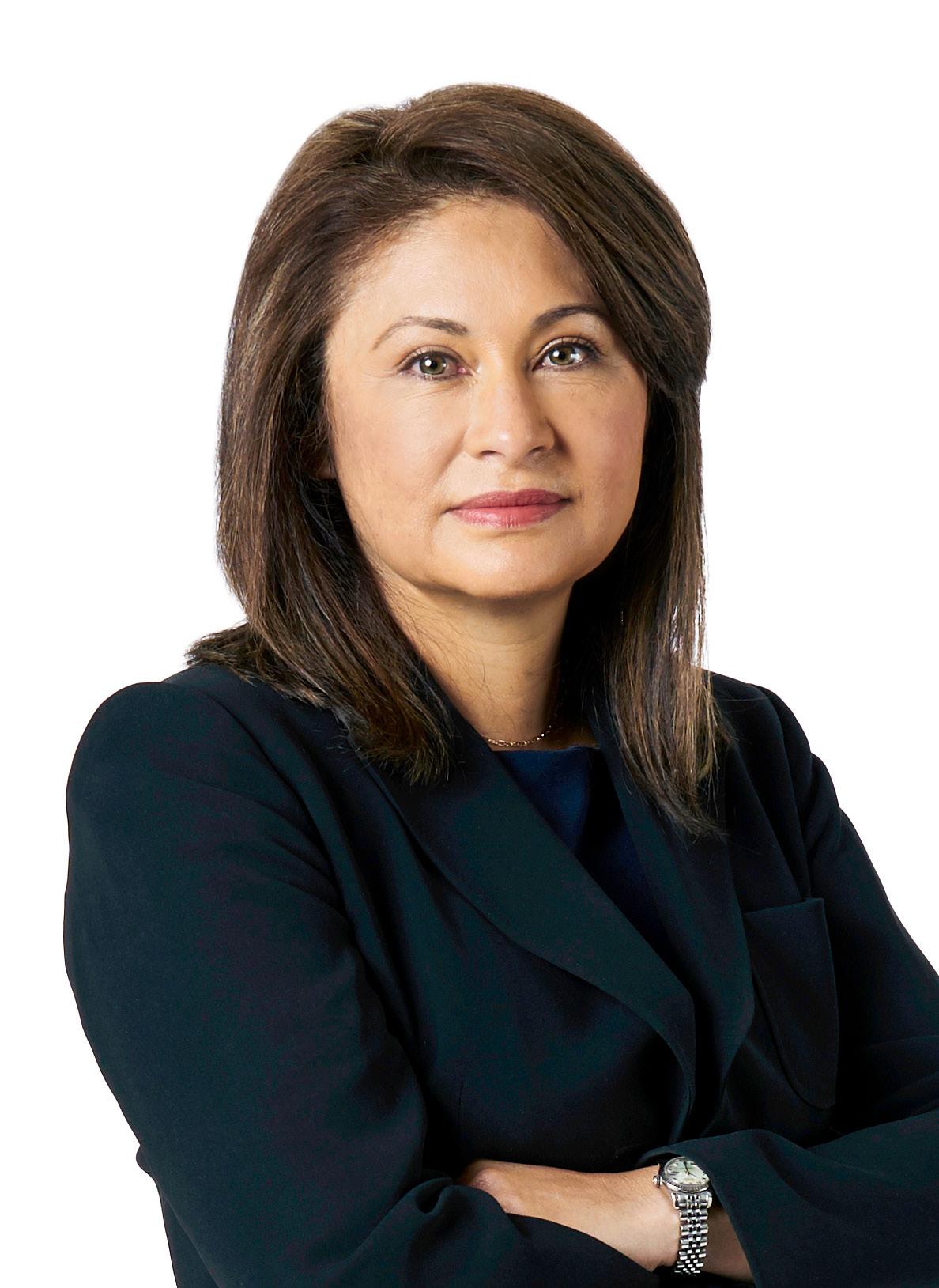
long. “We were a young couple in early days survival mode,” Camarillo remembers. “My husband had his license to do hair, and the next thing I knew, he’d opened a salon. Our roots just sort of shot down.”
There was one business to get involved with in Midland: oil and gas. It was there that Camarillo earned her stripes as a staff tax accountant in public accounting. After leaving public accounting and landing at Key Energy Services, Camarillo had the opportunity to witness exactly what she didn’t ever want to go through from a position of leadership. The company had delayed its SEC filing to account for write-downs of $78 million in assets, which had triggered a restatement.
“I was on the fringe of this because I was on the tax side, but it was an absolute nightmare,” Camarillo remembers. “For
the most part, I was able to watch from the sidelines as the company went through this ordeal.” Most of the C-suite was cleared, and it’s likely Camarillo’s strict attention to detail was only emboldened. “It was a big eye opener as to what happens if you don’t focus on the rules and how ugly it can get, and that was about the time I left.”
After five years of accruing valuable experience as director of tax at Concho Resources, Camarillo came to Parsley in August 2013. By November, Camarillo was in the depths of helping prepare the company to go public. It was time to fundamentally reorganize key portions of the accounting system. “You couldn’t efficiently get data out of the accounting system,” Camarillo says.
“Reporting wasn’t automated, so analysis was manually labor intensive every time data was updated.” The situation was further complicated because master data between systems was not in sync. The production volume system for tracking well production didn’t align with the accounting system that was used to record the revenue from those same wells.
For a company looking to go public, it just wasn’t going to work. “With a private company, there are typically fewer deadlines,” Camarillo says. “But going public, you now have recurring monthly efficient processes you have to adhere to in order to meet filing deadlines.” By January, the company was dumping its entire accounting system into a data warehouse aided by Artis Consulting’s business intelligence cube.
Concurrently, Camarillo also capitalized on the moment to implement a new authorization for expenditures (AFE) application that could also be networked to the cube, where engineers could access and set up budgets.

Parsley has matured as an organization from those early days, and the expansive growth has led to the creation of a full-fledged IT organization with forty-plus professionals. It’s a continuing partnership Camarillo relies on to implement new financial solutions for the growing business.
Those are merely the exploits of a financial expert, but Camarillo puts it best. “I don’t always stay in my lane,” she confesses. After Camarillo and two other senior female executives became increasingly concerned with a data governance effort that seemed to be going nowhere, they saw a challenge and opportunity and agreed to take it on head-on.
The three women took on the project, eventually joined by the VP of IT. The foursome assembled a DG project team and first set their sights on production volume reporting. Eventually, they oversaw the implementation of an enterprise-wide master data management system that automatically syncs master data on a real-time basis between nine systems across the well life cycle. “I’d say this is our biggest achievement as far as data governance goes,” Camarillo says.
The VP says that leading a team of people often decades younger than her has been more of a blessing than a curse. “My whole team is young, but they really care about their work and they’re not jaded yet,” Camarillo says, laughing. “Humor is a big part of the work experience for us. Hard work is easier when you can share a laugh, and I’m so thankful to be exposed to that youthful energy on a regular basis. I push them too, of course.
“I don’t think anyone coasts to success,” she says. “It takes hard work.”
“It was a big eye opener as to what happens if you don’t focus on the rules and how ugly it can get.”
CECILIA CAMARILLO
When she was eleven, Melanie Winskie Crowe watched her mom lose in a divorce settlement. She understood that her mother, a teacher, had a lower salary than her father, and thus could not afford the same caliber of legal counsel. From the experience, Crowe learned that “people who don't have the money to buy resources lose out,” a pattern she has been looking to rectify ever since.
Throughout college, Crowe continued to see this relationship between wealth and legal advocacy play out as she worked in domestic violence intervention and tutored underserved kids. Law school was a natural fit for Crowe, but when she graduated, she had debt that pushed her into a stint at a law firm where she did as much pro bono work as they would allow her to do. Keeping her desire to do public interest work in front of her, Crowe came to LogistiCare in 2007 and, since then,
From litigation to patient safety, Melanie Winskie Crowe helps LogistiCare get patients where they need to go
has helped the company provide transit to patients on Medicaid and Medicare.
Along with litigation and claims, Crowe handles the legal aspects of HR and assists with government relations. That large job includes serving the company’s four thousand employees and also working with lobbyists to make the legal case for transportation benefits. Right now, LogistiCare supports the Protecting Patients Transportation to Care Act, a proposed bill to solidify transit benefits for Medicaid patients into law from the easy-to-roll-back regulatory status it currently occupies.
While the company has contract and SEC specialists, Crowe says that, outside of those realms, people come to her with “anything legal that needs doing,” from HIPAA considerations to insurance issues to regulatory questions. She enjoys her position, both for the impressive autonomy LogistiCare affords her and the fact that the large scope keeps her “always on her toes.”
Founded as a company designing a more generalized transit software, several years ago LogistiCare focused on becoming the premier transportation benefits manager for Medicaid and Medicare’s transit benefits. Crowe sees her role as supporting preventive care, especially mentioning how LogistiCare services help dialysis patients get to the services they need to avoid more expensive hospital stays and help disabled individuals continue living in their homes and communities instead of institutions. “We enable vulnerable populations to access efficient, cost-effective healthcare,” Crowe says.
LogistiCare orchestrates rides with approved nonemergency transit companies. They also work to manage costs by evaluating fraud risks and partnering with private managed care insurance providers that have taken over Medicare/Medicaid contracts. This means LogistiCare facilitates sixty-three million rides per year across forty-eight states.
Crowe says that such high volume means litigation. Since joining the company, she has witnessed dramatic growth as LogistiCare became publicly traded: revenues jumped, and employee numbers grew to three or four times their original roster. Throughout this expansion, Crowe has worked on establishing
 Melanie Winskie Crowe Deputy General Counsel LogistiCare Solutions
Melanie Winskie Crowe Deputy General Counsel LogistiCare Solutions
John J. McDonough (212) 908-1226
jmcdonough@cozen.com
David A. Shimkin (213) 892-7988
dshimkin@cozen.com
Alexander M. Kargher (213) 892-7954
akargher@cozen.com
750 attorneys | 30 of ces cozen.com
best practices to improve the company’s activities and response.
She has put a system in place to track complaints and concerns. When she joined the company, lawsuits often came as a surprise. “There was no control,” she says. The legal team spent lots of time trying to catch up once a suit was filed. Now, she says, things are much more efficient and, due to her litigation and claims system, she is aware of issues early and can prepare for what is coming.
In 2019, Crowe moved from assistant to deputy general counsel. While her duties have expanded, she still works with a lean team of five attorneys, three paralegals, and three compliance legal staff. This structure keeps Crowe immersed in all the work of the team. In such an environment, she says, “you learn a lot about the company and different areas of the law, but we have a great team. We help each other when things get busy.”
This immersion shows in how Crowe can speak to a variety of future plans at LogistiCare. The company, she says, is looking to create systems that allow patients to reserve and track rides on smartphones. However, Crowe says, it is a much more complex cyberenvironment than a standard Lyft
ride. Patients, drivers, providers, managed care systems, and Medicaid/Medicare all need to be connected, and HIPAA and other compliance concerns taken into account.
The company recently acquired Circulation, a software company, and will absorb and upgrade its tech. Many users seek such a shift in technology, and Crowe says that transitioning from a call center model will be a major cost saver.
Drawn originally to how the company used government money efficiently and helped get people to appointments, Crowe continues to support efficiencies. She now looks ahead toward program improvement that touches on legal patterns.
LogistiCare has given her the go-ahead to study patient safety. Crowe said that even though she is not a risk manager, “after twelve years of litigation and claims, you start to see that there are things that should not have happened in certain cases.”
She intends to take advantage of machine learning to analyze, understand, and affect trends. “We want to do what’s best for patients and for the Medicaid program as a whole,” she affirms. “That’s my mission.”
“We want to do what’s best for patients and for the Medicaid program as a whole. That’s my mission.”
MELANIE WINSKIE CROWE
Cozen O’Connor is proud to work alongside Melanie Winskie Crowe, Deputy General Counsel for LogistiCare. We congratulate Melanie on her exemplary leadership and many accomplishments.
Growing up in a small town in Wisconsin, Rachael Bertrandt decided early that engineering would be interesting as a career because she was good at math. But upon auditing a class in college, she found it extremely overwhelming because of the excessive number of people— which was almost more than her entire town’s population.
“I had a natural aptitude for accounting, and my business teacher in high school taught to my level and brought me extra textbooks, so I decided to then pursue a business degree,” she recounts. “My parents


owned many businesses, so I knew about small business accounting, which led to where I am now.”
Today, Bertrandt serves as global corporate controller and principal accounting officer for Insight Enterprises Inc., a Fortune 500 global provider of digital innovation, cloud and data center transformation, connected workforce, and supply chain optimization solutions and services—the global integrator of Insight Intelligent Technology Solutions for organizations of all sizes.
Her journey to the Phoenix-based company began in 1997 with a stint at Ernst & Young, where she worked in auditing. She moved on to a controller role at Sage Software for five years, followed by two years as controller at MedAire and ten years at Amkor Technology.
“Amkor was a large global semiconductor company, and I had a global controller role,” Bertrandt explains. “In 2016, that led me to Insight.” As Insight’s principal accounting officer, she is responsible for global financial reporting, accounting
policy, and the company’s SEC filings. She also provides support to the CFO and senior management in their communication with investors and analysts following the company.
“My favorite part is the global aspect. That was certainly a large focus for me at my last company,” Bertrandt shares. “Insight is now continuing growth from a global aspect, and I think my experience and global leadership from other top technology companies is really valuable and helpful in my role here.”
On the global front, she notes, individual cultures around the world and how those cultures impact business are intriguing to her.
“Amkor focused on extreme concentration throughout Asia, but at Insight it’s a little more diverse,” Bertrandt says. “It’s a bit of a different global scope. I had to go through that learning curve again at Insight as far as making sure the team is sensitive to global cultures and open to learning about them, which is how you successfully lead people across the globe.”
Bertrandt travels a fair amount, not only throughout the US and Canada but also to Europe, Australia, and the AsiaPacific region.
“I did not travel when I was younger, and I had not been outside of the US until
working for Sage Software in the late nineties and going to its sales office in the UK,” Bertrandt says. “After having traveled throughout ten years in Asia, it really doesn’t quite compare from an international perspective.”
The biggest challenge with working in different cultures, she notes, is that people assume the way they do business is how the rest of the world conducts business. She also finds that people who don’t have global experience aren’t always sensitive to the issue of cultural impact.
“At Insight, our company culture is extremely important to every one of us as a part of what we do as an organization, which makes for a common language in our global organization,” Bertrandt says. “We can then build from there.”
From a finance perspective, she helps advance Insight as a global organization and uses the company’s values to work through geographical differences. One of the areas of focus over the past two years is clear, concise two-way conversation.
“A lot of my team from the corporate perspective are also the ones that lead that communication, making sure we’re not recreating the wheel every time a business unit has a deal or transaction come up, particularly in Europe and Asia-Pacific,”
Bertrandt notes. “Chances are that we already encountered that in North America, so making sure that we are cross-communicating and having opportunities to do that face-to-face as well is important.”
That means bringing leaders from different backgrounds and geographies together and working under the same philosophy— people first and culturally understanding how everyone communicates.
Insight has seen tremendous organic growth in the past five to seven years, and its CEO, Kenneth Lamneck, invests heavily in developing future organizational leaders; he views it as one of his primary jobs. Bertrandt enjoys the fast pace of the job and the drive to always do more.
“When you’re dealing with different time zones and working around the globe, you really have to react quickly. You’re in so many different cultural and economic environments that if information isn’t readily available for decision makers, it can be problematic,” she says. “Our service to our company means not only clearly communicating with one another on a global basis but also being articulate about how we deliver our messages to our internal customers and reporting a higher standard of work ethic in a quicker amount of time.”
“Insight is now continuing growth from a global aspect, and I think my experience and global leadership . . . is really valuable and helpful in my role here.”
RACHAEL BERTRANDT
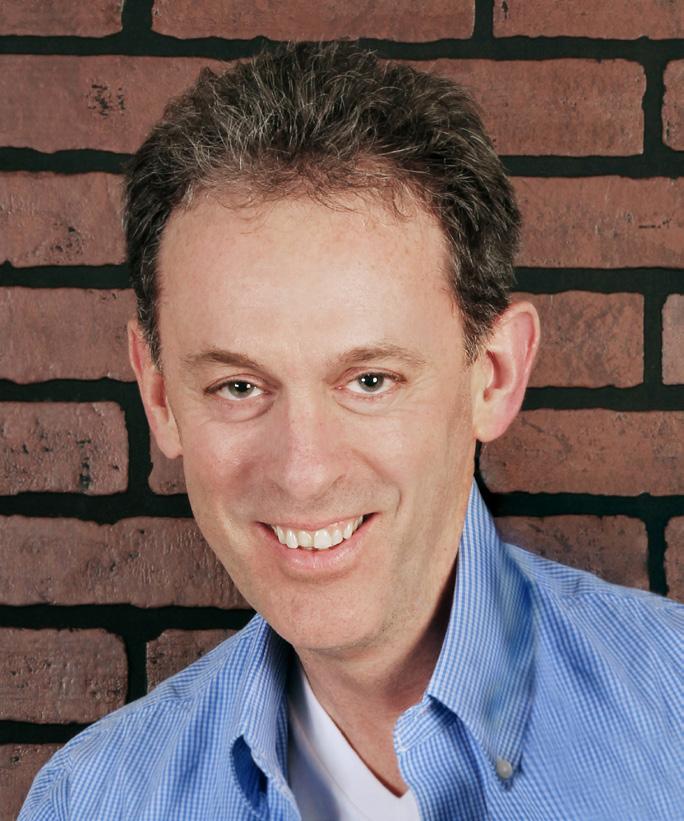
“I truly believe that I owe much of my success to the United States Air Force,” says Eric Sweet, vice president of construction management at Life Storage. “My military service was the foundation that guided me through life. I joined the Air Force at nineteen years old, and I completed my service as a young man with new skills, discipline, respect for authority, and the belief and ability to earn success based on performance.”
Sweet, the son of an Army veteran and a schoolteacher, served from 1981 to 1986 as a heavy construction equipment operator and member of the prime base engineer emergency force. He was expected to deploy at a moment’s notice, and when Hurricane Iwa hit Hawaii in 1982, he got the call.
“The Civil Engineering Squadron asked for three volunteers from the heavy
equipment shop to work through the hurricane and keep the base clear for emergency vehicles and respond teams,” Sweet recalls. “I didn’t even blink an eye when they asked for volunteers—I worked with my fellow airman right through the eye of the hurricane. Getting through the eye wall is the dangerous part, as is exiting the eye.”
It took a hard month to recover from the damage of Hurricane Iwa. “That’s what’s so rewarding about being a member of the Air Force,” Sweet says. “It allows you the opportunity to achieve things you once never thought you would be able to.”
Awarded the Air Force Commendation Medal in part for his work during the hurricane, Sweet was determined to give back to the military even after completing active service. For two years after returning home, he served as a “weekend warrior” in the NY Air Force National Guard while earning his associate’s degree in civil engineering at
Eric Sweet, who began his career in the Air Force, credits much of his success—including his rise to VP of construction management at Life Storage— to that early military training
SUNY Erie. He continued his education at night to earn his bachelor’s degree in industrial engineering technology from Buffalo State University at New York.
“Growing up, I never really thought I was ready for college. I was unsure if I would excel in a college environment,” Sweet says. “But when I left the military, I had the courage, confidence, and the drive to go to college and to further my career.”
In 1986, Sweet secured his first construction project as a civilian. He applied his military experience and degree to one of the most important and biggest, construction projects in Buffalo, New York, in the late eighties: a baseball stadium. “To be able to be part of the Buffalo Bisons’ minor-league baseball stadium project at the start of my civilian career really paved a wider path for me,” Sweet says.
Following the completion of the stadium, Sweet went on to serve as a project manager, director, or executive for a number of notable projects, including the 2002 World Cup stadium in South Korea, the Pentagon Renovation project, and a US Federal Courthouse in New York.
“To be able to use my military experience to work on sites like the Pentagon and the Federal Courthouse, I really felt I was giving back to our nation what the Air Force had given me,” Sweet notes. “Being one of the leaders in a construction management role was like being the sword and shield for the respective government agencies.”
Sweet found another organization in June 2014 that he could give his whole self to: Life Storage, where individuals truly earn their leadership by the respect of their people. The first-rate national storage company is renowned for its customer
service, and Sweet felt that, like the Air Force, it was an organization he could give back to.
“I used to believe that most companies were composed of A, B, and C players. After coming to Life Storage, I truly believe that you can have all A players,” Sweet says. “It largely depends on the corporate environment that the leadership creates, and the employees, in turn, promote.”
According to Sweet, Life Storage is a place where employees want to come to work—a place that provides excellent mentorship and professional growth opportunities, and a place that truly allows its employees the latitude to balance family and work.
“They understand that we all have times in our personal lives when we have special occasions or challenges at home, whether it’s the death of a loved one or the birth of a baby,” Sweet says. “We respect family values as much as we do corporate values. We don’t call our office the corporate office; we call it the home office.”
Because of the home office environment at Life Storage, Sweet says, employees remain invested and engaged. “I’ve been here nearly six years, and very rarely, if at all, do I hear an employee say ‘no,’” Sweet remarks. “When you ask if somebody can help you with a task, they pitch in to help you out.”
Sweet gives back to the company by not only leading and mentoring his team but also working hard to preserve and promote the culture he has seen since his first day on the job. “The culture here brings success to the employees of our company and to the customers we serve,” he says, “but also to the broader business of the selfstorage industry.”
COMMERCIAL PROJECTS (office, retail, industrial)
INSTITUTIONAL PROJECTS (churches, educational)
SELF-STORAGE INDUSTRY (climate and non-climate controlled)
RESTAURANT INDUSTRY (fast food and fine dining)
Stinard Architecture, a full service architectural firm, listens to its clients and provides a quality product at a reasonable cost.Its service-oriented approach to the practice of architecture addresses the goals of the client in the context of responsible architecture that enhances the built environment.
217 South Erwin Street
Cartersville, Georgia 30120
770.425.7400 (F) 770.425.7444
stinardarch.com

When I started my career, I thought I had it all figured out: I was going to major in computer science and get a job at Hewlett-Packard (HP), Microsoft, or Apple.
did it take? How could I bring the same to the companies I worked for and into the recruiting process?
As Told to ZAYVELLE WILLIAMSONMy first job after college was working at HP—not in software development or hardware, but in recruiting. That job didn’t align with my studies or the path I had carved, but I threw myself into it nonetheless. As it turned out, I not only enjoyed it but also was really good at it. Ten years later I found myself responsible for leading a team recruiting more than four hundred people per month. Who knew that role would take me to Tesla, biotech start-up Nevro, and luxury online consignment store
The RealReal?
I have always been fascinated by truly innovative companies that deliver great products and create a loyal customer base. I wanted to know how they were built. What
Initially, I thought that all you needed to do was hire the best of the best, pay them well, and the rest will take care of itself. Simple, right? So I did just that. I needed to understand what it meant to hire best in all key domains: product development, engineering, sales, customer service. After that, I could crack the code on how to find and hire those people and consequently, build a great company. Working with some of the most established companies, such as Kellogg and US Cellular, made me realize that reality was not so simple.
We built an innovation and technology hub and followed the same hiring formula. We hired the best of the best for big data and insights. Over time, it became obvious that it was not enough. We did not see any breakthrough products. Our market share continued to be stable at best, and there
Thiago Silva on his passion for building organizations and cultures of innovation and excellence

was nothing big that we could attribute to our hiring process. Something was missing.
It wasn’t until I worked at Tesla that I understood how innovative cultures strategically embrace diversity. That innovation culture was present in all areas of Tesla, and it served as a guiding principle for all of our recruiting decisions and strategy. This was a critical factor that let us scale Tesla’s Energy division, previously known as SolarCity, from 3,400 to 13,000 employees in 3 years.
It all looks like smooth sailing now, but when we were in the thick of it, there were many mistakes and many aha moments. When we expanded into Mexico, for example, most of our US recruiting team did not understand the language, culture, or the legal differences.
So what was that secret sauce for an innovative culture? I found it to be three things:
1. A vision that unites people around a common cause. Different people are driven by different things. Some might be inspired by renewable energy, like we were at Tesla Energy; some by building new cars, some by healing people. Finding that match when hiring is as important as testing for skills and abilities.
2. A place where it is OK to make mistakes, but unacceptable not to learn from them. If you are moving fast and doing something new, you are bound to make mistakes. The key is to be transparent about them, fix them right away, and find solutions so that mistakes will not happen again in the future.
3. Provide the freedom for employees to bring their whole selves to work. Admitting mistakes feels scary, and nobody is immune to that. You cannot create a culture of admitting mistakes by just telling people to do so. You have to lead by example and separate evaluating mistakes from judgment. This requires an inclusive environment, one that allows people to bring their whole selves to work and allows people to work on what needs to get done. This way, all creative energy can be focused on executing the mission of the company.
Cultures that have those three elements will always out-execute companies that lack transparency, punish employees for mistakes, or prioritize short-term gains.
These factors create a place where people love working for and are free to do the best work of their lives.
That is why Watermark’s mission is so important to me. Watermark is the largest women’s membership organization in the Bay Area, and its mission is to increase the number of women in leadership positions by empowering its members to make their mark in their companies, careers, and communities.
I believe that many of the best executives are women, and having diverse leadership builds a culture that focuses on results. In the current climate, this is more important than ever because such focus allows us to raise above insignificant personal differences.
It allows us to come together around a common cause, be it a pandemic or any other difficult issue.
I always remember that great people come from all backgrounds. Looking past gender roles and allowing people to be themselves is super critical to innovation. Employees will not only grow in their career but also bring different perspectives and pay back with full focus on the results.
My advice to young professionals is that opportunities don’t look like opportunities. Throw yourself into it, give it your best—you may realize that you are really excellent at it. Look for companies that allow you to bring your whole self to work, for those are the places where you will flourish.
Dee Childs is a student of philosophy. As a young woman, she had a “strong sense of adventure, grit, and a little bit of rebelliousness” about her.
“I ran away from home when I was eighteen, and I moved to England to study philosophy, Roman and Briton archaeology, and art—you know, primarily the humanities. I never dreamed that I would be in IT; that was the furthest thing from my mind,” Childs recalls with a laugh.
After pivoting toward an interest in programming and landing roles at several universities, Childs is now at Texas A&M University, leading cybersecurity efforts and multicloud strategies as vice president of IT and chief information officer.
Though her studies in philosophy fulfilled a personal interest, Childs found it difficult to start a career after college. “It turns out that I was absolutely I was unemployable,” she says with a laugh. Childs then cycled through an assortment of odd jobs. “I went and picked
draws on her personal passion for philosophy to excel in the information technology function
apples in Wisconsin, I cleaned people’s swimming pools, I worked for some lawyers, I sold vegetables out of a truck,” Childs lists. “I even had my own one-person dairy farm.”
Then, one day, a friend of Childs called her up with a proposition. The friend was starting her own business and required a secretary. Childs obliged and began that job, which led to responsibilities that required getting familiar with a computer. Intrigued, Childs found herself faced with custom codes and a need to understand them in order to be able to troubleshoot or problem-solve.
“Very quickly, I was able to pick up and understand this code. It just felt logical to me,” she explains. “One day, I picked up a manual and said, ‘I bet I could write one of these programs,’ and I could. I could make the computer sing and dance for me.”
Her newfound interest in programming led her to return to school and pursue information technology as a career. When
Childs graduated for the second time, she didn’t have the same trouble getting hired as before.
“Pretty soon after I was offered a job and became the first female in a teeny IT office that was part of a biomedical firm,” she says.
This was the beginning of a career that complemented her aforementioned sense of adventure and combined her first love, philosophy, with her later interest in technology.

“I think that has been part of the key to success in my career: a bit of fearlessness and a bit of that philosophy that says everything is founded on asking questions and discovering solutions,” she reflects.
Childs built her information technology expertise within the higher education space with roles at Indiana University, Louisiana State University, and the University of
Alabama–Huntsville before landing her current role at Texas A&M about three years ago.
As VP of IT and chief information officer, Dee is focused on carrying out “the respectful mission at the university, which is to care deeply about people’s privacy and what that means to them.” When it comes down to it, Childs is in charge of cybersecurity efforts and multicloud strategies for the university, and to Childs, this aforementioned mission “extends into protecting the intellectual data assets of the university.”
For example, when the university conducts medical research or research on water quality or agriculture, the intention of the university is to use this research in a beneficial way.
“If the wrong people have access to our research, it limits our impact,” Childs explains. “This isn’t always particularly at the front of people’s minds, but we have to protect these precious intellectual properties, and that’s why cybersecurity is so important.”
In addition to heading the university’s cybersecurity efforts, Childs is also focused on initiatives such as Aggie Cloud and Next Generation Aggie. “The idea with Aggie Cloud is to provide an excellent shared service for the campus composed of virtual

servers and storage environments,” she says. “The benefit of that environment is that we can achieve those higher levels of privacy and cybersecurity.”
Childs’s leadership of Texas A&M’s cybersecurity efforts draws praise from Palo Alto Networks’ Mary Lou Prevost. “She has assembled a highly competent and capable team and empowered them to make her cybersecurity vision a reality,” says Prevost, vice president of SLED for the western region of the US at Palo Alto. “Her passion for mentoring the next generation of leaders is unmatched.”
Within a male-dominated field like IT, Childs is an advocate for mentoring women working in the IT function. “I try to be empathetic with other women, and I want them to be successful in whatever way that is meaningful to them,” she explains, “but if I see something as an obstacle for other women within this field, I feel as if I can offer myself to provide guidance and advice.
“The beautiful thing about this, beyond helping women in my field,” she continues, “is I have developed lifelong relationships.”
This past year, Childs started a mentorship program for IT professionals at Texas A&M. “I love seeing people make meaningful connections,” she says. “It’s wonderful to be a part of it.”
Changing currents in business require skilled talent able to chart a course for success. That’s why KPMG is proud to honor outstanding leaders in their fields as they advance to even greater achievements.
“If I see something as an obstacle for other women within this field, I feel as if I can offer myself to provide guidance and advice.”
DEE CHILDS
Melissa Gray calls herself an indecisive person. Luckily, with a law degree, she has the freedom to explore different outcomes and options. It lets you find what you’re passionate about, she says.
After earning her bachelor’s degree in international relations at Florida State University and her JD at Florida Coastal School of Law, Gray worked at Kastl Law and Fears Nachawati Law Firm. She then joined Klemchuk LLP in 2014 to focus on a variety of matters related to IP portfolio enforcement and business and corporate transactions.
“With her IP management skills and business experience spanning a variety of industries, she will bring great insight to the team,” said Darin Klemchuk, managing partner at Klemchuk LLP, in a press release announcing her hiring.
For the next two years, Gray helped manage the firm’s domestic and international trademark docket, represented midsize to large businesses in transactional and general counsel matters, and built her skill set before moving in-house in 2016.
Now, Gray is associate general counsel at PrimeSource Building Products, one of the
Melissa Gray has built a successful legal career by exploring her interests and stepping outside of her legal role
largest distributors of building materials in North America. The Irving, Texas–based company has thirty-five distribution centers and 1,200 employees across the United States and the Caribbean. Some of PrimeSource’s key products include nails, collated fasteners, concrete accessories, building accessories, and wire fence products, with distribution centers stocked with a vast array of items geared toward the market they each service.
While she joined the company hoping for a role that was more IP based, Gray has found herself working under dedicated people who encourage her growth and practice areas. She has a bigger platform to engage with colleagues outside of the legal department and the energy to collaborate with business partners.
Her current role has her managing and coordinating in-house and external counsel with governance, regulatory compliance, intellectual property, distribution and strategic partnerships, import sourcing, trade, and other legal matters, not just for the United States but also globally.
Gray’s goal is to streamline the department’s processes, making them more efficient and compliant. She also gets more
www.mowrygrimson.com
into the operations side in her role by configuring the contract management platform, something that doesn’t usually happen in the classic general counsel role. One project was the implementation of the legal and compliance operation software platforms, which deals with matter management, contract life-cycle management, and compliance issue management and reporting. She transformed the website to make it easier for customers to understand policies and ask questions.
In 2018, the company awarded Gray the PrimeStar award for outstanding achievement, recognizing her for the implementation of the contract lifecycle management software as well as the creation and implementation of the compliance program.
Her advice to those looking to follow in her footsteps is to listen more than you talk. The most success Gray has found in solving problems is when she understood where someone else was coming from and where it fit into the bigger picture. By building her expertise and being willing to step outside of the typical counsel zone, Gray has become a much more effective in-house counsel.
Mowry & Grimson is proud to join in recognizing our friend and client MELISSA
GRAY for her ongoing contributions to PrimeSource’s success.
MOWRY & GRIMSON : Trusted specialists in international trade and customs law.
“When you’re looking back on your career, you can create a nice, tidy story in your mind where everything seemed planned out. But as you’re actually going through life, it doesn’t work that way,” remarks Stephen P. Theobald, executive vice president and chief financial officer at Walker & Dunlop. “The reality of my life and my career is a lot messier than it looks from the outside.”
Messiness aside, the reality is that Theobald has spent the better part of the past
By SARA DEETERthree decades working in some of the most coveted roles in the finance industry, first as a partner at a leading accounting firm and later as a senior vice president, executive vice president, and chief financial officer in the in-house departments of Capital One and Hampton Roads Bankshares.
But according to Theobald, he learned many of the life lessons that have been most critical to his career success years before he even enrolled as an accountancy major at the University of Notre Dame.
“I’m the oldest of eight children in a family of relatively modest means, and
as the oldest, I learned certain responsibilities pretty early on,” Theobald recalls. “The importance of being focused and goaloriented have stayed with me throughout my life, both from a personal perspective and a professional one.”
After graduating from college in 1984, Theobald says, he had only one goal in mind: become a partner at one of the big eight US accounting firms. Every step that he took early in his career was an opportunity to learn, grow, develop, and move further toward that goal, Theobald says, including his decision to deviate from the traditional
Stephen P. Theobald on how he built his career in nance and how he’s approaching two big challenges he faces today at Walker & Dunlop
 Stephen P. Theobald EVP and CFO Walker & Dunlop
Bryan Blanken
Stephen P. Theobald EVP and CFO Walker & Dunlop
Bryan Blanken
accounting firm career track and accept a fellowship in Washington, DC, in the middle of his public accounting career.

“But once I went back to my firm and made partner, I just went, ‘Okay, now what? I’m not going to be doing this for the rest of my life; I’m only thirty-three years old,’” Theobald recalls. “I needed a new challenge, and a new goal, and I decided that I wanted to become CFO of a public company.”
Theobald joined Capital One in 1999 as senior vice president of finance and ended up staying there for more than eleven years. “At that point, Capital One was a relatively small company compared to the institution that it is today,” Theobald points out. “I had so many opportunities to learn about managing an organization—and managing people.”
In 2010, when he joined Hampton Roads Bankshares, Theobald achieved his goal of becoming CFO. But he has by no means been in want of new challenges and goals since then.
Theobald has served as EVP and CFO at Walker & Dunlop for seven years now, during which time he has helped build out the financial services provider’s marketing department as well as its servicing group. In fact, in the time that he has been with the company, Walker & Dunlop has increased its market capitalization from $700 million to approximately $2.5 billion right before the coronavirus pandemic.
“The focus for me is always on overall company success,” Theobald says. “It’s been a blast to have been here during all of that
“If you grow up humble and treat everybody respectfully, that makes you a people person too.”
STEPHEN P. THEOBALD
growth, but for me, the question is always, ‘How do we continue to drive that growth in the future or during difficult times in the economic cycle?’ And at the same time that we expand our portfolio, we need to ensure that we continue to provide excellent service to our customers, on both the front end and the back end.”
To ensure this customer-minded growth, Theobald works closely with the internal finance, servicing, marketing, and investor relations teams at Walker & Dunlop as well as with the company’s external partners. But that work does come hand in hand with two significant challenges, Theobald reveals.
Firstly, Theobald notes, is his “bias towards decision-making. Especially earlier in my career, I used to be that kind of person who would just tell people what to do—because at that stage of your career,
you’re rewarded for your own individual ability to drive results.
“But as you progress,” the EVP continues, “you get rewarded for the great work done by the people who are under your direction. That’s one of the hardest transitions you can face in your career: you have this misguided belief that you can do something better or faster than one of your team members—but if you jump in and do it yourself, you’re depriving them of the ability to learn and grow.”
When helping to lead the critical, companywide risk management programs elicited by the COVID-19 pandemic in early 2020, he stressed the importance of identifying the areas where one can make a true impact. There are so many unknowns, and it is tempting to channel energy into trying to solve the unsolvable. Instead, Theobald notes that his biggest takeaway from the crisis is to
relinquish the illusion of control and focusing on attainable positive change.
“We’re proud to call Steve a client and to provide Walker & Dunlop with critical capital and banking services,” says John Wolff, CRE Real Estate Market Executive for Bank of America. “He is a true leader who inspires and empowers his team, and we thank him for the partnership.”
On other initiatives, such as Walker & Dunlop’s new What Drives You ad campaign, Theobald makes a point of asking questions so that others can reach conclusions on their own.
“I see my role in this campaign as that of a steward, working on behalf of the CEO to help steer the marketing team,” he says. “It’s sometimes a challenge to let go of the reins because every day there is so much going on and so many key decisions that have to be Bryan

made. But I always remember that even the worst micromanagers I’ve worked for have never known everything that was going on, as much as they tried to.”
Christopher Small has worked with Theobald for the better part of ten years, and notes that he is consummate professional in every sense. “His approach to his craft and the manner in which he treats his colleagues and business partners is always with utmost integrity, honesty, and transparency,” says Small, head of diversified financials for FIG Corporate and Investment Banking at Wells Fargo. “I’ve always been impressed with his poise and calm in difficult times and how he is grounded during the best of times.”
The second challenge Theobald faces every day at Walker & Dunlop is far more personal, and in some ways, more difficult to address.

“By nature, I’m really more of an introvert—I’ve never really liked larger social settings,” the EVP admits. “But early in my career, I realized that to be successful, you have to be able to work a room. You have to be able to speak to a large audience. So I intentionally volunteered as an instructor for new staff members, which put me in front of a group of about thirty people.
“Talking to them about the ‘latest and greatest audit issues’ was a way for me to
begin overcoming that fear,” Theobald recalls with a chuckle.


Now, of course, Theobald works with people all the time. “Whether he’s empowering his staff or applying empathy and integrity to key business practices, it’s easy to see how Steve’s thoughtful leadership makes a daily impact at Walker & Dunlop,” says John Harvey, senior vice president for PNC Real Estate.
But even today, Theobald notes, socializing is not necessarily easy. “When I have to go to an all-day investor conference and talk to people for eight straight hours, those are the most exhausting days for me,” he says. “But I’ve worked hard at being as comfortable as I can in those settings.
“And maybe I’m not a gregarious, backslapping kind of guy,” Theobald adds, “but I do treat people well at all levels of the organization. And I think that if you grow up humble and treat everybody respectfully, that makes you a people person too.”
“The importance of being focused and goaloriented have stayed with me throughout my life, both from a personal perspective and a professional one.”
STEPHEN P. THEOBALD
Wells Fargo Corporate & Investment Banking (CIB) is the trade name for the corporate banking, capital markets, and investment banking services of Wells Fargo & Company and its subsidiaries, including but not limited to Wells Fargo Securities, LLC, Member of NYSE, FINRA, NFA, and SIPC, Wells Fargo Prime Services, LLC, Member of FINRA, NFA, and SIPC, and Wells Fargo Bank, N.A. Wells Fargo Securities, LLC and Wells Fargo Prime Services, LLC, are distinct entities from a liated banks and thrifts. © Wells Fargo Bank, N.A. All rights reserved. Member FDIC.IHA-


Over the past twenty years, Sid Srivastava has grown tremendously during his career in human resources; today he serves as chief human resources officer and senior vice president of human resources for Cinemark, one of the largest movie theater chains in the world. But when he was growing up in India and considering his career options, Srivastava did not have the technology and key resources that are available to students today.
“When I was a student, there was not the library of knowledge available on the internet like there is today, so I relied heavily on conversations with those around me to learn what I did and did not like about different degree paths,” he says. “These conversations about careers, both with professors and other students, made me believe that HR was the right path for me.”
Since beginning his career at Coca-Cola in 1999 as a management trainee in Mumbai,
India, Srivastava has positively affected the lives of both employees and their families, which he calls his greatest source of inspiration, motivation, and satisfaction. After spending seven years with Coca-Cola, he took a position with GE in Bangalore, India, transferred to Atlanta to lead global HR for a corporate function, and then went to Dubai to become the company’s regional talent leader for the Middle East, Africa, and Turkey region.
“In this role, I had the unique experience of building an HR team across eight different countries,” Srivastava says. “It was fascinating to learn about each different culture and better understand the motivation that drives teams and employees. After three years in Dubai, I moved back to the US in a global product line HR leadership role managing HR teams and employees globally.”
A major turning point in his career was a meeting he had with Mark Zoradi, an entertainment industry veteran who had recently been appointed Cinemark CEO. “Though he
Cinemark’s Sid Srivastava believes a great guest experience begins with a great employee experienceSid Srivastava SVP and CHRO Cinemark
is the CEO of the third-largest entertainment exhibitor, he was incredibly humble, approachable, and honest throughout our entire meeting,” Srivastava says. “Mark’s articulation of the vision for Cinemark was very clear, and I felt an instant connection with him and to the company. After that meeting, I knew I had to join the team.”
In the cinema industry, Srivastava says, there is a mantra: “A great guest experience begins with a great employee experience.” So while he looks to attract candidates who can drive a memorable guest experience, he also wants employees to feel that they work for a modern company with an outstanding culture and easy-to-use systems.

Technology is a big part of that: he explains that Cinemark strives to use the latest tech to innovate not only the moviegoing experience but also the employee experience. “I firmly believe that effective use of technology addresses two key business imperatives,” he says. “First, it encourages an improved employee
experience, elevating the guest experience, which in turn drives top-line revenue. Secondly, it improves the bottom line due to much higher levels of productivity.”
Cinemark recently started implementing Workday software as its human capital management (HCM) system, and Srivastava could not be happier with the decision. “We are currently in the initial implementation phase of this new system, and the teams are already visualizing the unlimited possibilities that will come with it, including enhanced employee experience, and employee engagement,” he says. “The new system allows managers to see employee data in real time, which encourages them to act quickly and make better team-based business decisions.”
Additionally, the company is investing in a new state-of-the-art labor scheduling software that will allow employees, a majority of whom are Gen Z and millennials, to manage their work schedules via their mobile devices without logging into a computer.
“The ease of doing work is what drives the employee experience, and I am thrilled we are able to provide this to our employees,” Srivastava says.
Cinemark uses cutting-edge technology not just to help its employees, but also to facilitate the hiring process. “We utilize multiple software platforms that provide superior candidate experience during the entire hiring cycle, from the time they apply on the job site to the time they get hired,” Srivastava says. “Part of a positive prospective employee experience is ensuring consistent and extensive employer branding. We partner with best-in-class social media companies to amplify our online and digital presence, showcase why Cinemark is a great place to work, and improve our reach to the candidate pool.”
This year, Cinemark launched a microlearning platform called “Aspire On Demand” in partnership with Cornerstone, curating programs especially for employees. “Based on the critical learning needs, my learning
and development team handpicks microlearning courses and puts them in a playlist form,” Srivastava explains. “Instead of employees searching thousands of online courses, they just need to go to a topic like ‘problem solving’ and then simply go through the playlist at their convenience. We are already seeing a very high adoption rate of our microlearning platform compared to industry averages.”
Srivastava is personally proud of the recently launched Cinemark College Assistance Program because it touches the lives of employees and their families in so many ways. The program provides full-time employees in the US who’ve been employed at Cinemark for at least a year with the opportunity to get a bachelor’s degree if they don’t already have one. The number of employees enrolled in this program has more than doubled since the launch of the program.
“After vetting several colleges across the country, we decided to partner with the
University of North Texas (UNT) to build and run this program with us,” he says. “We have courses that are highly relevant to the employees and will also help them further their careers within Cinemark. The feedback from our employees about the program and the administration is top notch.”
Employee advocacy is also an important aspect of his role. “Mark [Zoradi] truly appreciates the people perspective that I bring to the table during critical business decisions,” Srivastava says. “I work tirelessly in collaboration with our entire Cinemark leadership team to ensure that our employees feel heard, valued, and know they have the opportunity to continually develop.”

“I work tirelessly in collaboration with our entire Cinemark leadership team to ensure that our employees feel heard, valued, and know they have the opportunity to continually develop.”
SID SRIVASTAVA
Brendan Malley had his work cut out for him when he joined QBE North America in 2011 as vice president and assistant general counsel. For one thing, the litigation function he currently enjoys didn’t even exist at the time.
To solve the problem, Malley had to build QBE North America’s litigation team from the ground up. Nine years later, as senior vice president and head of litigation, he oversees a team of eight lawyers and three paralegals—all but one of whom he personally hired.
“I’ve been an attorney for quite a while,” Malley says, “and when you have experience in any field, you get to know the players and know how to play the game.” Prior to being hired at QBE, Malley spent fifteen years at New York law firm Mendes &
Mount (“I was a bit of a solo practitioner,” he notes of his time there), then six years at AIG as an associate vice president. By the time he came to QBE, he already had a strong foundational understanding of the intricacies of corporate insurance law.
Malley immediately understood that he needed to build out the company’s litigation function in a way that had never been done before. His first task was to find the right people. He sought out fresh talent to fill the roster: lawyers who, according to Malley, “lived, breathed, and loved insurance law.” He needed experienced legal professionals who relished the chance to fix problems and who fit well with the dynamics of a closely integrated legal team.
Malley was also cognizant of the need to create a working environment for the team that was collaborative but also allowed for independence. “It’s really important to me
At QBE North America, Brendan Malley restructured the company’s litigation function into a collaborative, centralized, and vital part of the business
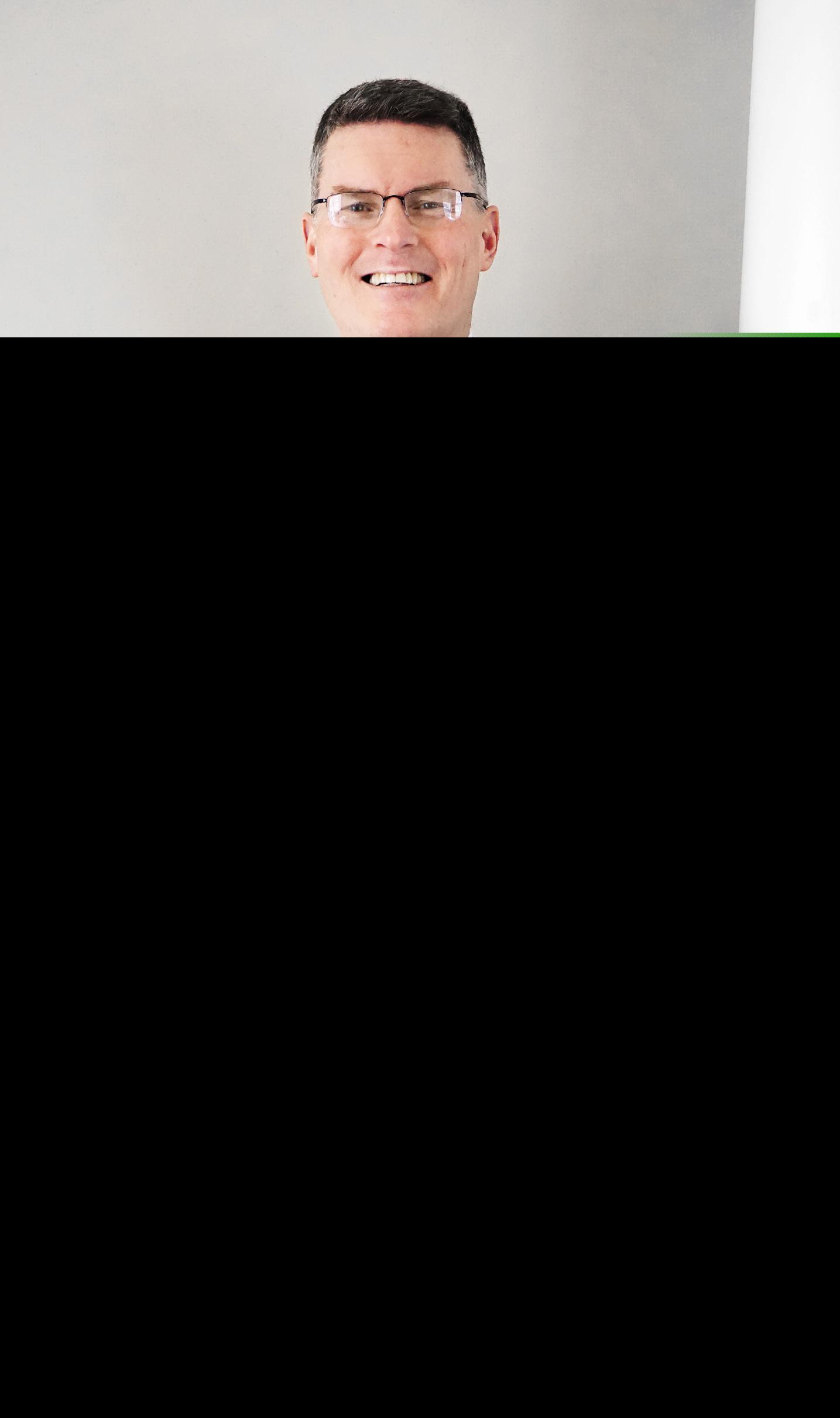
that we talk about our issues and cases,” says Malley. “A lot of what lawyers do isn’t black and white; it’s gray. So you need to bounce ideas off people.”
That also plays into his leadership style with the team, which is collaborative and transparent. “To the extent possible, we try to solve problems together. I don’t need to hand-hold the lawyers on my team,” he says. “I don’t want to, and they don’t need it.”
Apart from building the team, Malley also had to “carve out territory” for his team, which involved not just establishing the specific tasks they would work on but getting buy-in from key stakeholders and then requiring other departments to send those issues to his team. “It took a little bit of time, but we were steadfast and soon developed a good cadence throughout the organization,” he says.
Over the course of the next three to four months, Malley built a strong bench of competent, personable lawyers, a cohesive team around which much of QBE’s legal activity centers. Together, they’re responsible for all disputes and litigation that involve the company. They also handle all coverage opinion work on every insurance policy that the company writes across the United States.
Since Malley built his team, extracontractual lawsuits against the company have dropped by more than 70 percent, and the amount of money spent on outside lawyers has been reduced by millions of dollars. Indemnity payouts have also dropped
“When you have experience in any field, you get to know the players and know how to play the game.”
BRENDAN MALLEY
significantly. “Since we’re doing a lot of the work in-house now, as opposed to hiring law firms to do it, the savings we’re achieving is in the millions,” Malley says.

One preventative measure Malley’s team has taken involves instituting postmortems on matters referred to them so that they can identify any larger problems and craft strategies for mitigating and fixing risks. QBE has always done this after adverse results, but starting last year, Malley’s team has spearheaded postmortems for most every case, regardless of outcome.
Of course, there is always more to do and one of Malley’s recent projects is to better coordinate how the company creates law. “We have lawsuits going on all the time,” Malley says, “and when we defend a client in a case, we’re potentially creating law every day.”
Recognizing this potential, Malley has begun an initiative where all appeals will go through a centralized process, in which department heads and executives will talk about issues in new cases and their broader legal implications. “Do we actually want to pursue that strategy and those arguments?” he says as an example. “Because if we do that, we might risk creating bad law.”
While there is still more work to do, Malley’s extremely proud of the legal team he’s built over the last few years at QBE. His advice for other general counsel looking to build a team from the ground up? “Subjectmatter expertise and fit are the two most important things,” he notes. “Find people who know their area and you can count on to deliver in that area.”
Established in 1979, Lewis Brisbois is a national, full-service law firm with more than 1,500 attorneys and offices in 52 cities and 29 states. Our practice is sophisticated, multifaceted, and well-versed in current legal trends, while our individual state practices provide vast resources and knowledge of procedural and legal nuances.


Brendan Malley: von Briesen & Roper s.c. congratulates you on this well-deserved honor! We are proud to partner with you and to work with QBE to achieve great results for all of its stakeholders. We look forward to many more years of partnership! Again, congratulations.


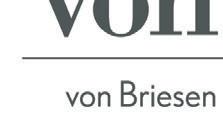
Global food and beverage supplier Tate & Lyle is grounded in history. More than 160 years old, the company not only is one of the early members of the London Stock Exchange but also holds a Guinness Record as Britain’s oldest brand. As vice president and global head of tax, Lawrence Pociask has found a delicate balance between helping to forward the company’s long line of iconic work while using cutting-edge technologies to carry the company into the future.
Pociask’s own history in the tax profession began twenty years ago with his role as an “all-arounder” at Ernst & Young,
where he was responsible for “looking after all aspects of the tax life cycle.” But soon, Pociask’s talent earned him an opportunity to do a rotation at the firm’s national office in Washington, DC.
“It was a thought leadership role,” Pociask reflects. “I worked with folks at the IRS, the Treasury Department, and folks on the Hill—when any new regulations or statutes or significant court cases came out, I needed to analyze them, put alerts out to our offices, and help brainstorm for our go-to-market strategy.”
And in the mid-2000s, that combination of vision and technical depth propelled Pociask to one of the firm’s most cutting-edge
Tate & Lyle has a long legacy in the food and beverage business, but as Lawrence Pociask knows, that doesn’t mean the company can stop evolving
areas of work: technology. Pociask took on a role in the firm’s EMEIA Tax Centre focused on tax technology.
“I was looking for opportunities to utilize technology to deliver tax services in different areas of Europe,” Pociask recalls, “opportunities to use technology to streamline the asset review process in Germany or make a research and development tax credit study in the UK more efficient. That sort of work is commonplace today, but back then it was forward-thinking and really exciting.”
Even after coming back to the United States and accepting an in-house role at Tate & Lyle, Pociask continued to push the boundaries of tax functionality.
“The company was moving their headquarters to the Chicago area at the time, so it was a truly unique chance for everyone in administrative support functions,
 Lawrence Pociask VP and Global Head of Tax Tate & Lyle
Lawrence Pociask VP and Global Head of Tax Tate & Lyle
including tax, to hit the reset button,” says Pociask, who quickly took advantage of that reset to present a new vision for the company’s tax function.
“We were previously viewed as being largely compliance-focused, but I wanted to become more of a trusted business advisor,” he recalls. “Most other business functions tend to be focused on today and on the future, but tax lives in the past as well as the present and future. We are the only people able to answer questions about something that happened seven years ago and in the very next breath field a question about tax rates in 2025.”
“As a result, we have a unique ability to provide best-in-class recommendations and forecasts to the business,” the VP continues. “We have a duty to help the company pay its fair share of taxes, but we also have a real capacity to act as advocates and partners
“Like many other companies, Tate & Lyle is very active in the community and encourages employees to take time off to volunteer,” explains Lawrence Pociask. “But one of the most meaningful experiences for me personally has been my involvement with an organization called Ladder Up, which helps lower-income individuals, or folks that don’t have the resources to seek professional financial help, to complete their tax returns.
“Taxes can be very complicated and intimidating, and this is a unique way for me to use my particular skill set to ensure that the mom with four kids at home and several different jobs gets the large tax refund she deserves.”
for the company as it enters new markets and considers growth opportunities.”
Today, Pociask constantly looks for ways to inspire that kind of advocacy and partnership from his teams. “Tate & Lyle has a long legacy,” he notes, “and it’s up to us to help continue that.”
And to Pociask’s mind, the best way to continue the company’s history of success is to embrace the most cutting-edge technological trends.
“If I were to look into a crystal ball to see the world twenty, thirty years from now, I would see a world in which everything that is done on a transactional level happens in real time,” Pociask says. “Some countries, like Brazil and Mexico, are starting to do that even now, but I truly believe that’s the direction for everyone.”
There are three main “megatrends” driving that future, Pociask explains: automation, systematization, and dashboarding. Tate & Lyle is currently going through a
number of efforts to automate and systematize their transactions, the VP says, ensuring a higher degree of accuracy as well as efficiency.
Dashboarding, Pociask notes, has the potential to affect far more than the mere operations of a company. Today, organizations across the globe are required to report their generated income, taxes, and payroll for each country in which they operated. By using dashboard technology, those reports can be integrated into a “social scorecard” showcasing an organization’s global operations.
“These days, businesses can receive a lot of criticism from the press and the public because they don’t pay income tax,” Pociask says, “but what people often don’t realize is that those companies pay millions and billions of dollars in payroll and property taxes. That money goes to fund governments, too. Social scorecards can help us tell the stories that aren’t being told.”
“We have a duty to help the company pay its fair share of taxes, but we also have a real capacity to act as advocates and partners for the company as it enters new markets and considers growth opportunities.”
LAWRENCE POCIASK
Steve Lyons played a part in #savethecrew to keep the Columbus Crew soccer franchise in Columbus, Ohio. Now, he has the chance to help it ourish.
By SARA VERDIIn late 2017, after twentythree years in Columbus, Ohio, discussions of moving the Columbus Crew soccer franchise to Austin, Texas, transpired. The club’s owner desired a move from their home base at Mapfre Stadium, an historic stadium

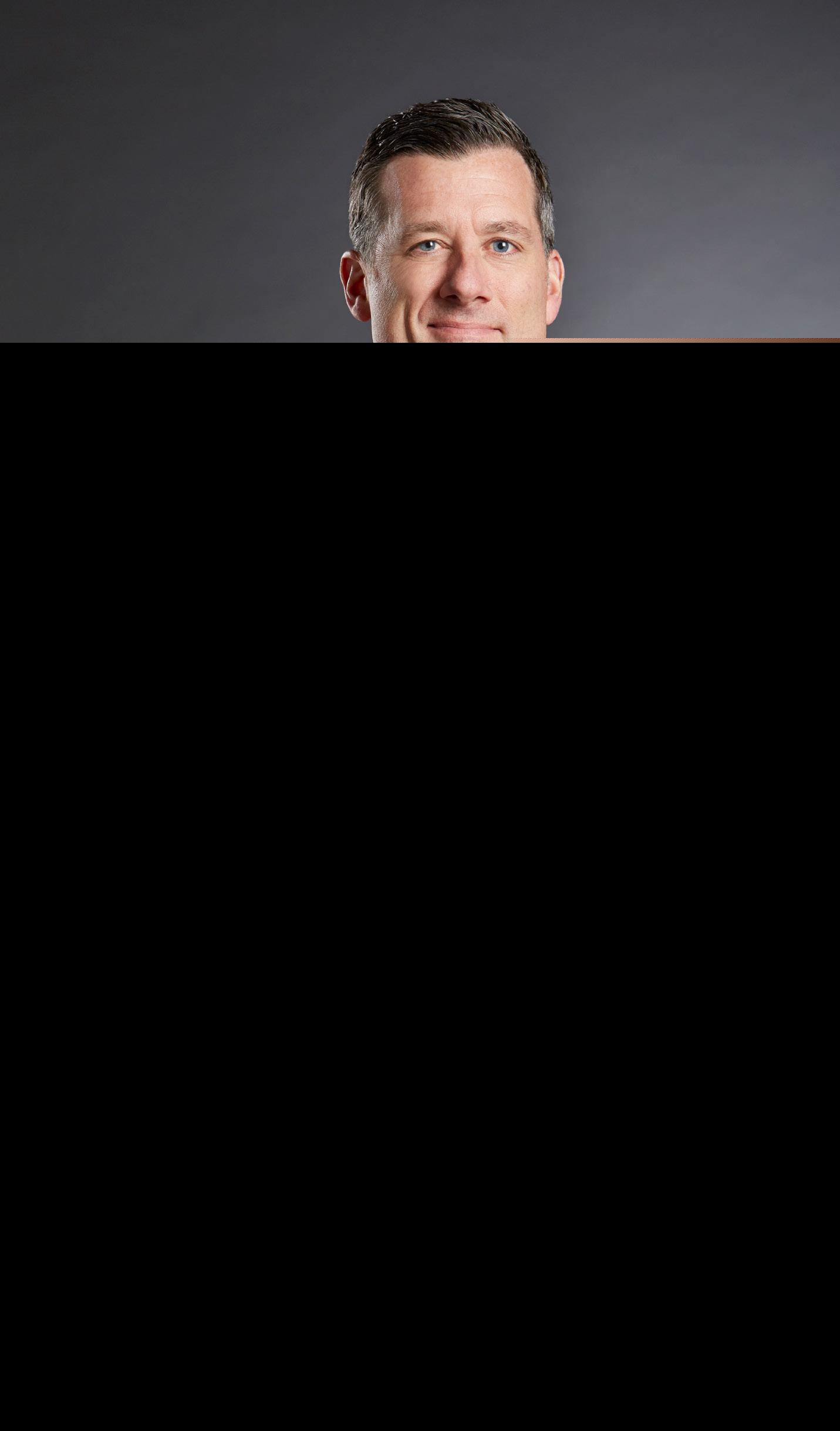
within Major League Soccer, in hopes of boosting attendance numbers and potential sponsorship deals.
A small group of Crew fans became aware of this plan of action and decided to take matters into their own hands. What started with a few fans gathering in a local bar to work out how they could keep the Crew in Columbus, soon turned into a fullblown movement: #savethecrew.
In addition to fans rallying to keep the team in central Ohio, Steve Lyons and the Columbus Partnership formed a plan from a business standpoint to keep the Crew from relocating. The Columbus Partnership is a collective of seventy-five of Columbus’ largest companies focused on economic and community development, as well as where Lyons used to serve as executive vice president and chief counsel.
“Myself and my boss were the drivers behind orchestrating all partners to come together to build a strategy to ensure that the Crew did not leave Columbus,” Lyons explains. “This became an economic imperative for us. As Columbus is a growing, global city, there were a lot of reasons why we didn’t feel like a team leaving the city was good for future growth.”
In the end, the collective efforts were successful. Through a series of legal victories and a transfer of ownership, the club was able to remain in Columbus. “The details are phenomenal. Talk about a coming together, a cadence of events, that happened in a spectacular way—probably in a way that you could argue that no other city would accomplish again,” Lyons says of the success of all parties involved in #savethecrew.
Throughout this process, Lyons was introduced to the new owners of the Crew, Jimmy and Dee Haslam, who asked him to step into his current role of executive vice president and chief business officer of the Crew.
“When I worked with Steve at the Columbus Partnership, I saw firsthand the difference Steve’s leadership made in
We have proven solutions that can solve even the most difficult staffing and recruiting challenges.
For over 20 years, lnnoSource has been putting passion to work for companies across the US. Our team cares about delivering best-in-class results for your business and your people.

You need the best people. No one can match our delivery.
our community,” says Chad Delligatti, CEO of InnoSource. “The Crew will benefit from these same strengths.”
In his new role, Lyons hopes to help mature the business and integrate the Crew further into the Columbus community. “The Crew has always had a fan base here, but it has never had a deep, entrenched connection to Columbus. My job is to grow the business and build a fan base that represents all that is Columbus and all that is soccer,” he explains. “Our fans are the reason why we exist.”
The organization is building a $300 million, state-of-the-art stadium in the heart of the downtown area in the hopes of appealing to the next generation of those calling Columbus home.
“We want to create an atmosphere or experience that people want to be a part of,” Lyons explains. “Columbus is home to 140,000 college students, and I want to tap into that young fan base to fill the stands now and to help build the next generation of fans.”
Another initiative that Lyons hopes to drive forward is the team’s corporate support base. “We just recently announced two of the largest partnerships in the history of the club with Nationwide for our jersey sponsor and Ohio Health as our official healthcare partner,” Lyons says.
Ohio Health will also have naming rights to the Crew’s practice facility. The club’s new
stadium has yet to find a partner for naming rights, but Lyons hopes to be a part of forging these new business relationships.
Beyond the business initiatives that he hopes to head up for the Crew, Lyons aims to make a point of appreciating what makes his job and this team exciting. “Every city has a sports franchise that they get to call their own, but no other city has a team or sports franchise that they can claim that they organically prevented from leaving their city,” Lyons says. “It’s almost like we’ve got this broad community ownership of the team.
“I always say that success has a thousand fathers, and in this case, it literally does,” he continues. “Saving the team was just the beginning. Now, we’ve got to build it into a successful model.”
For Lyons, there is a personal connection to his work at the Crew as well: it’s an opportunity to finish what he started.
“To be able to take a team from lost, to saved, to then building it into what we aspire to be—one of the top five teams in the MLS—as well as change the perspective of Columbus along the way,” he explains, “it’s really personal for me.”
With his dedication to aiding in the development of the city of Columbus, Lyons’s personal and business missions at the Crew are certain to flourish.
“My job is to grow the business and build a fan base that represents all that is Columbus and all that is soccer. Our fans are the reason why we exist.”
STEVE LYONS




Patricia Porter on “growing up” at Booz Allen Hamilton and the strategies that distinguish the company’s talent acquisition teams within one of the world’s most competitive markets
By SARA DEETERBooz Allen Hamilton has spent more than a century helping to solve some of the world’s most complex problems, from the US Navy’s preparation for World War II to the corporate merger that gave rise to the Super Bowl. And according to Patricia Porter, vice president of talent acquisition at Booz Allen, the company’s success is often due to one key group of people: the talent acquisition teams who comb through thousands of the most skilled, experienced, and talented job candidates in the world and narrow the
 Patricia Porter
VP of Talent Acquisition
Booz Allen Hamilton
Patricia Porter
VP of Talent Acquisition
Booz Allen Hamilton
search down to the one individual most capable of—and passionate about—driving the success of an organization.
Porter herself has made the success of Booz Allen a lifelong passion, joining the consulting giant in 1999 following her graduation from Marymount University and staying there to hone her HR skills for the past twenty-one years.
“I’ve grown up at Booz Allen Hamilton,” Porter says. “I joined the organization in an entry role, probably not much different from many other people who have just gotten out of college, and I’ve never had to leave the company in order to learn about new roles, new businesses, and new clients.”

Over the past two decades, Porter has had a few distinct career changes within the broader Booz Allen company. After working as a senior recruiter in Virginia for close to five years, Porter relocated to Atlanta to support growing businesses in the southeast and abroad as the midAtlantic/Southeast recruiting lead.
In 2013, she moved back to Virginia to serve as a senior recruiting manager and was subsequently promoted to engineering and science talent management lead, director of talent acquisition, and finally to VP of talent acquisition.
“I’ve always been willing to try new experiences—my father worked in the government, and we relocated several times during my childhood,” Porter says of her career transitions. “So I’ve always been very open to taking a new assignment, and that has certainly paved the way for my growth here at Booz Allen.
“But at Booz Allen, I wouldn’t be considered a particularly long-standing employee,” Porter goes on to add. “There are several of us that have been here for twenty years or more, and it’s because of the people we get to work with—people who are so smart and so passionate about what they do.”
However, with so many intelligent people—and so many strong personalities— all around, it is critical that you find your own authentic voice, Porter says. “When you get a seat at the table, you have to be able to take part in the conversation,” the James
VP emphasizes. “And I think that growing up as an African American and having a lot of different experiences because of my father, and then joining Booz Allen in my early twenties and growing up here as a professional, has helped shaped my ability to have the level of courage and support that I need to be a leader in the organization.”
And in her two years as VP of the talent acquisition function at Booz Allen, Porter has certainly demonstrated her talent as a leader, empowering her teams to deliver top-level talent to Booz Allen’s clients as well as ensuring that each and every team stays aligned with the company’s overarching business strategy.
“The business strategy is key,” Porter says. “We need to continually evolve our thinking about how we deliver to our clients, not just today but in the future. What is our growth plan? What type of talent will we need in future? What has changed as a result of market competition? We have to find a balance between sustaining what we have and building for the future.”
And that is no easy task, Porter says. There is no “secret formula” to achieving that balance—or to finding the ideal fit between a job candidate and organization.
“We are often looking for people to fill highly technical positions,” the VP notes, “positions which in many cases require government clearance or an ability to be on
the road 80 or 90 percent of the time. And on top of that, we have to be able to quickly identify, hire, and deploy that talent.”
Booz Allen Hamilton’s talent acquisition teams continually rise to meet that challenge, according to Porter. She credits this in part to the diversity of the teams themselves, which has “allowed us to address a variety of unknowns and be flexible in our approach to problems that are never one-size-fits-all,” but primarily to the company’s dedication to connection.
“It’s the relationships, first and foremost, that have made us successful,” Porter says. “It’s the relationships we have built within our teams as well as the relationships we have cultivated with our clients—it’s because of the relationships we have with our clients that we gain such an in-depth knowledge of their businesses, and it’s that knowledge that makes us a differentiator in the market.
“We truly understand the challenges our clients are going through and what they are trying to achieve,” the VP continues. “We work to deeply understand what the individuals that we hire are going to do within the organization, how they’re going to impact the organization’s mission, and how their work will ultimately affect the growth and success of the organization.
“Because it’s only when you have that level of understanding that you can find the exact right solution to meet a client’s needs.”
“We need to continually evolve our thinking about how we deliver to our clients, not just today but in the future.”
PATRICIA PORTER
Patricia Porter knows that there is more than one way to achieve success. As vice president of talent acquisition at globally renowned consulting company Booz Allen Hamilton, Porter oversees teams of recruiters who all take their own approaches to finding the most talented individuals the world has to offer.
By SARA DEETERBut no matter how a recruiter tackles that challenge, Porter says, everyone has a few key traits in common: a knack for communication, an expert ability to manage chaos, and an unshakable bond with those around them.
“If you came by our office, you would see a team that looks very busy but very organized,” Porter says. “People on the phone, candidates coming in and out of interviews, people working at their desks— and it all looks smooth on the surface, but like the proverbial duck, it’s pretty chaotic underneath.”
Porter and her teams conduct anywhere from two to three thousand interviews every
At Booz Allen Hamilton, Patricia Porter and her talent acquisition teams work constantly, ercely, and seamlessly to ensure that perfect match between a candidate and organization
Hear from three of Patricia Porter’s team members
“My recruiting style is relationship oriented. I have a strong belief if you can clearly understand what someone is seeking and can deliver on that need in an authentic way, success is realized. This requires a high degree of communication, interest, empathy, insight, and transparency.”
TONIA PATT, DIRECTOR OF TALENT ACQUISITION TRANSFORMATION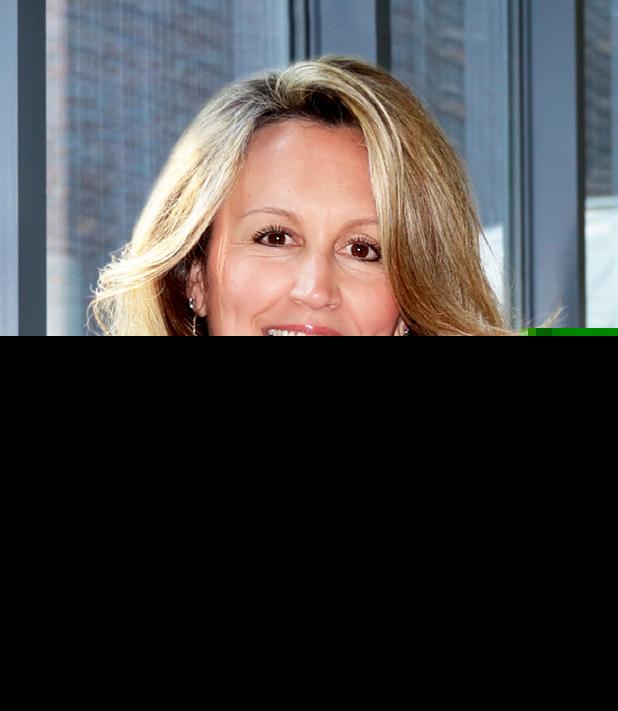
“My recruiting style focuses on passion, partnership, and candidate experience.”
NICOLE BOUCHER, DIRECTOR OF TALENT ACQUISITION“My recruiting style focuses on three critical attributes—passion, transparency, and respect. I believe it’s important to demonstrate passion for your team and what you do, to clearly articulate what success looks like, and to recognize that candidates today have choices.”
O’BRIEN, SENIOR ASSOCIATE OF CANDIDATE ATTRACTION & EXPERIENCEJENNIFER
single month, she explains, hiring about six hundred of those candidates to fill job openings at industry-leading organizations in the United States and across the world. Naturally, this means that her teams always have a lot going on. And according to Porter, the recruiters on her teams typically handle that activity in one of two ways.
“Generally speaking, there are recruiters who ‘hunt’ and recruiters who ‘gather,’” she explains. “Recruiters who hunt focus on solving specific problems—they will search through all the profiles they can find in order to pinpoint the perfect person to match up with an opportunity—and recruiters who gather cultivate pools of talented individuals and then pull from those pools whenever they need to.
“And we need both of those types of recruiters,” Porter adds, “because sometimes one type or the other is the best fit for what the client needs.”
All recruiters, whether hunters and gatherers, work together to align their operations with the department’s overall strategy, Porter says. “We pride ourselves on our teamwork, on our collective ingenuity,
and our unflinching courage. We trust each other,” the VP says simply. “Some of us have worked here for more than ten years now, so we really do feel like family.”
And as with all families, communication is key. Porter and her teams “are constantly communicating,” she says, “with each other as well as with other teams across the company. We also spend a lot of time communicating with our clients to make sure we understand their business and how the candidates we hire are going to impact that business.”
Of course, it takes a lot of passion, a lot of patience, and a lot of scrupulous attention to detail to truly follow through on those goals, Porter notes. But those recruiters who achieve all that are able to control the chaos and become a part of something great.
“Organized chaos is kind of our thing,” Porter says with a laugh. “Everything we do, however stressful or chaotic, serves a higher purpose in setting the bar for the candidate experience, driving results for the organizations we work with, and making sure that we stay true to our reputation as one of the best places to work.”
“We pride ourselves on our teamwork, on our collective ingenuity, and our unflinching courage. We trust each other.”
PATRICIA PORTER
Celia Harper-Guerra is a perfectionist by nature. Throughout her career, she has spent innumerable hours—“too many hours”— making sure that everything is flawless. Today, Harper-Guerra has learned to rein in those tendencies somewhat, following a “90/10 rule” that allows her to get things done while still stopping to smell the roses. But it is precisely HarperGuerra’s zeal that makes her the perfect match for Sprinklr, the company that “genuinely, passionately cares.”
An expert within the talent acquisition space, Harper-Guerra has spent decades working across the country at companies large and small, in industries from technology and communications to biotechnology and life sciences. When she decided to accept the position of vice president of talent acquisition at Sprinklr, a New Yorkbased software company founded just over ten years ago, it came as a surprise to many around her.
“People asked me, ‘Why are you going to work for this small company?’” HarperGuerra recalls with a laugh. “And I told them, ‘It’s simple. It’s because I know I’m going to work with great people who care.’
It’s just amazing, the strong executive leadership talent that we have here at Sprinklr.”
As vice president of talent acquisition, Harper-Guerra is responsible for making sure that the company continues to be a magnet for top-tier talent, whether that’s at the executive level, entry level, or anything in between. But finding the “right” talent isn’t just a matter of evaluating candidates’ technical job competencies and their expertise.
“We treat each other like family here, with dignity and respect,” the VP says. “We care about each other, and we truly want to help others succeed. We are passionate about our work, of course, but we also show up every day with the notion that every human has the potential to be amazing. We have the intellectual curiosity and an appetite to learn. To net it out, we’re working with great people who want to make a difference.”
As the first point of contact for anyone outside of Sprinklr, Harper-Guerra and her talent acquisition teams constantly work to ensure that they are “living and breathing” the culture as brand ambassadors.
True to her perfectionist roots, HarperGuerra isn’t satisfied with relying on brand
“We are passionate about our work, of course, but we also show up every day with the notion that every human has the potential to be amazing.”
CELIA HARPER-GUERRA
ambassadorship alone to recruit top-level talent to Sprinklr. She has developed a threepart plan that will not only help attract the right talent to the company but also help the company “scale and grow as fast as it wants” in the years ahead.
1. BUILD THE BEST TEAM
“You have to have a strong, diverse talent acquisition team who will enable you to execute on your vision and strategy,” HarperGuerra notes. “The recruiters we hire are talent advisors. They’re consultants by nature, who are brand ambassadors, and they excel at finding and providing strategic talent information to their hiring managers.”
2. BUILD A PIPELINE
“There are two types of pipelines,” HarperGuerra explains. “First are the active candidates who are looking for new opportunities, automatically find you and come to your website, and apply for jobs themselves. We get excited when talent just comes to through our front door.
“But what really interests us is when we seek out passive talent,” she continues. “Those individuals aren’t necessarily looking for a new job, but when you reach out and start talking to them, they get excited about our story at Sprinklr. Those are the individuals that are usually the top performers at other companies who aren’t looking for their next job, and we want to tap into that talent.”
To help with the search, Harper-Guerra and Sprinklr work with software company Gem. “Gem is pleased to support Celia and the Sprinklr team in their work to find, engage, and nurture passive talent so they can grow and scale the team while maintaining a personalized approach,” says Steve Bartel, Gem CEO and cofounder.
3.
“In any interaction we have with a candidate, we need to demonstrate who we are,” Harper-Guerra says. “We need to exhibit that we are a high-tech company with a strong vision, with quality products and that we execute. Our intent is
to be purposeful in how we engage with candidates, and to share our core values and beliefs.”
“We’re in a very niche market, so people who are already in that market know who we are,” Harper-Guerra adds. “We are working towards building a stronger brand across multiple industries to provide us the opportunity to tap into other talent channels and communities.”
Above all, the talent acquisition team must be continually mindful of the candidate experience, Harper-Guerra emphasizes.
“We strive to provide an extraordinary candidate experience by engaging with our candidates through every interaction whether that is digital or face to face,” she explains. “Our core belief is ‘People never forget how you made them feel.’ Interviewing is not a skill that everybody has mastered, and to help a candidate be at their best, we take great efforts to provide a rich and rewarding experience for our candidates.”
“Whether or not the candidate receives an offer, our goal is to have candidates walk away feeling like they’ve had an extraordinary experience.”
CELIA HARPER-GUERRA
HQ: New York, NY
Launched: January 15, 2010
Employees: 1,500+ worldwide
Sprinklr is the world’s leading customer experience management (CXM) platform, helping organizations reach, engage, and listen to customers and citizens across 25 social channels, 11 messaging channels and hundreds of millions of forums, blogs, and review sites.
Sprinklr holds a minimum of six interviews for every candidate, with each interview designed to have a deeper engagement focused on core competencies and the company culture. Throughout those six interviews, which are conducted by a diverse array of organizational leaders and hiring managers, Harper-Guerra and her colleagues use a combination of cuttingedge technologies and individualized interview questions.
“Interviewing is a two-way street,” she says. “We share with candidates, ‘We are interviewing you, but you need to be interviewing us. At the end of day, we want you to be sure that this is the right culture fit for

you.’ And of course, we want to ensure that Sprinklr’s culture is a match.
“Whether or not the candidate receives an offer, our goal is to have candidates walk away feeling like they’ve had an extraordinary experience,” Harper-Guerra continues. “Even if they are not hired, we believe that a candidate could be our next customer, partner, or shareholder in the future.
“And, if a candidate shares with their friends, cousins, or uncle about their interview experience,” she continues, ”those people could become our next customers or a future hire for us. We hope everyone walks away thinking, ‘I really love Sprinklr.’”
NewYork-Presbyterian Hospital puts patients first. But according to Stacie Williams, the organization has taken a somewhat unique approach: prioritizing the needs of NewYork-Presbyterian’s employees as well. As vice president of human resources, Williams makes it her daily goal to ensure that the organization is not only addressing employees’ needs but also truly caring for them as individuals.
Today, Williams wouldn’t change anything about her career in human resources. But it didn’t start out that way—no one grows up wanting to work in HR, she points out.
“I really just fell into it one summer because of a friend who needed help with some filing work. I was making $10 an hour right out of high school and thought I had hit the jackpot,” Williams recalls with a laugh. “But I eventually got hired on permanently and decided to take classes at night for an HR degree.”
It took Williams eight years to complete her bachelor’s. Sometimes she would take
Stacie Williams prioritizes NewYorkPresbyterian Hospital employees so that they, in turn, can prioritize their patients
five classes, and sometimes she would only be able to take one or two. “But no matter what, I never stopped,” she emphasizes. “Those eight years would have passed regardless, but this way, I at least had a degree at the end of it all.”
But, as Williams notes, the importance of learning extends far beyond the classroom. “I’ve always been the type of person who likes to figure things out,” she says. “Early in my career, I’d go help out other departments in HR, even if it wasn’t my job, because I wanted to understand and learn more.
“I’ve never actually applied to any of the positions I’ve been promoted to,” Williams adds. “And it’s because people have recommended me after seeing my work, my passion, and the value I brought to the organization.”
And in October 2002, Williams’s exploration of the HR world brought her
to NewYork-Presbyterian, a nationally ranked nonprofit medical center serving the broader New York area. As an HR manager, she was tasked with serving as a liaison between the organization and its related labor unions.
“It was an eye-opening experience,” Williams says of her initial days at the medical center. “It was a pretty difficult environment at that time. But now we have a much better working relationship with the unions.”
“When our new CEO took over the helm several years ago, we increased our focus on our employees,” she says. “Before, we were focusing solely on our patients. Now, we focus on our employees as well as our patients, and that has led to some really incredible results.”
The premise of this new cultural model is very straightforward, Williams says—it’s the simple idea that “everyone matters.”
“It’s about respect,” the VP says, “employees respecting each other, leaders respecting
their staff and their teams. We call it our respect credo—it gives people an idea of what respect looks like, what respect means to different people, and what respect doesn’t look like.”
And in the several years since that respect credo was implemented, NewYorkPresbyterian has built significantly on that foundation, Williams says. “Everyone matters here, and everyone belongs here, too,” she emphasizes. “We of course want people to feel included, but they also have to feel like they belong here.”
NewYork-Presbyterian has rolled out an array of programs aimed at making diversity, inclusion, and belonging an organizational priority, Williams says, including a Cultural Diversity Week initiative and a series of panel events called Dialogues in Diversity.
“Basically, a group of employees gets together and speaks about their particular experiences, whether it’s their experience

coming into the workforce as a veteran or their experience transitioning genders while working at the organization,” Williams says of the panel events. “Dialogue is every thing—it’s how we learn from each other.”
At the end of the day, Williams says, NewYork-Presbyterian just wants everyone at the organization to feel like they can be themselves at work.
“I actually shaved my hair a while back,” Williams says, laughing. “I would never have done that when I first came here, but now I feel so comfortable working here. I am in a profession that has been historically domi nated by white men, but I always feel valued here just as I am.”
And that is really the purpose for all of these efforts. “We want to create the best possible atmosphere for our employees so that they can be the best versions of them selves,” she says. “It’s only when you are your best self that you can provide truly exceptional care.”
“I am in a profession that has been historically dominated by white men, but I always feel valued here just as I am.”
STACIE WILLIAMS
Eric Sweitzer uses technology and collaboration to standardize processes and implement new platforms across Champion Windows
By CLINT WORTHINGTONCincinnati-based home improvement company Champion Windows & Home Exterior has come a long way since its humble beginnings as a small, family-owned business founded by in 1953 by Alvin Levine and Arthur Stevens. In the past three decades, Champion has seen a staggering period of high growth, expanding its operations across thirty-six states and serving over thirty thousand customers a year. Now owned by a private equity firm, the company is poised for continued growth.
But that kind of growth doesn’t always go smoothly. According to chief financial officer Eric Sweitzer, Champion was very decentralized during its periods of highest growth, which made it hard to scale. As such, Sweitzer spent the past few years drawing from his expertise within the finance function to lead his team to
support Champion’s finance department and system implementations.
Before he was CFO, Sweitzer had worked with Champion in 2012 and 2013 as interim CFO while employed as a consultant for corporate restructuring firm Development Specialists Inc. (DSI). After spending some time at Champion as interim CFO, Sweitzer eventually took on the role full-time in 2015, and he’s been there ever since.
One of the biggest problems with scalability, Sweitzer notes, came from having insufficient levels of infrastructure in the numerous new locations Champion opened throughout their boom years in the 1990s and 2000s. “The company wasn’t standardized in its processes, as a lot of companies struggle with initially,” he explains.
As such, Sweitzer and his team have been hard at work on what they call ‘division support,’ which involves standardizing and automating or centralizing much of the
administrative work the company does in support of its retail consumers.
“We’re kind of three business rolled up into one”—manufacturing, selling, and installing their own home exterior products, from windows to sunrooms to exterior doors and more, he says. “Champion is complex business, lots of activities to coordinate and standardize.”
Sweitzer and his team have organized the division support process into several major stages, starting in 2012 and 2013, when he partnered with the Champion IT department and external IT partners to put in SQL databases and extract, transform, and load (ETL) tools, among other technology solutions. They built solutions to pull

information from disparate data sources and decentralized databases, aggregated them, and created consistent reporting structures so they could consolidate their financial information.
One of Sweitzer’s greatest allies in this division support process is Champion VP of IT Dave Hofmeister, who came into the company around the same time he did and whose manufacturing and operations background makes him a strong advocate for this approach.
“He gets both sides of the business—operations and IT—and has done a tremendous job,” Sweitzer says. Together, they implemented several solutions including an accounting system (Microsoft Dynamics AX), payroll system
Eric Sweitzer CFO Champion Windows(Automatic Data Processing,) and centralized accounts payable process among others, for all fifty-plus locations.
Such an immense project makes use of all of Sweitzer’s years of experience in corporate finance and accounting functions. One of his most useful areas of expertise is technology. “I’m not an IT professional, but I’ve always been interested in data management and what tools you can use to do that more efficiently,” he explains. That level of interest, from both him and Hofmeister, has fueled Champion’s move toward standardized software platforms like CRM, ERP, and business intelligence tools.
Furthermore, Sweitzer credits his experience in various facets of business with his
varied approach to maximizing Champion’s efficiency. “I get to see what everybody else is doing, and how customers flow across the organization,” he remarks. “I’ve kind of got a cool seat.” Sweitzer uses that vision to assist those in other departments through his cross-functional approach.
But Sweitzer acknowledges that he is not a monolith. Much of their success has been due to the way he’s worked with his team and his fellow leaders at Champion like manufacturing VP Brett Gantz, who has had an impressive career in both the tier one automotive supply chain and more recently as a leader at Nike and has further shaped Sweitzer’s approach.
Every Friday, he, Hofmeister, and Gantz get together in his office to talk about the challenges they’re having and solve them together. “That’s a big piece of it,” Sweitzer notes, “just engaging and trusting the other leaders, knowing you have each other’s backs.”
That level of trust is paramount for Sweitzer, especially in a role where he’s helping change so many processes that have
been standard at Champion for decades. “You’re upsetting how things have always been done,” he explains. “And you try to let [employees] know what’s coming, why it’s being done, and let them be a part of the solution. You have to build a solid team that can make decisions on their own (while aided by standardized processes) and quickly react to the needs of the customer. That’s the secret sauce that makes organizations go.”
Despite all the work they’ve done so far, Sweitzer stresses that the journey is far from over. “There’s always more to do,” he says. At this point in the process, they’re halfway through implementing CRM software in all of their locations, and will complete the ERP implementation for all three of their product lines this year. “By the end of this year, we’ll have the head connected to the tail to better serve every new customer that comes to Champion.”
Editor’s Note: At the time of press, Eric Sweitzer had stepped into a new role as CFO at Senneca Holdings.
“That’s a big piece of it, just engaging and trusting the other leaders, knowing you have each other’s backs.”
ERIC SWEITZER
Mastercard’s Eileen Simon dedicates her leadership and time to developing her team members and communities around the globe
By LIOR PHILLIPSSome of Eileen Simon’s peers at Mastercard hold general counsel titles that relate to particular regions or geographies. Simon’s position, on the other hand, reaches far and wide: general counsel, global businesses.
Far more than a mere title, Simon looks deeply at what it means to be “global” in our modern business society. In addition to her traditional legal duties, Simon uses some of
her time to make a deep impact on diversity and inclusion within Mastercard as well as on individuals and communities that the company serves.
“Mastercard is a huge proponent of financial inclusion and financial education,” Simon explains. “The Master Your Card program, for example, educates financially underserved communities and groups in order to bring individuals and small businesses up to speed on building credit, using cards responsibly, and other important issues that enable them to move into the mainstream economy.”
That work deepens in emerging markets in the developing world as well, bringing people into the financial mainstream. That could mean sending representatives to refugee settlements and helping create meaningful means of identification. It could mean digitizing vaccination records in underserved communities in Africa to help families build identities. It could also mean working with farming communities to digitize the supply chain, empowering farmers who otherwise might be vulnerable due to carrying cash while walking miles with their crops.
“We’re able to use our network and our assets in order to help communities with the very basic building blocks of establishing and maintaining their identities,” Simon says. “There are countless ways in which Mastercard is making an impact in the communities we serve as well as in the developing world.”
In the Mastercard headquarters in Purchase, New York, Simon describes herself as an inclusive leader who dedicates as much of her time as possible to working closely with her team members and empowering them to do their best work and grow in their skills.
In addition to weekly one-on-one meetings with direct reports, Simon holds regular web conferences and in-person meetings with the larger team.
“I take career development very seriously. The whole company does,” Simon says. “I always encourage leadership at all levels and ensure people are feeling empowered.”
Development also includes a commitment to connecting with communities and giving back. All Mastercard employees are given formal time off to volunteer with organizations they’re passionate about.
Simon first discovered that passion at Mastercard upon joining the organization in 1999, and she has seen it make a more meaningful impact with each passing year. The company brought Simon on board due to her background and achievements; her joint degrees in psychology and economics from the University of Pennsylvania, followed by the New York University School of Law and eight years of litigation in trade practices and regulatory law, were a good fit for the competition law challenges Mastercard was facing at the time.
By 2006, the company changed its governance structure and went public. “It was exciting to be a part of the governance change,” she says.
The essential element of making the transition to in-house, Simon explains, came in connecting deeply with people. “Mastercard is very relationship driven. My early
interactions with people in different areas allowed me to understand the company broadly,” she says. “As a lawyer in-house at a company, the relationships with your clients are just much more immediate than at a law firm.”
As she’s grown to her current role, Simon has taken responsibility for legal support of functions, including products and services, Mastercard strategic growth, marketing, operations and technology, and mergers and acquisitions.
“We are helping drive the strategy for the company in a way that also manages risk effectively,” she says. “We are guiding the company into new spaces, such as real-time payments. These advances are critical to Mastercard's future, and our team can help navigate the new spaces effectively.”
Another important facet of the company’s future relies on honoring the diversity of the company’s customers and employees. That diversity includes diversity of background, experience, and thought; Simon has found herself particularly drawn to the Women’s Leadership Network, a cause for which she is the executive sponsor.
The group now has forty chapters across Mastercard. It offers programming for Women’s History Month, brings in inspirational outside speakers, organizes volunteer events, and aligns more broadly with the company’s gender strategy. As a working mother with
a teenage daughter, Simon wants to ensure that emerging women leaders have support, tools, and role models to reach their greatest potential.
Today, the Women’s Leadership Network is the largest business resource group within Mastercard. “We’ve seen tremendous progress in gender issues in the workplace, but there’s always more that we can do. We believe that diversity drives innovation,” Simon says.
“We have so many customers and participants in the Mastercard ecosystem, so diversity of experience in our employee base is critical to success,” she continues. “That diversity is enabling us to build for the future and to meet demand in the increasingly digital world.”
One thing that makes the Mastercard culture unique, she adds, is the company’s focus on the decency quotient, or DQ. “That’s what really stands out in our leadership,” she explains. “The Mastercard culture drives a willingness to share knowledge, to collaborate, to help colleagues. I believe it’s incumbent upon us not just as leaders, but as people, to give back.”
In addition to her work at Mastercard, she sits on the boards of two nonprofits dedicated to empowering women, looking to make an even greater difference in society.
Editor’s Note: At the time of press, Eileen Simon transitioned into the role of general auditor at Mastercard.
“We’re able to use our network and our assets in order to help communities with the very basic building blocks of establishing and maintaining their identities.”
EILEEN SIMON
 By BILLY YOST
By BILLY YOST
Margaret Soda has a hell of a commute. The vice president of human resources and labor relations at PSA Airlines flies to and from company headquarters in Dayton, Ohio, every week and back to her family in Wisconsin, or as she likes to think of it, “a little slice of heaven.”
It may seem a steep price to pay for occupational fulfillment, but her passion for doing right by people was ignited at an early age, watching her parents fight for the rights of union workers. It is in her blood to value fairness and understanding—key values that contribute to an HR and labor relations résumé that would do her parents proud.
Soda has cultivated a career working side by side with union reps, business leaders, and the frontline workforce to build the consensus required to do right by both employees and the company. It doesn’t hurt that her commitment to building out HR processes and proficiencies seems like
Margaret Soda has led a full HR transformation at PSA Airlines, and her skill set couldn’t be any more perfect for her roleMargaret Soda VP of HR & Labor Relations PSA Airlines
an inherent component of the leader as a person, not so much a skill that needed to be learned.
Over the past four years, she’s helped build a new vision and path forward for a twenty-five-year-old regional airline that is keeping its nose to the ground but taking its plans to the air.
Soda came to PSA in 2016 with both a mandate to drive change and a résumé that served as proof of concept in a variety of ways. The VP had extensive regional airline experience at Air Wisconsin Airlines and had also rebuilt employee, executive, and community relations from the ground up at ConAgra Foods.

PSA became part of American Airlines after the merger with US Airways, and its growth kicked into overdrive. There was a lot of work to do from an HR standpoint. “We were a growing company that hadn’t had many resources put into the HR team,” Soda remembers. “I felt like I knew exactly what they needed.” Soda reflects now on the opportunity to get back into aviation and reignite the passion of her early career.
“When I got here, there was a team of twenty-four. Two of those team members had been here for over a year,” Soda says, painting a portrait of her first day. “I found an old punch clock and timecard station and didn’t even realize they were still used.” That punch clock is still at PSA, but it’s in
“I had a lot more courage when I came to PSA to lead difficult conversations at the senior level. . . . I was really here to give everything.”
MARGARET SODA
Soda’s office on a shelf, a reminder of how far the entire organization has come.
One of Soda’s most immediate impacts was her previous airline experience. “From an operational standpoint, I had all of this previous labor negotiation experience,” Soda says. “I understood what team members did and had spent a lot of time learning this industry through the maintenance organization.” Soda attributes her success throughout her career to the time and care she places on learning the business of people and building relationships.
And when it came to the resolution to get things done, Soda had already been through the hardest experience of her career: creating a top-performing HR team for a recently merged food plant, in her hometown no less, just in time for the parent organization to decide to close it. It was a complete turnaround that gave way to Soda having to turn around and lay off the very employees she had helped inspire.
“I had a lot more courage when I came to PSA to lead difficult conversations at the senior level,” Soda says. “To me, if I am putting in 100 percent, we’re going to do this. I was really here to give everything.”
The HR organization was able to achieve in one year what many organizations struggle to do in five. The benefits programs were realigned to better reflect the working environment PSA claimed to provide on paper but needed some work on following through in practice. A company vision was created for the first time. A five-year plan was undertaken to create further clarity in alignment and strategic vision.
“We launched our PSA Way, we launched our very first goal-setting; there were a
hundred different things going on at any given time,” Soda remembers.
The VP helped PSA build out its recruiting organization to try and get a handle on the massive influx of new arrivals. “I committed to educating my team about the industry in which we’re operating, and it’s a challenge,” Soda says. “There are off-theshelf models that work in manufacturing but aren’t applicable here, and I think my previous experience lends me some credibility there.”
There has been massive and definable change at PSA, and in the process, Soda has been recognized as one of the National Diversity Council’s “Top 15 Businesswomen in Ohio” and received the National Women’s Conference “Most Powerful Women” award. Soda fails to bring up any of these awards because she’s more focused on what still needs to be done.

“We’re in the fourth year, and I feel like we’re just getting to where I wanted to be when I started,” Soda says. “Now that we’re not in this period of hypergrowth, we’re launching a refocus on how we talk about our main operating principles. When you’re in a period of change, you have to be more forgiving of imperfections, and now it’s a time to shift to focus on accountability.”
It’s yet another problem to solve on the plane ride somewhere between Ohio and Wisconsin. Be assured, Soda is on it.
The time seemed right for Robert Julian to call it a day. A thirty-two-year financial career in everything from aerospace to entertainment services, the CFO had made his mark and proven himself capable of transferring his skill set across many different industries.
“I told my wife that if I couldn’t find a situation where I could work with a CEO who shared my vision, principles, and values, I wasn’t going to do this anymore.” The CFO credits his wife for keeping him off the sidelines, though he’s not clear on her motivations. “She told me that I had far too much to offer to retire now, but I think she

just couldn’t stand the idea of me following her around the grocery store pushing the shopping cart,” Julian says, laughing.
It wasn’t just his wife’s encouragement that would help Julian find his way to his current CFO role at Sportsman’s Warehouse. Coincidentally, CEO Jon Barker and Julian’s wife grew up in the same small rural town in northern Kentucky. When they crossed paths decades later, Julian would find the partner in Barker, and the culture in Sportsman’s Warehouse, that he had been searching for.
Now, just a year into his unexpected leap into retail, he has been able to do his best work as a leader, partner, and team-builder.
Julian says coming to Sportsman’s has provided a set of very unique opportunities all in one exciting package. “This space is very disrupted at the moment, and we have seen competitors that are either pulling back or exiting the industry completely,” Julian explains.
From Walmart eliminating the sale of many gun and ammunition categories, to DICK’S Sporting Goods eliminating hunting departments from hundreds of stores, to Camping World’s acquisition of Gander Outdoors and focusing more heavily on RV sales, the CFO said part of the allure in coming to Sportsman’s was the chance to grow the organization by both brick and mortar, and omni-channel capabilities. “We’re fully dedicated to this space, and I think we have the opportunity to create something special, and continue to build on that success,” the CFO adds.
But more than the business opportunity, Julian says he has found a team that is the true definition of partnership. “I think the team is a big part of what our CEO was focused on as he was repositioning the Laura
company for success,” Julian explains. “Jon was really intent on building a highperforming, world-class leadership team.”
From a new head of merchandising, to a new IT lead and Julian himself, the CFO says the company is now in a prime position to do great work, combining the existing team and a fresh influx of new talent.
When it comes to assembling teams, Julian has brought his own bag of tricks to the table. “I’ve been very fortunate in that every place I’ve worked, some of the best people have followed me from my past organizations,” Julian explains. “I’ve always believed that people come first, and I’ve assembled a great team of both new and existing talent.”
Sportsman’s is no different from Julian’s tendency to lure former colleagues to greener pastures. The CFO recruited for the financial planning and analysis, corporate development, and investor relations teams from his own rogues’ gallery of highperforming professionals.
“Robert has added tremendous value to the Sportsman’s team,” says O’Melveny partner John-Paul Motley. “He and Jon are aligned on strategy and excel at collaborating with team members and advisors to make the best decisions.”
Julian may only be in his first year at Sportsman’s, but actions he has taken are at least in part responsible for the stock’s major uptick in 2019. “I embarked on an initiative to be much more accessible and active in our investor relations efforts,” Julian explains. “I’ve had a lot of experience interacting directly with the investment community,
and I wanted to make sure people knew what we were doing here. I think it’s been helpful.”
People come first for Julian, but tools can go a long way to aiding that effort. In partnering with Wells Fargo, the accounting team was able to implement both Invoice Manager and Payments Manager, which allowed Julian’s team to focus on higher-level communication with their vendor base and spend less time on transactional duties.
“There isn’t anything magical about the accounts payable function, but I think it’s a good example of our willingness to utilize technology to drive continuous improvement,” the CFO says.
Sportsman’s was also able to acquire ten Field & Stream stores from DICK’S Sporting Goods, which included some new retail markets for the company, specifically Pennsylvania and New York. While the stores themselves are a huge win, Julian says there’s an even bigger reward.
“This was certainly an excellent financial transaction for us, but we also acquired some truly talented and dedicated employees, who are excited about being part of an organization that is committed to this industry,” the CFO says.
With everything Julian has been able to help accomplish inside a year, it’s funny to consider that the CFO might have been content to play golf and run the occasional errand. “This has worked out so much better than I could have ever hoped,” Julian says. “I owe that to my wife and to Jon Barker who has really proven what can be accomplished when a CEO and CFO work together in true partnership and collaboration.”
“I’ve always believed that people come first, and I’ve assembled a great team of both new and existing talent.”
ROBERT JULIAN
Standing five foot three, Allison Howard has always been on the small side—but as a kid, that didn’t stop her from playing every sport that was available to her. And if a sport wasn’t an option for her, she changed things so it was.
“There was no girls’ T-ball team for us where I grew up in Minnesota, but I wanted to play and didn’t look at it as a girls’ thing or a boys’ thing,” Howard recalls. So she started collecting signatures from people in the community for a petition that would allow her to play. “That is where my passion for sports really started,” she explains. “I love the team camaraderie, the fun, athleticism, and just all of it.”
By KEITH LORIABy the time she hit high school, she was playing numerous sports, including basketball—a passion that continues to this day. Nearly ten years ago Howard found her dream job working for the Los Angeles Lakers, and today she’s vice president of

Allison Howard began her career as a civil engineer, but she’s found her place as vice president of corporate partnerships for the Los Angeles Lakers
corporate partnerships for the sixteen-time NBA world champions.
It’s not where she expected her career to go, though. After graduating from the University of Dayton with a civil engineering degree in 2000, Howard went to work for the Shell Oil Company. She then headed to southern California to manage environmental cleanup projects, but the company she was working for at the time went bankrupt.
At age twenty-six, she was suddenly unsure of her next move. “To be honest, my heart wasn’t in it, and I realized I was too young not to be jumping out of bed excited about what I would be doing,” she says. In 2005 she stumbled upon a Craigslist posting
for director of sales for a small sports marketing firm called Premier Partnerships.
That job reignited her passion for sports and gave her valuable experience; in her time with the company, she came face-to-face with top executives of teams in many different leagues and learned about the business of sports. She also served as an executive vice president with Women in Sports and Events, and as a committee member for Special Olympics Southern California. Then the perfect career opportunity bounced her way.
At the end of 2011 when the NBA lockout was ending, Howard was a working mother of two boys under the age of two, and she was starting to think the agency lifestyle was no longer a good fit for her. “I had made very
good friends with people at the NBA and a contact reached out about a sales position the Lakers had open,” she says. “I jumped at the opportunity. I remember every detail about the interview and within two minutes of meeting [Lakers president] Tim Harris, he said, ‘I know you’re a mom, and I will make this job work for you.’”
As vice president of corporate partnerships, Howard is tasked with helping to grow revenue and protect the Los Angeles Lakers brand. Her sales team is responsible for bringing in new sales, and her activation staff is tasked with handling the day-to-day needs of partners once someone new is signed.
The Lakers currently have thirty-five partners, significantly less than the league Erica

average of ninety-five partners. That’s intentional, though: Howard explains that the team doesn’t want the brand’s value diluted. For the past seven years, she has organized a Partners Summit, where they take the top-spending partners away for a business meeting, bringing in motivational speakers, authors and other experts. And when the playoffs come around, she sets up personally curated playoff packages to offer to partners.
“We look at what’s the right amount of playoff packages and sponsoring elements that we want to come through for the brand as opposed to just letting the team speak for itself,” Howard says.
One of her big initiatives is a partnership with e-commerce platform Wish that puts the company’s logo on Lakers jerseys. Part of the deal includes something called the Courtside Chronicle, where celebrities sit courtside wearing Wish T-shirts, interacting with the social media team and talking about the experiences they were able to have brought to them because of Wish.

“This is one of the deals in my career that I am very proud of,” Howard says. “Wish came to us several years ago and had never really explored doing anything with sports, but
they knew the Lakers brand and they knew they needed brand awareness. Fans love that behind-the-scenes feel and look of what we are able to post with those celebrities.”
Another initiative Howard touts is the Lakers partnership with UCLA Health, a deal solidified in 2016 that included the naming rights for the team’s $100 million training center; a marketing partnership that tells the story of why UCLA Health is a top healthcare service provider; and appearances at the hospital by players, Lakers legends, Lakers girls, and others associated with the franchise. They also serve as the team’s doctors.
“They are at every game, they have offices just a couple of miles from our facility, and they provide an amazing concierge service for the players and the employees,” Howard says. “They align with us and we trust them with our most valuable asset— the players.”
For those interested in following in her career footsteps, Howard says it’s important to subscribe to the “we over me” mentality.
“The biggest thing is not to be looking for accolades,” she says. “Think of the entire group and not just yourself. Do your job and do it well and you will get noticed.”
“I remember every detail about the interview and within two minutes of meeting [Lakers president] Tim Harris, he said, ‘I know you’re a mom, and I will make this job work for you.’”
ALLISON HOWARD
For the past twenty years, if you’ve had a Bloody Mary, chances are that Zing Zang made the mixer. The beverage giant launched its Bloody Mary Mix in 1996 to help bars and restaurants make quick, easy cocktails, and the rest is history.
By CLINT WORTHINGTONIn 2018, two decades after establishing itself in the cocktail space, Zing Zang went
Zing Zang CEO Brent Albertson brings experience, innovation, and a palpable sense of joy to the mixer giant
through a pair of significant changes: the launch of their All Naturals line, and the promotion of Brent Albertson from chief revenue officer and president to CEO.
A natural salesman at heart, Albertson has felt the pull of business since he was seven years old, selling newspapers in front of the hospital where his mother worked as a nurse. “If I sold enough papers, I would get prizes. So, from an early age, I was out selling,” he explains.
Albertson has spent more than thirty years in the drinks space. Before joining Zing Zang as general manager of its Midwest division and senior vice president, Albertson spent twenty-nine years with spirits giant Diageo. When he first arrived at Zing Zang, his sales and general manager background at Diageo came in handy.
“Zing Zang needed a lot of attention,” Albertson says—especially with market distribution and finding strong people with industry knowledge and sales experience for their staff. “I was able to bring a lot of that quickly and grow the company’s value.”
Part of that innovation was the launch of Zing Zang’s natural line, which spans all of their major mixes—margaritas, piña coladas, sweet & sour—with high-quality ingredients, no artificial flavors, and no high fructose corn syrup.
“Zing Zang All Naturals are the first national brand of All Naturals available,”
he explains. The company completed a partial rollout in 2019 with greater expansion to come in 2020.
They’re also appealing to more than just distributors and bartenders; in addition to the large plastic bottles of mixers they’ve been selling since their inception, the All Naturals line has also launched in single-serve slim cans in retailers like Walmart and others across the US.
That’s not the only way Zing Zang has been improving: the company has seen tremendous growth over the past few years, projected to nearly double their EBITDA and revenue margins over the next three years due to improvements in supply chains, route-to-market pipelines, and more.
These achievements weren’t easy to come by. “It’s hard to make mixers sexy,” Albertson admits, and he had to work diligently to get their distribution network to see the opportunity inherent in their All Naturals line.
Once he did, however, the rest of the pieces fell into place, and the product line has expanded from five hundred thousand cases sold in 2010 to a projected two million cases in 2020.
When speaking to Albertson, his love and connection to the Zing Zang brand is palpable, something he credits for his success. “As an executive, you have to make sure that the personal connections are
“It’s hard to make mixers sexy.”
BRENT ALBERTSON
there, both with the brand and the people in the brand,” he explains.

He likens his leadership style to that of a player and their coach, taking a very hands-on role in the development of his team and communicating with customers. “I think it’s important to build and keep industry relationships,” Albertson says. “That sort of respect and trust only comes from being in the trenches with your people.”
Much of Zing Zang’s growth and success is due to Albertson’s innate understanding of consumers in the beverage space. “The consistency of drinks across this country is horrible,” Albertson explains. That isn’t very palatable for a growing audience of millennial customers with very specific tastes.
“They want it all,” he explains. “Clean labels, all-natural liquids, and bold, mixologist-quality drinks.” Consequently, much of Zing Zang’s brand is tied to creating a consumer-friendly experience, crafting easy-to-use mixers that still allow room for experimentation and engagement from their audience.
While it’s still early days for Albertson in his new role as CEO, he continues to benefit from the expertise and advice of his
predecessor Doug Corbett, who remains at Zing Zang as chairman of the board. “He and I have worked together for three years on the strategy and implementation of our All Naturals line,” Albertson explains, “so we have a seamless transition.”
Between this new transition to CEO, and the fledgling success of their All Naturals line, Zing Zang’s prospects appear bright. Albertson certainly has high ambitions for his tenure.
“I want to continue to expand this brand into more of a household name,” he says. “I think we’re all much more motivated about our possibilities, and we’ve accomplished a great deal so far.” In 2020, he plans to make Zing Zang the number-one drink mix company in the industry.
Even as the CEO for an industryleading company, the most important thing for Albertson is to have fun every day and celebrate his team’s successes as they come. “I’ve always been motivated to achieve and do so in an environment where I can be with people I like and respect.”
After all, Zing Zang’s brand is centered around fun, joy, and crafting memorable experiences with friends. Or, as Albertson puts it, “life’s too short for bad drinks.”

“I think it’s important to build and keep industry relationships. That sort of respect and trust only comes from being in the trenches with your people.”
BRENT ALBERTSON
With roots extending before Prohibition, RNDC is a family-owned business that has evolved into one of the nation’s leading wholesale beverage alcohol distributors.
We serve as a brand-building and product expert liaison between suppliers and those who sell or serve alcoholic beverages. Customer service, product expertise and executional excellence are the hallmarks of our enduring success.
The chief accounting officer role is about more than just money. It’s about breaking down silos and empowering teams to drive the business forward through global expansions.
Ajmere Dale, Square » P110
Chase Anderson, Origin Bank » P116
Lindsey Bennett, Kyriba » P118
Eric Esper, The Hertz Corporation » P121
Carlos Olea, The Howard Hughes Corporation » P124
Jeff Kist, Redbox » P129
Rebecca Thompson, AAON » P132
Michael Schmit, SWM International » P136
Scott Hamilton, iHeartMedia » P140
Like most other people in his profession, Ajmere Dale did not grow up dreaming of becoming an accountant. “Like most kids, I wanted to be an astronaut,” he says with a laugh.
Accounting may not have been Dale’s first calling, but his knack for numbers has led him to the top of his field as chief accounting officer at Square Inc.—and his enduring passion for exploring new frontiers has earned him a reputation as a trusted business partner to some of the most visionary companies of our time.
An engineer by training, Dale began his career at Jaguar Cars in the days before the automotive legend was acquired by the Ford Motor Company. But in 1989, he decided to switch tracks, quickly completing a combined business and engineering master’s degree at the Imperial College, London University and then securing a chartered accountancy trainee position at Ernst & Young (EY).
“I wanted to get the best training possible at a global firm known for being very much people first,” Dale says of his seven years with EY. “And it worked out well
because I had the opportunity to travel and get overseas experience, including experience in the United States.’
“And once I landed here in Silicon Valley,” he continues, “I just knew that this was the right environment for me. There was so much opportunity, so much diversity in what was happening—it was a prime example of the American Dream in terms of how people were following their dreams of innovation and trying to make a difference.”
And for the past twenty years, Dale has been working with some of the brightest minds that Silicon Valley has to offer, from software and biotech pioneers to the leaders of Tesla subsidiary SolarCity Corporation.
“All the companies I’ve worked for have tried to do something different— they’ve been disruptors, explored new ground, addressed new markets,” Dale reflects. “And with its IPO, SolarCity went through something that is very unique. There are a lot of challenges and risks
“If our product teams are not innovating, the rest of us wouldn’t be here. So, at the end of the day, we have to support that innovation.”
involved with an IPO and timing can be everything, so not a lot of companies get the opportunity or the right conditions to go through it.
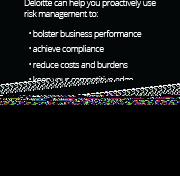
“We managed to get it done,” he continues, “and it really was a testament to the whole team. You face a lot of abstract problems with an IPO, but you don’t have the luxury of taking time to think them through. You have to build and drive the car at the same time.”
But a willingness to explore new markets and opportunities isn’t the only thing that attracts Dale to a company. He looks for organizations that make an impact, whether that means developing tools for cancer detection, helping to solve the global warming crisis, “or empowering individuals who don’t have appropriate access to the financial system, which is what we try to do here at Square.”
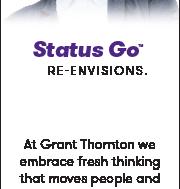
A leading financial services and mobile payment company best known for the square-shaped chip readers that allow secure payments to be made anytime, any place, Square Inc. is really an “incubator of ideas,” Dale says. And it’s up to him and his accounting team to help support those ideas.
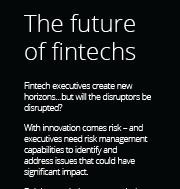

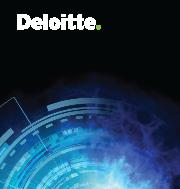
“As I learned at SolarCity, you have to be a strong voice of principle if you ever think that the company’s growth is crossing lines that are unacceptable and you’re starting to operate outside of predefined

boundaries,” he notes. “But if our product teams are not innovating, the rest of us wouldn’t be here. So, at the end of the day, we have to support that innovation and, as we grow the team, ensure that we’re hiring other people with a growth mind-set.”
Square as a whole has experienced exponential growth since undergoing its own IPO in 2015, Dale says, but it’s still nimble enough to launch products very quickly. Accordingly, he and his teams are always “ready at the pump” whenever any new products are developed.
Recently, the chief accounting officer and his teams have been working to support the launch of a number of new products and initiatives, including a fractional stock trading feature offered through Square’s popular Cash App. That feature will help open the equity markets up to the average American, who, for example, may not have the two thousand dollars required for a full Amazon share but do have, say, a dollar to purchase a fraction of that share.
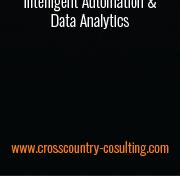
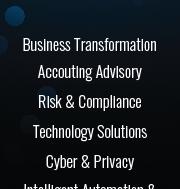
“We are constantly rethinking the way that different industries are working in order to increase individuals’ access to the financial system,” Dale says. “And those industries have been ripe for disruption for a while now. We are truly only inhibited by our own pace and velocity and our desire to create something that is remarkable.”
Dale shares some of the key ideas and strategies that have helped propel his own career as well as his teams at Square.

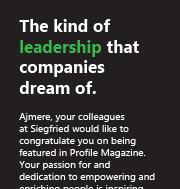
Trust your team. It’s impossible for somebody to quarterback everything—we move too fast and we have to be too nimble. You have to understand when your team might need your support and when they don’t,
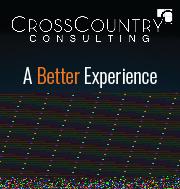
but you also have to create a strong values framework so that nobody goes on a witch hunt when somebody does unintentionally make a mistake.
WHAT EMPOWERS THE TEAMS AT SQUARE TO FEEL LIKE THEY’RE ALLOWED TO MAKE MISTAKES?
The tone from the top is critical. A lot of companies get into trouble because there’s a mind-set at the top that everything has to be exactly right, and on time, all the time. Accounting doesn’t always operate with such precision and there are judgment calls to be made.
The culture here at Square centers on learning from our mistakes. When something goes wrong, we hold a cross-functional meeting called a retro: we talk about how to fix the issue going forward, and then we publish the results across the company. We don’t bury our mistakes here—we bring them to life and celebrate them as opportunities to grow. I haven’t seen that sort of discipline and transparency at other companies, and I think it’s what helps people here feel like they are more than just employees. They feel a connection to this place because of the trust that is put in them.
WHAT ABOUT YOUR OWN GROWTH? WHAT MAKES YOU FEEL COMFORTABLE TAKING RISKS?
Living in the Bay Area for twenty years now, I’ve developed a network of trusted
advisors that I can call anytime I have a question. I expect my advisors to have seen a lot more than I have, especially if they’re specialists in a particular area. That network of external voices helps amplify my impact and also helps ensure that the team doesn’t get bogged down in groupthink, which is vital when you’re trying to be disruptive.
CrossCountry Consulting is a business advisory firm that provides customized finance, accounting, human capital management, risk, operations and technology consulting services to leading organizations facing complex change. We partner with our clients to help them navigate pressing business challenges and achieve goals related to improving operations, minimizing risks and enabling future growth. Visit crosscountry-consulting.com.
At Siegfried, we work alongside executives across the nation on important accounting and finance projects. We provide clients with our unique leadership advisory service, combined with high potential talent. Our firm’s higher purpose is to help people transform themselves into better leaders to exponentially improve their lives! siegfriedgroup.com
At Grant Thornton Ireland, we embrace fresh thinking that moves people and organizations forward, and recognize it takes passion and commitment to achieve growth. We are delighted to congratulate Ajmere Dale of Square on this well-deserved recognition. We are proud to work alongside someone who embraces exceptional leadership and is committed to a re-envisioned future.
“We don’t bury our mistakes here—we bring them to life and celebrate them as opportunities to grow.”
When I started my audit career, I never thought I would work in banking,” says Chase Anderson, chief accounting officer (CAO) for Origin Bank. Initially, he didn’t even plan to go into finance. In college in Arkansas, he was going to become an engineer, but conversations with friends and family led him to switch over to accounting. From there, a fellow alumnus recruited him for the Dallas office of accounting firm Grant Thornton, where he spent seven years in tax and auditing work.
In 2013 he was hired as CAO at the century-old bank Origin (back when it still had its original name of Community Trust Bank), and over the last six years, Anderson has found himself at the forefront of many of the bank’s most important initiatives.
Not long after taking the role, Anderson was faced with one of his biggest accounting challenges to date—readying
the bank’s accounting function for a public option. It was a complex process that took years: despite planning for a 2014 IPO, the company didn’t go public until early 2018. In the intervening years, Anderson and his team meticulously reworked and restructured Origin’s accounting processes to make the organization viable for public investment.
Their first challenge was to fix Origin’s processes to allow them to reliably close their books in a timely manner. Anderson wanted to trust that “once the books were closed, they were closed.” From there, he helped build out the company’s financial reporting function. “We had internal reporting, but we didn’t have anybody on the team that understood external reporting beyond my experience as an auditor,” he says.
Once these processes were streamlined, the next several years were spent creating mock earnings releases to fine-tune the consistency of Origin’s accounting and reporting work. Eventually, once the SEC reporting timeline functions grew to a level of consistency that Anderson and the executives were happy with, Origin went public in 2018.
This laser focus on the value of the accounting function is one of Anderson’s most valuable traits as CAO. “The biggest thing I’ve latched onto, and done the most with, is seeing the inefficiencies in
operational accounting and identifying solutions,” he notes.
Process efficiency is everything, according to Anderson: one of his first big changes was to address redundancies in reporting in Origin’s accounts payable function. Rather than manually entering expense reports in Excel, which led to double entries by accounts payable and the person submitting the report, Anderson instituted a new expense management system (Concur) that allows the company’s accounting team to save an incredible amount of time and effort.
It’s this focus on technology that really motivates Anderson as an accounting professional—and his work at Origin reflects those interests. Among his main initiatives is the development of the firm’s technology committee, made up of representatives across several different departments who coordinate Origin’s technology strategy.
The committee was born of a meeting between Anderson and three other executives (including the president and CEO) about the lack of a consolidated technology strategy when vetting software solutions and executing contracts. “We need to get our arms around the technology systems and infrastructure that we have in place,” Anderson explains.
The six-person team includes Anderson, the president/CEO, the chief infor-
mation officer, chief digital and strategy officer, and chief operations officer, along with the strategic partner director from Origin’s project management office. Together, their primary focus is to review their existing technology infrastructure, diagram it out, and identify areas where a platform or piece of technology is not being utilized to its full value.
“One thing that drives me crazy is when we pay for 100 percent of a platform but only use maybe 30 percent of its functionality,” Anderson says. This is one of the technology committee’s major points of focus: creating a centralized strategy to make the most efficient use of the technology that they employ.
Anderson’s focus on technology may be a holdover from his engineering days, but he also recognizes its importance in the realm of finance. “At times, the finance and accounting function hasn’t historically been great partnering with the operational aspect [of an organization],” Anderson notes.
His goal, both in the tech committee and elsewhere, is to increase tech literacy across Origin and shake up old habits to bolster efficiency. “People will defend the ideas they brought to the table, even if it was ten years ago,” Anderson explains. “What I’m trying to get to [in my role] is, let’s all come together and figure out collectively what makes the most sense for the organization.”
Now that Origin Bank is a publicly traded company, and the firm’s technology committee is in full swing, Anderson hopes that this allows the company to become more streamlined and efficient than ever before. As his efforts have shown, technology seems to be the way to do it.
SAP Concur congratulates Chase Anderson—a leader, visionary, and trusted partner! We’re proud to reside within Origin Bank’s ecosystem, helping them scale with cloud and mobile technology and acting as the “engine” that connects how they spend with the people, policies, and systems that define their organization. Visit concur.com to learn more.
“People will defend the ideas they brought to the table, even if it was ten years ago.”
Lindsey Bennett has an impressive track record with companies undergoing massive growth. Now, at San Diego-based Kyriba, she’s building and optimizing a global team.
By A.J. ZakSlowing down does not come naturally to Lindsey Bennett. As someone who grew up moving around the world in a military family and who later came to love the rush of fast-paced workplaces, she acknowledges that she has trouble sitting still. So it makes sense that after taking four years off from her career to care for her two daughters, she recently got the itch to dive back into the workforce.
Bennett joined cloud-based finance company Kyriba as chief accounting
Kyriba
officer last year. After several previous roles helping innovative enterprises in their efforts to scale up, her focus at San Diego–based Kyriba is on building a global accounting team, optimizing and automating crucial workflows, and getting her department up to speed with the rest of the rapidly growing company.
Bennett lived in a number of cities as a child but spent her formative years in Virginia. She loved mathematics, but when she told her dad she wanted to major in math, he wasn’t thrilled.
“My dad said it would be harder to get a job after college with a math degree, and instead I should go into business,” Bennett says. She listened and rapidly developed a passion for accounting. “I like to solve puzzles, and that’s how I view accounting. Everything has to work together; everything has a place.”
After Bennett graduated from James Madison University in 1999 with a degree in accounting information systems, she joined Ernst & Young in Virginia. When
her sister moved out to San Diego, she decided to visit and fell in love with the beautiful city. She transferred to Ernst & Young’s San Diego office, where one of her big projects was a public offering on the Canadian market. Despite the long hours, the experience she gained working on this project was invaluable.
During one late-night working session, she and her colleagues found themselves talking about favorite vacation spots, and she mentioned that she had always wanted to go to Australia. A manager in the room told her she should check out opportunities with the firm in New Zealand, but Bennett didn’t imagine the notion would live beyond the late-night work session chatter.
One thing led to another, and in 2004 Bennett transferred to Ernst & Young’s New Zealand office, where she gained more global experience for two years before heading back to San Diego.
Following Ernst & Young, Bennett joined biotech company Illumina at a
time when the company was experiencing massive growth. Three years after that, she moved to cloud computing company ServiceNow, which hired her to help prepare the accounting team for its public offering. Bennett played an integral role in the company’s successful initial public offering (IPO) in June 2012.
“In retrospect, the ServiceNow IPO marked a major milestone in my career trajectory. Prior to that, my focus had been on mastering the day-to-day accounting realities of business,” Bennett explains.
“Having the opportunity to engage in a major IPO and sit side by side with the underwriters, bankers, lawyers, and executives helped me gain additional insight into the rest of the business. It shifted my focus from the day-to-day realities to a more strategic view.”
And that’s the kind of work Bennett loves most—rapid, dramatic change with businesses she can help take to the next level. “I love to build things from scratch. Even though it’s challenging and the
hours are tougher when you’re trying to grow a company quickly; building is what I truly am passionate about.”
Her love for fast-paced environments is also one reason why taking four years off after giving birth to her daughters was difficult for her. But she knew it was the best decision.
Once her first daughter was born, she realized she wouldn’t be able to provide the same level of commitment at work. While she struggled with putting her career on hold, she insisted on being there for those early years of her children’s lives. As Bennett states, “Family is everything.”
However, once her kids were in preschool, Bennett was ready to start something new. In August 2019, she joined Kyriba, where her focus has been on building the accounting team to accommodate the company’s inevitable growth.
But the task is more complicated than simply hiring more people; more than 50 percent of Kyriba’s workforce is located overseas, as the company was originally founded in France. One of her primary initiatives is to truly globalize the company and make those teams work more cohesively. She does that by understanding how various teams work across
multiple locations and creating efficient and effective processes to generate economies of scale.
In addition, Bennett continuously focuses on improving communication among her colleagues, even if it’s as simple as recurring in-person or videoconferencing meetings. “Providing the opportunity for employees to travel adds a whole new layer of depth to a working relationship,” she says.
Another main project she will be focused on in the near future is automation. Kyriba plans to implement a new accounting system to further augment the use of Kyriba’s SaaS solution.
For all the high-stakes projects she’s been a part of in her past, Bennett has learned that “with rapidly growing companies, it is important to anticipate needs and scale appropriately to meet those needs in advance.”
It is no surprise that Bennett looks to hire efficient and driven workers who embrace change. “Equally as important as building the right team,” she says, “is understanding what motivates each person and inspiring them to work toward a common goal, creating processes and automation to help prepare the company for the next stage in its life cycle.”
“With rapidly growing companies, it is important to anticipate needs and scale appropriately to meet those needs in advance.”
Duff & Phelps congratulates Lindsey Bennett and wishes her continued success
Most children who were fans of Jurassic Park were in awe of the lifelike dinosaurs depicted on the screen, but for Eric Esper, the movie had a different appeal.
“Malcolm was one of the key roles, and he was a mathematician in the movie. For whatever reason, the idea of being a mathematician excited me,” he says. “I very quickly realized that mathematicians were geniuses, and that was not me, but it piqued my interest in numbers.”
And unlike most people, he became interested in accounting at an early age.
“I had a neighbor who taught accounting in high school, which wasn’t an overly popular topic in curriculums, and she suggested that I try it given my affinity for all things math,” he explains. “Effectively, that’s where it all started.”
Esper, the first in his immediate family to attend college, obtained his bachelor’s and master’s in accounting at the University of Michigan. An internship with PricewaterhouseCoopers between degrees confirmed his career choice. He went on to work in the company’s Detroit and Miami offices for nearly six years after gradu-
ating. Then, in 2010, he was hired as a manager of special projects for Norwegian Cruise Line Holdings, then a client of his.
“This was the beginning of my transition out of public and into private accounting,” he says. “It was at that point, I realized I just didn’t want to go toward partner. It wasn’t a career goal of mine anymore, so I pivoted.”
Esper calls his experience with the cruise line the single most defining moment of his career, because he was now in an organization that needed help and had a ton of transactional work on the horizon.
“I had a lot of high-level executive exposure and was in essence the right hand to the chief accounting officer,” he says. “In 2013, we ended up going public and went through the whole IPO process, created the parent company and initial public offering, and from there, started to really grow in the chain of command.”
After almost eight years of taking on executive roles at Norwegian, Esper joined the Hertz Corporation, the second-largest US car rental company by sales, locations, and fleet size. As chief accounting officer of Hertz, he’s tasked with transforming the department, implementing global processes, and investing in people. He’s been on the job just two years, but he has already been involved in major changes.
For example, Hertz’s Project One is a global technology transformation that involves most everyone in the organization. “We have a lot of back-office systems that are being replaced with this technology transformation, so when I came in, I had to learn about what those initiatives were, what we would be ultimately undertaking, and why we are deciding to go this route,” he explains. “We partner with many vendors for building out the infrastructure. I would never take credit for any of the decision-making because the tracks were laid before I started, but it’s certainly a massive undertaking that we have to glue together and make sure we have the right people focused on it at the right times.”
When Esper took on the role of chief accounting officer in November 2018, Hertz was adopting a new lease standard. Absorbing that in the first quarter of 2019 Audra
was a huge personal success for him, he says. In March 2019, the company also transitioned to a new audit firm, adding to Esper’s challenge.
“Adopting the lease standard, especially in light of an auditor transition basically correlating to the same time of adoption, was a huge win for the company and for me,” he says. “We’ve had a very successful transition and I think that’s a credit to our team and to them for being a great partner to us.”
In 2020, Esper is spearheading projects that meet the collective global goals of the department and company, and layering in the Project One initiatives in conjunction with that. “We see 2020 as a very critical year for a couple of our key financial systems related to fleet accounting and some other complex back-office infrastructure that supports our billing and collections efforts, but are very complicated because of the nature of our business,” Esper says. “So there are some pretty big high-stakes milestones for delivery this year.”
Esper thrives on the team mentality and focuses on empowering his people so they feel like they contribute to the
greater good. “We know we need their continuous buy-in to maintain and push our group forward,” he says. “I like to engage in ways that all levels of the hierarchy can contribute. I want to know what people think, and it’s a way for me to identify our future leaders.”
Furthermore, it’s important for him personally to stay humble and become the leader that everyone looks to for help and guidance.
“I try to approach it as I’m no better than anyone on this team, but I am the leader they look up to, so I have to hold myself to a high standard and do the right thing, act ethically, and act professionally,” Esper says. “Part of the humility of that is saying, ‘I am one of you, we are in this together,’ and make sure we all do the right thing for each other and Hertz at the end of the day.”
“I like to engage in ways that all levels of the hierarchy can contribute.
I want to know what people think, and it’s a way for me to identify our future leaders.”
If you’re OK with the status quo, we’re probably not going to work well together.”
Carlos Olea says his life works as a sort of continuous loop: understand the process, improve, and repeat. It’s served him well in accountant roles over nearly twenty years, and it doesn’t hurt in raising his two children either.
The chief accounting officer at the Howard Hughes Corporation has spent the past two years mapping the future for his tech-minded team and, more broadly, considering how it can help better serve the entire organization. Olea tempers his pursuit of perfection as a highly motivated executive with a self-awareness that he must consistently not only “talk the talk” but “walk the walk” in his aim to lead by example and make processes run smoothly and efficiently.
Olea says that after getting a lay of the land, so to speak, with regard to the
Carlos Olea never stops searching for efficiency, and the Howard Hughes Corporation is all the better for it
various complex business operations at Howard Hughes, he settled in to do what he does best. “The main driver for almost everything I do is efficiencies,” Olea says. “I wanted to ensure that, first of all, we’re using company resources in the best possible way.”
He quickly got approval to take a look at the company’s enterprise resource planning software, which is responsible for so much of the company’s financial planning. Olea liked what he saw, but there was a problem: it wasn’t being utilized to anywhere close to its full potential.
“I liken it to having a Lamborghini and driving it twenty-five-miles-per-hour
everywhere,” Olea says, laughing. “We’ve worked to integrate other systems as much as possible to cut down on data entry.”
There may not be two other words that roll off Olea’s tongue with as much venom as “data entry.” “It’s really the epitome of inefficiency in my line of work,” Olea says. “If you have people doing it, you’re just doing it wrong.”
Part of the disdain for data entry, Olea says, is that it clogs up valuable time and effort and creates roadblocks to job satisfaction, killing worker engagement and retention. “For me, what’s really important is to try whenever possible to give people the chance to step up and
grow in their roles,” Olea says. “I feel I can have significant impact and help generate better career paths for people by helping improve the inefficient processes that continue to negatively impact their job satisfaction.
“On the business side,” he continues, “it makes things faster, lowers the cost, and allows us to be more proactive.”
Olea works with external partner Marcum to achieve this efficiency. “Marcum LLP is honored to partner with Carlos Olea on Howard Hughes’ IT, accounting, and internal control matters,” says Lisa Delfini, partner at the consulting company (p.189). “His dedication to efficiency and breaking down job satisfaction roadblocks serves as an example to the business community.”
For Olea, one of the exciting prospects aimed at improving efficiency lies in robotic process automation (RPA). First and foremost, this has meant interdepartmental cooperation on a wide scale.
“It’s been essential for us to partner with our IT organization, because if you don’t have that relationship, you can’t do
anything at all,” Olea says. RPA offers potential paths for not only finding ways to do thing faster and more efficiently, but it also allows employees to focus on more high-level tasks. “While we’re just starting with RPA, I’m sure it’s here to stay,” Olea says. “We will be trying to use it as much as possible in a controlled way where it makes sense to do so.”
But robotic processing isn’t without its challenges.
“We’re a public company, and it’s important to follow rules of internal controls so we can continue to comply with the Sarbanes-Oxley Act,” Olea says. “But that’s also what makes it interesting. You not only have to execute the automation but you have to design it in a way that fulfills all purposes.”
Olea is quick to admit that RPA isn’t going to solve everything. “The joke is that my office should have a revolving door because people are constantly stopping by,” he says. “It’s a false stereotype and outdated myth that accountants are always working quietly behind the scenes,
“If you’re OK with the status quo, we’re probably not going to work well together.”
because most of my job is about engaging with and solving problems for others so they can do their jobs.”
He says he’s proven to be a poor work-from-home candidate for precisely that reason. “I just miss the interaction of working with and helping people face-to-face.”
Olea’s relentless pursuit of efficiency can come at a cost. He essentially put himself out of a job in his previous chief accounting officer role. “After doing an entire system implementation and hiring an accounting team, I really felt that my work was done,” Olea admits. “It was working exactly the way it should, and I thought that I needed a new challenge.”
The Howard Hughes Corporation has proven to be the best of all worlds for an accountant who also loves the real estate business. “I really love what I do here,” Olea says. “I get to deal with technical accounting, processes, and finance, while I also get to interact with developers and property managers and be a part of discussions that consider architectural drawings and how buildings can best operate. I feel very lucky that I have the opportunity to take on this role at company that is doing such exciting work.”
Marcum LLP is honored to partner with Carlos Olea and his team on IT, accounting, and internal control matters. Carlos’s unrelenting push for automated and integrated systems and ability to foresee necessary accounting and internal control requirements has contributed to a best-in-class technology and controllership environment at the Howard Hughes Corporation.
“The main driver for almost everything that I do is efficiencies.”
Jeff Kist started his college career as an English major, but it took just one economics class to convince him that finance was where he belonged. “Finance answered my curiosity about how certain people got rich and how to actually make a profit,” he says. He switched majors and earned a BBA in finance from University of Wisconsin’s School of Business.
After graduating, Kist was particularly fascinated by how data was organized in the accounting field. “From procure to pay, from sales to collection process, I loved learning how all that information flowed through information systems and got up into a financial report,” he explains. He then took night classes so he could sit for the CPA exam.
By Lior PhillipsEventually, Kist landed at the multinational professional services firm KPMG,
where he worked his way up to audit senior manager. After seven years, he had to decide between staying to follow the partner path or leave public accounting to explore other opportunities. Kist chose to leave, pursuing his dream job of chief accounting officer. It worked out: today, he holds that title for entertainment company Redbox.
“I’ve never let my career development be limited to what my current employer offers,” Kist explains. “My career is defined by the series of different roles I’ve selected specifically to develop me into one holistic finance professional.”
That series of roles eventually led him to a controllership position at Redbox in 2014, then a subsidiary of Outerwall. The job gave him the opportunity to tackle challenges on a large scale, and he
Jeff Kist helps Redbox keep up with the rapidly evolving entertainment industry and innovate in a digital world
enjoyed the impact he could make in the fast-paced entertainment industry.
“I'm fortunate not only to work at a company where I like the people and the work, but I like that my kids know our product,” he says. “I’m also still learning a ton every day and still developing as a professional.”
In the six years that Kist has been in the entertainment industry, the field has changed rapidly. Redbox has seen the fall of physical rental stores like Blockbuster and the ubiquity of streaming services. What paved the way for Redbox’s success, he explains, is convenience and value. “At a dollar per night and the ability to
JEFF KIST Chief Accounting Officerstepped into the chief accounting officer role for Redbox exclusively.
That shift changed his role significantly, and his responsibilities actually expanded. “Flexibility became really paramount—which is odd for an accountant to say,” Kist says. “I need to have engagement from my team, for them to be empowered to make decisions and make changes on the fly.”
Because everyone operates differently, he ensures that team members feel they can get to a specifically defined end result in their own way. “You can’t micromanage in this environment because it changes so rapidly,” he says.
One such change is the development of on-demand content. In 2017, Redbox began to offer single on-demand film and TV rentals and purchases, which don’t require a subscription. While kiosk rentals would charge customer credit cards upon return of DVDs, this new offering required entirely new support processes.
“It's a whole separate set of data. You have to have agreements with the content providers, as opposed to having the option to own and rent the disc itself that creates leverage in the physical space,” Kist explains. “In the digital world, you don't own the digital content or sell the intellectual property. You sell a right to view it, but you can’t buy that right at a retail store like you can buy a physical disc.
rent and return anywhere, it really was a disruptive product delivery method,” Kist says.
And things are continuing to evolve, which means that Redbox has to keep its business practices cutting-edge. “I like the pace of change, always finding solutions to create viewing events for our consumers,” Kist says.
Less than two years into his tenure at Outerwall, Kist became chief accounting officer for all of the company’s subsidiaries (which also included Coinstar and ecoATM). In 2016, Outerwall split into three separate companies, and Kist
“So it's a whole separate set of contracts and stipulations to review, new information and data to pull for financial reporting,” he continues. “Yes, we’re still renting movies, but it’s basically a start-up within a mature business.”
Tracking the on-demand business required new metrics and goals as well as new strategies to determine the needs of their customer base. Kist and his team needed to develop brand-new royalty statements to deliver to entertainment studios, determine new ways to track and collect data, and develop new processes to pay providers. They developed automation tools to collect data and manual checkpoints to ensure the automation functioned properly.
At the same time, Kist and his team installed a new enterprise resource plan-
ning system in 2017, which came with its own challenges. “We needed to make a quick transition, so rather than obsess over every detail, we made sure our team was aware of the basics,” he says. “By doing that we ensured efficiency but also curbed the urge to develop a new version of what we had before that would prevent evolution.” Not only was Redbox able to make the jump quickly, they did so with a threefold cost savings to the company.

The next frontier for the company is ad-supported video on demand, which was launched in February 2020. It’s a cousin to the transactional video-on-demand rental and purchase model Redbox rolled out in 2017, but different. Consumers can tune in to linear programing like traditional broadcast television or select movies or television episodes to view on demand, but it is all free to the consumer. Revenue comes to Redbox in the form of advertising dollars.
“Ad-supported video on demand is a great complement to our transactional video on demand offering,” Kist explains. “It offers a whole immersive platform for
our consumers to keep them engaged in an environment where purchasing is an option, not a requirement.”
“For my team, though, this new offering means new contracts for new partners, new accounting rules, new royalties, and new financial reporting,” Kist adds with a laugh. “Well, it’s all new, but by now, we’re pretty used to something new coming up fairly often.”
Redbox has other projects in the works as well—and with each new service, Kist and his team will need to develop new accounting processes. “The industry is changing so rapidly, our media consumption is changing, and we as Redbox are changing with it,” Kist says. “We’re always trying to improve ourselves, which makes it really interesting for me. Every challenge is an opportunity for excellence.”
–Troy “True Partners Consulting congratulates Jeff Kist, chief accounting officer at Redbox. We’re proud to support Jeff and his team with their unclaimed property challenges. Jeff’s leadership, partnership, and strategic vision inspire us, and he’s truly a pleasure to work with.”Rebecca Thompson’s son was just four weeks old when she started college at the University of Tulsa. She had her baby shortly after graduating from high school, and plenty of people Thompson knew assumed her plans would change—they thought she wouldn’t attend college now that she had an infant. But Thompson saw the situation differently.
“Why wouldn’t I go to school?” she says. “I knew in order to get a job and provide for myself and provide for my
kid, I needed to go to college.” That blend of practicality and tenacity would prove to be an asset for Thompson and a common thread through her career.
After earning her bachelor’s degree and then her master’s degree from the University of Tulsa—no easy feat while having a child to care for—she worked for accounting firm Grant Thornton for about a decade. Today, as chief accounting officer and treasurer at Tulsa-based AAON, which develops customized commercial HVAC units, Thompson has overhauled a number of the company’s back-office functions and done crucial work to remedy problems the business had with its internal controls.
Thompson’s passion for accounting started in high school, when she took an accounting class during her senior year. It was one of those things that “just clicked” for her, she says—a language that made sense. She started her first full-time job in 2001 right after earning her degrees, working at the accounting firm Arthur Andersen in the audit division in Tulsa. Her timing landed her at the firm just as
the Enron scandal—which Arthur Andersen was involved with—began to unfold.
“My first year on the job was very interesting because all these scandals were popping up,” she says. People were worried they might soon be out of a job, so some quit preemptively to find work elsewhere, Thompson says. But there were still clients to serve, so she was one of the people who stepped in to pick up the work. “I learned a lot that way.”
The Tulsa office of Arthur Andersen ultimately became the Tulsa office of Grant Thornton, where Thompson worked through 2012. That’s when she decided she wanted a change of pace. As a single parent, she wanted more time with her son
after years of working a job with taxing hours and plenty of travel. At the time, he was around sixteen, and Thompson didn’t want to miss out on any experiences with him before he went off to college. When an opportunity came up at AAON, it seemed to be the perfect fit.
Thompson joined the company in 2012, and her first several months were intense. She spent much of her time remediating past issues AAON had with its internal controls. Once she addressed those, she took a step back to evaluate what else needed fixing in her department. There was plenty to keep her busy: she shifted her team from working with paper records to going digital; streamlined a system for
reconciling accounts; set up a clear process to identify errors in reports; and, perhaps most importantly, improved communication among employees.
“Things were falling through the cracks because no one knew what anyone else was doing,” Thompson says. But she has changed that. In her role leading a team of about fifteen people as chief accounting officer and treasurer, Thompson has overhauled systems and workflows, and she makes sure the company has clean audits. Much of her work has revolved around getting AAON’s back-office functions caught up with the rest of
the company after it experienced years of rapid growth, she says.
She’s a leader when it comes to breaking down silos at AAON. Thompson was part of the team that helped put a new focus on the importance of senior leadership meeting and reporting to each other regularly. That isn’t just crucial for day-to-day operations and things such as quarterly earnings reports, she says: it’s also essential for the long-term health of the business.
When Thompson started at AAON, much of the institutional knowledge existed only in people’s heads and wasn’t written down
“The way you learn is by asking questions. So I always ask a lot of questions, which sometimes can make people really defensive . . . if I don’t really understand, then it’s hard for me to know if something went wrong.”
anywhere for others to learn it. That’s not sustainable once people retire and take that knowledge with them.
“One of the biggest things I learned from Grant Thornton to AAON is just being curious and having some level of professional skepticism,” Thompson says. That doesn’t mean micromanaging or not trusting that people are fulfilling their roles, she says, but it does mean following up when necessary.
When team members check in with each other, it also helps everyone understand the bigger picture of how their work fits together. “The way you learn is by asking questions. So I always ask a lot of questions, which sometimes can make people really defensive, so I have to warn people, ‘No, don’t get agitated, I’m just trying to understand,’” she explains. ”Because if I don’t really understand, then it’s hard for me to know if something went wrong.”
At BOK Financial, we have the knowledge and ability to help you grow your business. Our experts take the time to learn and understand the intricacies of your business, so we can offer customer service that works for you. A partnership should be about a relationship, not transactions. www.bok
Michael Schmit is driving global transformation at SWM International, but he wouldn’t have gotten there without mentors showing him the way
By Billy YostMichael Schmit is the kind of executive who will name-check several key people who have mentored or advised him throughout his career. Gratitude is one of the most immediate and present qualities of Schweitzer-Mauduit International Inc. (SWM)’s chief accounting officer and corporate controller. SWM is a publicly traded, multinational producer of performance materials, including
papers, nets, and films, headquartered in Alpharetta, Georgia (NYSE: SWM).
“What I’ve learned throughout my career is that no one does this on their own,” Schmit says. “I’ve had several great mentors throughout my career, and I have had the opportunity to work with many talented and dynamic people along the way; that’s what it’s all about. Working and partnering with people across the orga-
nization is the key, and it really doesn’t matter what part of the business you’re in. People are the name of the game.”
At the time of speaking, Schmit had been with SWM for ten months. The company is in the midst of a strategic transformation and growth process that Schmit now has a clear and present ability to impact, and he’s relishing the opportunity.
“The reason I made the move to SWM was that I was very impressed with the vision of our CEO, Dr. Jeffrey Kramer, and our CFO, Andrew Wamser,” Schmit says. “Upon hearing the direction they wanted to take the company, I knew that my past experience would provide me the tools to drive real value in the accounting organization and help the company achieve its executive leaders’ vision.”
Schmit’s previous experiences are steeped in large acquisition work, international team leadership, and a passion
MICHAEL SCHMIT Corporate Controller and Chief Accounting Officer SWM Internationalfor driving process automation innovation from the accounting side of the business. While at Arby’s Restaurant Group, he assisted with its former parent company Triarc Company Inc.’s acquisition of the RTM Restaurant Group, and the relocation of the Arby’s headquarters from Fort Lauderdale, Florida, to Atlanta in 2005. In that role, he had the opportunity to both build a financial reporting team and help the privately held RTM become part of a public company.
“David Pipes, the CFO of Inspire Brands Inc., the current parent company of Arby’s, provided considerable mentorship in that role,” he explains, “and I had the opportunity to be part of a transformational deal early in my career that provided me with invaluable experience.”
Schmit would go on to Georgia-Pacific (GP) for a decade, where he would handle the finalization of purchase accounting responsibilities for the Koch Industries Inc’s $21 billion acquisition of GP.
“I was hired by Lynn Ross, who led the corporate technical accounting and reporting team, and she has remained another exceptional mentor to me for a number of years,” he says. “GP provided me with broad experiences, and I worked with several truly amazing people while I was there.”
His last M&A contribution at GP was the $750 million acquisition of the Temple-Inland Building Products assets
from International Paper Co., where he was heavily involved with the planning, due diligence, purchase accounting, and team integration of the acquirees.

In joining SWM, Schmit has been tasked with supporting the company’s continued expansion on a global level. “This has meant taking over a worldwide accounting organization of nearly one hundred people, spanning North America, South America, Europe, and Asia, while supporting the company’s organic growth and acquisition strategy,” Schmit explains. “We strive to better support the business and advance from the traditional stereotypes of bookkeepers and back-office accountants to become trusted business partners and help drive better financial decisions. In doing this, we need to find ways to add more value in the long term without significantly increasing our costs.”
He says he has been well served by his predecessor but believes his own unique experience will add a new perspective to the conversation in both strategy and personnel. “I was fortunate to inherit a great team, including our Assistant Controller Cheryl Allegri, who is leading an ERP implementation in our advanced materials and structures (AMS) business, and our Operations Controller Bob German, who is leading an initiative to significantly improve our manufacturing analytics
capability,” Schmit says. “I have also had the opportunity to recruit some new leaders, including Jill Voorhees, our director of AMS accounting, who has added significant value since day one of her joining SWM.”
On the technology side, Schmit says his team is introducing the use of robotic process automation tools to streamline and organize data, so they can spend less time on low-value activities and focus their efforts on analyzing data to provide actionable insights to the business.
“We’ve been implementing BlackLine accounting software worldwide,” Schmit says. “People are sometimes initially reluctant to the change, but these tools really do work. As we identify additional opportunities, we will further leverage robotic process automation to enable us to add more value.”
Schmit mentions many other names when talking about his previous experience and those at SWM who are supporting the accounting transformation. He understands the impact that each person has had on his career. While he gives accolades to all of his mentors, he also includes his wife, Erika, who has been his biggest supporter, and his family. He says being a father is the best job he’s ever had.
“All these people helped me build my career and prepare me for the journey I’m on right now at SWM,” Schmit says. “I am grateful for all of the experience and expertise I have gained throughout my career thanks to several tremendous mentors and coworkers, and I am hopeful that I am able to mentor and inspire others, just as it was done for me.”
“We need to find ways to add more value in the long term without significantly increasing our costs.”
Growing up in a rural town in eastern Washington State, Scott Hamilton knew he would do something in the business world in a bigger city. Those aspirations led him across the globe, developing accounting acumen and challenging the bounds of his comfort zone, before he landed a role that perfectly blended his expertise: chief accounting officer at iHeartMedia Inc.
Hamilton left his home state to study accounting and business at Abilene Christian University in Texas. Upon graduating in 1992, he took a job as an auditor at PricewaterhouseCoopers. His role evolved to include consulting on complex accounting and reporting issues and reviewing registration statements and periodic filings of non-US public companies.
“I got married in August 1992 and started at Pricewaterhouse in September, so
iHeartMedia’s Scott Hamilton knows that to grow professionally and personally, you need to get out of your comfort zone
I started my grown-up life immediately,” Hamilton says with a laugh. “I kind of skipped my twenties and went right to my thirties.”
In his first two years, Hamilton learned about different aspects of the accounting business and worked with myriad companies in different industries. For example, he did a project where he traveled to fifteen different sawmills in the US and Canada looking at their processes. “I learned to appreciate different things and not just do the same old, same old,” Hamilton shares.
It also gave him his first opportunity to work overseas, taking a position in the global capital markets group in London to consult with non-US multinational companies regarding SEC filings and US generally accepted accounting principles conversion in connection with debt and equity capital raising.
“This was the late nineties, and there was a big internet boom,” Hamilton says. “A lot of companies were looking to register with the SEC and raise capital on the US markets, so they had to convert to US accounting principles from whatever they were using.”
Hamilton and his family stayed in London for four years, with Hamilton also
leading training sessions around Europe and South Africa.
“That experience was the biggest thing that had me grow as a professional and also as a person,” he shares. “Coming from a small-town mentality, personally and culturally, everything was new.”
Plus, he was working with multibillion-dollar companies and leading senior leadership of big European conglomerates through a complicated accounting and reporting process. “I was visiting all different European cities, and it was great,” he says. “We chose not to live in a part of London where a lot the Americans lived, so our friends were from everywhere. Being able to experience that is something you can’t replicate in the US.”
His time in London ended in 2003, when the company asked Hamilton to move to the national office in New Jersey, keeping his same role. A year later, a new opportunity came up at Avaya Inc.
“After twelve years, it was a big step because it was all I knew,” he explains. “I moved into financial planning and analysis, something I had never done, and I learned a ton by doing that.” Hamilton spent five years at Avaya, leading all accounting and control
“I learned to appreciate different things and not just do the same old, same old.”
Corporate Valuation Consulting, LLC (“CVC”) provides full-service valuation capabilities to a broad range of clients from Fortune 500 corporations to privately held companies in numerous industries across the United States and internationally. CVC provides valuation services for a variety of purposes, including business/equity valuations, purchase price allocations (ASC 805), goodwill impairments (ASC 350), tax compliance, fund reporting, litigation support, strategic planning, corporate restructuring, and nancing.
www.corporatevaluationconsulting.com contact@corporatevaluationconsulting.com
functions for the $5 billion technology and communications company.
And then iHeartMedia came calling.
“They were looking for someone with good accounting skills, international experience, and operational experience. The whole job description seemed like this guy had my résumé and wrote the job description based on it,” Hamilton says.
Today, he is the chief accounting officer at iHeartMedia. With more than a quarter of a billion monthly listeners in the US for its broadcast assets alone, iHeartMedia has the largest reach of any media company in United States.
In his time there, he’s helped the company refinance its debt and helped it through the Chapter 11 bankruptcy process, including a new capital structure that reduced its debt from $15 billion to less than $6 billion.
Hamilton feels very lucky and blessed that his work has taken him all over the world and allowed him to have volumes of unique and inspiring experiences. He advises others to follow a similar path.
“Lateral moves can help you get out of your comfort zone. You have to go sideways sometimes. Anytime someone gives you an opportunity—whether it’s going international or changing offices—take it,” he says. “It’s a risk and that can be scary for people, but I recommend doing it, especially when you’re young. You will grow as a person.”
Our team at CVC would like to congratulate Scott Hamilton on his outstanding achievements. We are proud to partner with Scott and the iHeartMedia team.
There’s been a common theme to the career of Laurie Baker: saying “yes” to opportunities.
“I find that when they make me the most uncomfortable, I’ve learned to use that discomfort as an indicator of opportunity, and not something I should be afraid of or avoid,” Baker explains.
By saying yes, Baker has built twentyplus years of expertise within the real estate industry, where she is currently executive vice president of operations at Camden Property Trust.

After graduating from Sam Houston State University in 1986 with a degree in marketing, Baker moved to Washington, DC, for a job that she had started in Houston at the Texas Medical Center in biomedical research administration and would continue at the Howard Hughes Medical Institute, the largest nonprofit medical institution in the world.
“At the time, I was participating in the expansion that set the stage for extraordinary growth of this massive $5 billion-plus medical research organization,” Baker notes. “Had I not said yes to that opportunity, I would never have been able to gain some of my greatest learnings, as well as confidence. As a result of that, I ended up in a very short time having key leadership positions at a super young age.”
While at the job, she worked toward her master’s degree in finance and investment at night, with the plan of moving into Howard Hughes’ investment group.
But life got in the way of that plan. She had her first child and moved back to Houston to be close to her big Italian family. In 1994, Baker was presented with another interesting opportunity, this time accepting a role as director for a private multifamily group, Drever Partners.
This was about the time that multifamily REITs were going public, and the company was looking for someone to come in and help create efficiencies and
Laurie Baker, Camden Property Trust’s EVP of operations, knows the importance of taking chances
economies of scale to help them prepare for the next strategic move.
“This opportunity met my preparation of education, all the technology things we were doing at Howard Hughes, and it was super interesting and exciting—plus it was my meal ticket home,” Baker explains. “That was my first entry into the real estate business.”
Following a merger with Walden Residential, a promotion to vice president and almost five years with the combined companies, Baker began what has so far been a two-decade-plus career at Camden, one of the largest and most respected publicly traded multifamily companies in the country.
Baker came on board as vice president of property services. She was responsible for building complementary technology strategies, enhancing revenue, streamlining business processes, and leveraging tech, which at the time was just not present in the multifamily industry.
“Camden was a pioneer, and I was very excited to be part of that movement within our business,” Baker says. “We initially rolled out online, credit scoring, a webbased property management system and revenue management and were one of the first to use online reviews.”
Under her leadership, Camden also rolled out an enterprise spend management system, and created a centralized purchasing function.
In 2004, Baker was asked to lead a large portion of Camden’s operations in Texas,
and was initially hesitant, but went back to her philosophy of taking chances. “It was one of the best decisions I’ve made in my career,” she shares. “I spent three years running operations and really understanding the touchpoints of our business.”
In May 2019, Baker was promoted to EVP of operations, which brought with it a big expansion of responsibilities. Today, she is responsible for the oversight and strategy of Camden’s portfolio operations and investment funds. She knows that had she not stepped into an operations leadership position, she would not have been suited for the role of running Camden’s 160plus multifamily communities containing 56,000 apartment homes.
Comcast is proud to partner with both Baker and Camden Property Trust, says David Spence, senior director of national accounts at the global media and technology company. “Working together, we have driven operational excellence and resident satisfaction within their communities.”
Overall there are approximately 1,300 people in operations, and Baker leads a day-to-day team of 15 people in the corporate office. Her passion is investing in and inspiring others—being authentic and sincere—and notes her leadership style is all about driving transparency and results with everything coming from the heart.
Championing women leaders is very important to Baker. In 2007, she joined the organization CREW (Commercial Real Estate
“I find that when [opportunities] make me the most uncomfortable, I’ve learned to use that discomfort as an indicator of opportunity, and not something I should be afraid of or avoid.”
LAURIE BAKERLaurie Baker EVP of Operations Camden Property Trust
Women), and quickly realized how valuable a network of women in real estate was. She became the president of the local chapter in 2014 and was named international president two years later.

Valet Living, a partner with Baker and Camden for the past ten years, shares Baker’s relentless commitment to advancing the careers of women both within the two organizations and across the multifamily housing industry. “Women are rising to key leadership positions within the industry, and Laurie Baker is a shining example,” says Shawn Handrahan, president and CEO of Valet Living (p.150). “We admire Laurie as an executive who always brings a unique and necessary perspective to the table and one who is a true servant leader.”
Baker is still very involved with helping bring technology to Camden and is focused on smart access, AI, and how to leverage and perfect virtual tours—even before the coronavirus pandemic occurred in early 2020.
“In the last two weeks, we have almost rewritten our entire playbook for our operations business because of what we’re having to adapt to with closing our offices for faceto-face traffic, while still trying to run our business—leasing apartments, taking care of our residents,” says Baker in the March 2020 interview. “The better we can get with using virtual tours and having these datadriven models will lead us into the future.”
Courtesy of Camden Property Trust“I’ve learned it’s not about being perfect; it’s about the courage to be imperfect.”
LAURIE BAKER
These days, residents are looking for more than nice finishes and amenities. They also want advanced technology and entertainment. Our Advanced Communities Network helps transform your property— their home—into a place where they’re connected to the things they care about most. It also gives them control of their Xfinity services and their home anytime, anywhere with our easy-to-use apps.

“The good news about our culture is the amazing spirit of collaboration and cooperation among our on-site, corporate, and regional teams—it is awe-inspiring,” she adds.
Looking ahead, Baker hopes to continue to learn and grow and keep making the most out of her opportunities.
“I want to make a difference each day in my interactions and continue to have the courage to confront issues to drive acceleration of the teams,” she says. “I expect to continue to create value for Camden in whatever role that is and to make sure we remain nimble and are making smart business decisions.
“Here’s what I know,” she continues. “As long as we have the courage to be vulnerable with one another, we can accomplish amazing things. I’ve learned it’s not about being perfect; it’s about the courage to be imperfect. Something magical happens in teams when we all embrace this.”
For over twenty years, RealPage has partnered with leaders like Camden’s Laurie Baker to fine-tune property management and data analytics solutions that boost the performance of rental property assets. Today, RealPage works with rental property investment and management companies ranging from America’s largest to thousands of small and midsized firms.

Valet Living, the only nationally recognized full-service amenities provider to the multifamily industry, is thrilled to recognize the accomplishments of Laurie Baker, executive vice president at Camden Property Trust. Valet Living shares Laurie’s tremendous commitment to women’s empowerment and is pleased to further the careers of our female associates through Women Empowered, Valet Living’s internal empowerment platform created to set the standard for the advancement of women in the workplace. Women Empowered supports the professional growth of women at all levels of our organization, provides mentorship opportunities, and celebrates our incredible female leaders. Learn more about Valet Living at ValetLiving.com.
CREW Network is the premier business network dedicated to transforming the commercial real estate (CRE) industry by advancing women globally. There are 12,000 CREW members in 77+ markets representing all disciplines of CRE. Members find success through business networking, leadership development, industry research, and career outreach. Learn more at crewnetwork.org.
For over 20 years, Laurie Baker’s multifamily insights have driven RealPage ® software advancements to keep Camden among the leaders in the business. We congratulate Laurie for her remarkable career and look forward to continuing our valuable partnership.
For ten years, Shawn Handrahan supported the multifamily industry on the operations side as the leader of HD Supply’s multifamily division, seeing firsthand how the rental landscape was evolving in a period of unprecedented growth, and how the wants and desires of the renter were changing as well.
By KEITH LORIAToday, he serves as president and CEO of Valet Living, a nationally recognized full-service amenities provider to the multifamily housing industry. He started with the company in 2012, back when it was called Valet Waste.
“As I was considering the position, I quickly realized this wasn’t a waste company at all,” he recalls. “Rather, it was an amenity service company that was creating exceptional living experiences for residents and driving net operating income for its communities.”
Using his decade’s worth of knowledge from his previous job, Handrahan helped to bring in new technologies, new services, and

Shawn Handrahan, president and CEO of Valet Living, is deeply committed to advancing the careers of women in the multifamily housing industry
top-level talent. He also created an opportunity for Valet Living to become the premier services provider to the multifamily industry that it is today.
“I’ve always tapped into diverse talent to maximize informed decision-making from all walks of life. It just makes sense,” he shares. “I have been lucky to be surrounded by exceptional female leaders and talent throughout my entire career, and it has made me a better leader by learning from different perspectives on how to drive an organization to greater heights.”
He notes he’s had the privilege to work under former HD Supply CEO, Anesa Chaibi, who taught him a great deal and informed the leader he became.
“Her strength, focus, attention to detail, empathy, and compassion for our associates is something I try to emulate to this day,” he
Shawn Handrahan President and CEO Valet Livingexplains. “I also have two incredible women on my executive team, Chief Marketing Officer Patti Girardi and General Counsel Isorys Dilone. They continue to inspire me with their leadership, and both set a high standard for our company that we all aspire to emulate. They are both role models for me on a personal level as well.”

Even at home, he’s influenced by his wife and two daughters. “They continuously amaze me with their strength, knowledge, empathy, and compassion,” Handrahan shares.
Those relationships were a big driver behind Women Empowered, a Valet Living program that helps women at the company better support other women through a variety of different activities and events.
“I’m incredibly proud of the program as a whole, but I’m probably most proud
We provide physical therapy, occupational therapy, speech therapy, and wellness services. We provide our services on-site in assisted living, independent living communities, CCRCs, and skilled nursing facilities across the nation. Our clinical programs are available 8 hours a day, 5 days a week.
legacyinc.com
of how widely women utilize it at Valet Living,” Handrahan says. “It’s easy to say that your company supports women, but we really wanted this to be an effective way for women to support each other. The engagement that we’ve seen with the program is a significant measure of success for us.”
For example, the initiative provides webinars that encourage personal and professional growth, including the popular “Connecting Competence with Confidence: Building Your Strategy for Success,” keynoted by Grace Killelea, best-selling author of The Confidence Effect
“We livestream events from our own female leaders, such as Patti Girardi speaking at the SharpHeels Career & Leadership Summit, which provided excellent advice and tips on successful career planning,” Handrahan notes. “We also bring in female leaders from around the country for lunch and learns that we stream through watch parties held at different locations and record for the future.”
One of Handrahan’s favorite aspects of the program is the Women Empowered Challenge, where associates create a video message geared to women in the company that answers the broader question, “How do you set the standard at Valet Living?”
Then they post their answer on the internal Women Empowered page and encourage other associates to do the same.
For the past decade, Valet Living has partnered with Camden Property Trust executive Laurie Baker (p.144), whose relentless commitment to advancing the careers of women within the respective organizations as well as across the multifamily housing industry is one of industry legend.
“Women are rising to key leadership positions within the industry, and Laurie Baker is a shining example,” Handrahan says. “We admire Laurie as an executive who always brings a unique and necessary perspective to the table and one who is a true servant leader.”
Handrahan believes having women at all levels of the company adds value—no matter the industry.
“Gender and racial diversity increase innovation and ensure a better output at any company,” he says. “At Valet Living, female leaders at every level of the business are continually driving the business forward, whether that’s coming up with ideas of how to make our processes more efficient, building relationships with clients, or mapping out new lines of business. The company is at its best with empowered women in it.”
“Gender and racial diversity increase innovation and ensure a better output at any company.”
SHAWN HANDRAHAN
SENIOR CARE FOCUSED. THERAPIST DRIVEN.
Kristen Harper and James Harden both arrived at the Houston Rockets for the 2012 season. Harper is unwilling to take any responsibility for five consecutive playoff berths, the ushering in of a new powerful Houston era, or possibly the most famous beard in professional sports. However, she does contribute to the low turnover, a successful wellness program, coaching employees to be their best, and a great culture.
The senior director of human resources at the Rockets is Houston born and bred with significant experience in HR management, employee recruitment and retention, employee coaching and feedback, and benefits and compensation. In coming to the fast-paced world of professional basketball, Harper has spent the past eight years helping expand wellness plans, working to expand diversity and inclusion measures,
and providing mentorship for future leaders in sports and events while constantly looking for ways to make her team more efficient.
In coming to the Rockets, there were certain particulars of overseeing HR for a professional sports team she had to grow into. “The pace of an NBA basketball team is definitely much faster than my previous experiences,” Harper says. “There are a lot more individuals coming and going with players, coaches, and the multiple different benefit and retirement plans that come with it. It’s a constant learning experience.”
The HR head says the pace of sports can be so fast, her morning routine includes checking ESPN to catch wind of potential trades, moves, or other announcements.
“Sometimes I can see that a player has been traded or drafted and so when I get the email referencing it in the afternoon, I’ve already got a heads up,” Harper says, laughing. “But that’s part of the fun of keeping up
Kristen Harper may not be on the court, but she’s providing essential guidance and leadership both inside the Houston Rockets organization and out
with the teams across the league. You have a passion for the game and the players and it’s part of the excitement of the job.”
One of Harper’s most wide-reaching efforts was the successful integration of an HRIS system that would allow collaboration and integration with payroll for all members of the Rockets and Toyota Center to access necessary documentation and services online.
“When I first got here, we had to maneuver through our payroll system the best we could to get the information we needed,” Harper explains. “Our HRIS system has been a game-changer for bringing services online for our new, current, and previous staff. They have the capability to get what they need online on their timeline rather than contacting HR.”
The implementation was a five-person team project that occurred over months.

“Anyone that has gone through this understands just how massive of an undertaking it is,” Harper says. “I had a great team that put in countless hours to make this the success it has become.”
Harper mentions she was also motivated by Rockets president Tad Brown when it comes to the team’s wellness initiatives. “I’ll never forget that conversation early on regarding our wellness program,” she remembers. “He referenced that we represent some of the best athletes in the entire world and our employees should be doing what they can to also take care of themselves. How can you represent the athletes and maintain the busy schedule if you yourself aren’t healthy?
“We need our staff healthy not just for their job, but for their own families as well,” Harper notes. “If they are not in good health, they are not at 100 percent for themselves and their families.”
The Rockets have widened their own wellness program to offer resources, activities, and convenience at no cost to employees. “Wellness has always been one of my personal passions, so it was natural for me to join the wellness committee and help take it to the next level,” Harper says. “We have embedded this philosophy
Kristen Harper, PHR, MS Senior Director of HR Houston Rockets, Toyota Centerinto our culture and encourage all of our employees to take full advantage and lead a healthy lifestyle.”

Harper has also made great use of her role as a woman in a male-dominated industry to take future female leaders under her wing. “I believe in the old saying that the more people you help, the more they will help you,” Harper says. “I feel like it’s my duty to give respectful guidance, feedback, and to be a coach when I can to those new graduates and those that are early in their careers.”
Harper visits the University of Houston sports administration class multiple times a year to talk about working in the sports industry and how one might best get ahead in the field.
The HR head speaks very highly of Houston’s Women in Sports and Events (WISE) organization that brings together women in the industry to talk about their experiences and to provide guidance and leadership for those looking to get into the field. “Joining your local chapter is very important because
it’s people who are there to network and support each other,” Harper says. “You can meet and learn from those who are living and breathing the business every day.”
Harper adds that she rarely turns down a request to talk from a recent college graduate who’s looking to follow in Harper’s own footsteps. “We were all there at one point in time, and it’s such a stressful time of your life, frantically applying for all of these different positions. I try and do my best to be a mentor and provide guidance.”
It might be the fact that she’s part of an NBA team, but Harper has adopted the language of the league. “I’m a good coach, and whether you’re inside or outside my organization, I’d like to be able to provide that.”
USI offers insurance solutions to help clients manage costs and mitigate risk. Our 7,000-plus employee benefits, property and casualty, personal lines, and retirement experts give us national reach with local presence, and allow us to deliver industry-leading in-house technical resources, tools and strategic planning. USI partners with the Rockets to manage benefits strategy and provide an unbeatable employee experience.
“Wellness has always been one of my personal passions, so it was natural for me to join the wellness committee and help take it to the next level.”
KRISTEN HARPER
Carrie Olesen digitally arrives for her interview with her video turned on. It’s not accidental.
“There were behaviors and habits that were baked into GitHub’s culture because it was born as a distributed company working remote,” Olesen explained. “I had to figure some of it out, and I can tell that being on a Zoom meeting with the video means that I can’t multitask, and you have my full attention. We have nine centers in the brain to process visual information and one for auditory, and this will help our brains imprint this as a meeting.”
It’s a small sidebar in a long conversation, but it sends home the amount of thought
and care that Olesen brings to her role as chief human resources officer at GitHub, whose workforce is 70 percent remote. This focus on the small details that gives way to obvious reflection and thought processes is what sets Olesen apart. The CHRO, who also amassed nearly four dozen successful mergers and acquisitions at Microsoft prior to coming to GitHub (one of those successful acquisitions), describes herself as addicted to partnering in effective cultural change.
Driving change in an already successful organization presented some interesting challenges. “How do you take a company like GitHub that would remain a wholly owned subsidiary and separate company but also achieve the value that’s intended from the
How Carrie Olesen guides change with meaning for a remote workforce at GitHub
acquisition?” Olesen posits. “Change is so hard, and I thought this would be an amazing way to test myself and see if I could actually do the job of driving that change instead of just supporting it.”
One of the models Olesen used at Microsoft is the perfect encapsulation of how she is able to culturally move companies ahead. “No matter what the change is, you’re going to see people divided into three different buckets: green, blue, and red,” Olesen explains. In short, those who are on board, those who are reticent, and those who don’t want the change.” It seems natural to work to engage those most opposed, but not for Olesen.
“When you engage the red dots, you amplify all the things that may be wrong about the idea, and all of a sudden those blue dots are listening to those arguments,” Olesen says. “It increases your resistance, and so the trick as a leader is to engage those green dots and to just put those blinders on for a short period of time.”
It’s not blind leadership; it’s allowing the positive momentum to bring those who may have been unsure along. “There’s only 66 percent that are ever going to agree with
what I’m doing at any given time,” Olesen says with a laugh. “That’s all I need.”
The additional challenge in coming to GitHub, Olesen says, is also what makes the company so special. “This is an online platform that was born to support open source software development,” Olesen says. “The spirit of open source is to create something and put it out for anyone to use. That core is very much part of how this company operates.”
That means a workforce much more given to independent thinking, which can
“Consider offering vision benefits to your employees. Regular vision care can drive better outcomes for your employees’ health and your business. Plus, access to medical eye care services means your employees can avoid going to the ER for treatment.”
—Kate Renwick-Espinosa, PresidentThe ABD Team is proud to honor Carrie’s success, accomplishments, and continued dedication to developing leaders and building teams around the globe.
add further challenges when one factors in the 70 percent remote workforce. “Initially, I thought it was an HR nightmare,” Olesen says, laughing again. “I couldn’t imagine not being able to drive change without being in the room.”
As often happens, necessity became its own drive for ingenuity. Every meeting at company headquarters includes a display wall gallery view of those who are calling in. Meetings are recorded automatically and sent out to those who were not in attendance. But it’s more than that. “The rule is you start everybody on Zoom so there is equality,” Olesen explains. “You don’t have five people in a conference room with everyone else on Zoom, because that’s when you get the ‘us versus them’ dynamic and some voices may not feel heard.”
“GitHub kind of has that anarchist mentality where it’s not necessarily about IP ownership; it’s about making things that are free and accessible for everyone,” she continues. It’s a major selling point for talent, both current and future. “We're making it easier and easier and easier for people to have the advantages of technology everywhere in the world and a utopian belief in the outcome of technology being positive for the world, particularly if it's community created.”
There’s another important consideration for future talent at GitHub, Olesen says.
ABD is a consulting rm providing employee bene t brokerage, risk management, human resources, and retirement consulting services. Our advisors o er guidance and craft innovative solutions to help address risk for clients of varying sizes, growth stages, and industries.

To learn more, visit: www.theABDteam.com
Just eighteen months into her tenure, retaining and recruiting top talent has been a major focus point, and she’s noticed a change. “There was an era where it was about being hip and cool and kind of collecting company logos on your résumé,” Olesen says. “I think we’ve come out on the other side of that and it feels like people are being much more driven by purpose and social responsibility. How is your company contributing to the greater good?
“There are people that move from company to company every two or three years and hope to eventually have someone bringing them coffee and those little Silicon Valley niceties, and that’s OK. Facebook has it. Google has it. But please don’t come to my start-up,” she says. “I want you to roll up your sleeves and contribute. There’s probably some food here too, but you’re going to have to find it.”
ABD Insurance and Financial Services is proud to partner with Carrie Olesen and the entire team at GitHub. ABD is a full-service brokerage and consulting firm, crafting innovative solutions to help address risk for clients of varying growth sizes, stages, and industries across the globe. For more information, visit theabdteam.com.
“It feels like people are being much more driven by purpose and social responsibility. How is your company contributing to the greater good?”
CARRIE OLESEN


Turnover is notoriously high in the food industry. Marna Killian looks to reverse the trend at Checkers and Rally’s restaurants with innovative, research-based initiatives aimed at attracting, developing, and retaining employees. Her overarching goal in her role as senior vice president of people is to create a “crazy good experience” for employees that will translate to a positive guest experience.
A veteran of the restaurant business with a degree in hospitality management and an MBA, Killian spent more than two decades in HR in the full-service space, including stints at Darden Restaurants (Olive Garden, Longhorn Steakhouse, and others) and Margaritaville.
While Killian was making the decision to transition to the quick-service industry at Checkers and Rally’s, she had an aha moment at the drive-thru. “It is important to me to commit to a purpose-driven role,”
she says. “I saw the cashier smile despite the small building. I realized I’d have an opportunity to change her life for the better.”
Improving the employee experience is a win-win, Killian says, referencing the service profit chain model that says if you take care of your employees, they’ll take care of your guests, and sales and profits will follow. “The guest experience can’t exceed the employee experience, so it’s critical to create a motivating, engaging culture.”
But you can’t improve what you don’t know, so one of Killian’s first moves was to map out the employee experience. She worked with the marketing department to perform demographic and psychographic studies on current and former employees and identify causes of high turnover as well as what benefits and development tools they needed.
The research was key in moving forward with improvements in how the company attracts, develops, and retains good employees. It also helped Killian’s team come up
Marna Killian uses smart research to improve the employee experience and reduce turnover at Checkers and Rally’s Restaurants
with the mission statement “enriching people’s lives through Crazy Good Experience” (a callback to the brand’s tagline, “Crazy Good Food”).
To attract the right people, Killian’s team updated language on job postings to include phrases such as “team player” and “fun environment.” They also added photos of smiling employees to get across the “crazy good experience” message. Killian also added a talent acquisition and engagement position to help operators and managers properly staff their restaurants and create engaged teams.
On the development side, Killian and her team have retooled the company’s learning management system, branding it “Crazy
Good Learning” and shortening and simplifying content to better appeal to their audience. They added training materials for general, shift, and assistant managers designed to improve leadership skills. They’re also running a pilot test on a gamebased mobile learning platform, where employees compete with one another across the country.
“Most of our employees are urban, diverse, younger, and lower income,” Killian notes. “Our goal in updating the development content was to get broader buy-in, help them understand the benefit of what we’re trying to teach them, and provide life skills.”
Refreshed employee development programs are in their infancy, but already, the

restaurants with higher participation are seeing lower turnover, increased sales, and greater guest satisfaction.
Killian’s retention efforts lean heavily on benefits. One need that surfaced during research—and was subsequently added— was for instant pay, which allows employees to access half their pay one day after their shifts. “We wanted to give employees something that would positively impact their lives,” Killian says. “Many of our employees live paycheck to paycheck, and this allows them to access money if they have an emergency, such as a car issue or unexpected health bill.”
To make sure the employee culture remains engaging, Killian and her team
developed annual surveys as well as onboarding and exit surveys. "Marna’s work with Perceptyx is enormously impactful at Checkers/Rally’s because she uses the survey as a tool to drive strategically focused action," says Gena Cox, senior consultant at Perceptyx. "The insights Marna derives from the survey data have impact because they are tied to business challenges."
The data collected from the survey inform new HR initiatives and provide insights into how well existing programs are working. The onboarding survey is unique in that new employees are queried after ten, thirty, and seventy-five days on the job. This timing is deliberate—Killian’s research showed that if people stay ninety days, they are far more likely to stay a year or more, but most people quit just before the twenty-day mark.
When the ten-day survey revealed that welcoming and onboarding new employees
was key, the team created a new-hire kit with a uniform and branded water bottle and backpack. At thirty days, employees needed strong training resources so they could confidently do their jobs. At seventy-five days, employees needed to feel like their managers were building good relationships with them. Enter the “Crazy Good Learning” programs. The scope of these HR initiatives is no small thing—Kilian oversees a team of seventeen who service about five thousand employees nationwide. She says her leadership philosophy of hiring great people and getting out of their way has served her well.
“I do that by setting expectations at the beginning, coaching and developing them, and giving them opportunity for personal and professional development,” she says. An echo of what she’s doing for all of Checkers and Rally’s in-restaurant workers.
“Most of our employees are urban, diverse, younger, and lower income. Our goal in updating the development content was to get broader buy-in, help them understand the benefit of what we’re trying to teach them, and provide life skills.”
MARNA KILLIAN

Terri Zandhuis spent ten years at Bank of America as senior vice president and human resources executive.
It was a mammoth organization that had resources galore, defined processes, and procedures refined over time—a well-oiled machine down to the bolt. The brand was so strong that it helped synchronize both internal and external business culture, including a few acquisitions Zandhuis would help implement during her decade with the bank.
In her present role as chief people officer at Krispy Kreme, brand recognition takes on an entirely different meaning. “When I tell
people where I work, a smile immediately comes across their face,” says Zandhuis, who has been with the company for the past three years. “That isn’t the kind of reaction people have when you tell them you work for a bank. There’s a certain kind of magic here that I think is rare for other brands.”
It’s a brand that Zandhuis readily admits whose reputation dwarfs the actual business because the name immediately connects to consumers’ best memories by word association alone. When Krispy Kreme doughnuts are involved, the mind (and taste buds) do all the heavy lifting for company loyalty. Zandhuis has tasked herself with equipping HR with more capabilities to grow Krispy
Kreme’s business and ensure that all parts of the business remain sweet.
If there is a pure HR executive Krispy Kreme had in mind, it’s Zandhuis. “I’m one of those few people who knew they wanted to get into HR right out of the gate,” she says. Starting at the Federal Reserve Bank, the young HR professional would amass a résumé full of well-known names: Bank of America, eBay, and AOL to name a few.
She would build out expertise in campus recruiting early on and widen her generalist HR role and passion for building culture as she continued her journey.

While Krispy Kreme’s “Be Sweet” initiative began as a local communitybased effort, it quickly morphed into something much larger and farreaching. Be Sweet is the company’s comprehensive effort to bring to joy to its people, planet, communities, and food through new and evolving efforts. Last year, the company launched a partnership with Serious Fun Children’s Network, an organization that provides camp experiences for seriously ill children to help them see beyond the limits of their medical conditions and experience all that life has to offer.
Krispy Kremers are also offered twelve dozen free doughnuts every quarter to share with organizations of their choice. “We want to empower our Krispy Kremers to give to the places that are nearest and dearest to them,” Terri Zandhuis says.
The company is also looking from a broader lens at how its sustainability efforts, ingredient sourcing, and packaging can be more aligned with the values of the company. It’s all part of Be Sweet, and the initiative continues to grow.
“I place great value on my experience starting as a recruiter,” Zandhuis says. “The skill sets I developed in those roles have served me through my entire career: diagnostics, questioning, learning, and taking that information and applying it to understand what makes people successful in an organization.”
The acquisition of Krispy Kreme by JAB Holdings in 2016 included a CEO change, and in new CEO Michael Tattersfield, Zandhuis saw a unique opportunity. “Mike was instrumental in the Krispy Kreme acquisition,” she says. “He feels passionately about this brand and believes that everything we do internally and externally mirrors our reputation. We’re not just making doughnuts. We’re making people smile. Everything we do reflects the joy that is Krispy Kreme.”
Imbuing an eighty-two-year-old brand with a purpose and direction to last another eighty-two isn’t a small initiative. “Coming in and understanding the capabilities we needed to bring into the organization included some very ambitious ideas from a strategic element,” Zandhuis explains. “We are implementing e-commerce,
digital, and delivery initiatives to enhance our customer experience.”
“We’re also taking a look at our consumer packaged goods business,” she continues, “because it’s so vastly different than the religious experience you get from a hot Original Glazed doughnut that comes right off the line in one of our doughnut shops.”
Zandhuis also said there has been focus on what she calls “building the rails”— rebuilding the foundation so that the HR organization is able to keep pace with Krispy Kreme’s goal of growing its business as big as its brand.
“Rebuilding HR capabilities is part of that effort,” the chief people officer says. “When I came here, I found that through no fault of their own, the HR organization had become somewhat disconnected from what the company was trying to do. It was important to come in and make sure that we understood that strategy is the context for everything we do.”
Working to reimagine culture at Krispy Kreme has been one of Zandhuis’s most rewarding experiences. Along with other leadership, the executive team created its twelve-ingredient
“We’re not just making doughnuts. We’re making people smile. Everything we do reflects the joy that is Krispy Kreme.”
TERRI ZANDHUIS
Leadership Mix, which guides the desired behaviors of the organization.
“We wrestled with every single word and syllable as a team,” Zandhuis says. “Our CEO committed to a high-touch rollout and education for our Krispy Kremers on the purpose of this mix and how it’s going to inform and influence what we do and how we work together.”
The Leadership Mix was rolled out in 2019 and in 2020, HR continues to build out its agenda, utilizing processes and systems that are based in those twelve ingredients.
One of Zandhuis’s biggest challenges in her short time at Krispy Kreme has been navigating the opening of new company offices in Charlotte, North Carolina, in tandem with its forever-home in Winston-Salem. “One of the challenges we ran into is the fact that Winston isn’t necessarily a highgrowth market,” she explains. “We needed to set up another hub, and there are over


one hundred people moving to Charlotte every single day.”
The abundance of talent and opening of offices created a quite literal “tale of two cities” that required the HR team to reconcile veteran employees in Winston-Salem while still driving momentum forward with new employees who have only been with the company for as long as it has had offices in Charlotte: two years.
“One thing that has universally aligned this effort has been the passion for our brand,” Zandhuis says. “People who work here love Krispy Kreme and, in their own way, are protective of ensuring its continued success.”
As Zandhuis continues to work to help lay the groundwork for growth at Krispy Kreme—be it a new HRIS implementation or a new learning management system—the chief people officer says her organization is well on the way to embodying all twelve of its ingredients.
“We all know Krispy Kreme for their iconic Original Glaze doughnut, a product that has been bringing joy to consumers
for decades,” says Scott McCleary, senior benefits consultant at NFP. “At NFP, we embrace the opportunity to bring joy to Krispy Kremers by working closely with Terri’s team to ensure their benefits plans are as original as they are, meeting a wide range of their unique personal needs.”
One of the twelve ingredients, “Inspire Customer Wonder,” might be a little easier at the sprinkle-topped home of doughnuts, but Zandhuis is there to ensure that the mix is perfect, and all Krispy Kremers are accounted for.
“People expect tremendous things from their companies— from the impact of their products to the way they connect to the community to the way they support employees and their families. HR and benefits leaders know it takes more than smart programs to get people fully engaged in their organizations. You must also have effective communication to bring programs to life and drive action. As a national leader in HR and employee benefits communication, Segal Benz helps leading organizations use communication to drive business results. We are honored to partner with Krispy Kreme and be part of their impressive work.”
—Jennifer Benz, SVP Communications Leader, Segal Benz“One thing that has universally aligned this effort has been the passion for our brand. People who work here love Krispy Kreme and, in their own way, are protective of ensuring its continued success.”
TERRI ZANDHUIS
Shelby Wolpa considers herself a “people tech geek” and remote work convert. This is fitting given Wolpa is vice president of people operations for InVision, a digital product design platform where all employees work remotely.
At InVision, Wolpa leads the team responsible for people operations technology and processes, global compensation and benefits programs, and people data analytics. In owning the end-to-end employee experience, Wolpa is focused on reimagining what a truly outstanding workplace culture can be, designing programs that create engagement and belonging for InVisioners around the world.
“What I love about my role is that we are truly designing the future of work,” she says. “InVision has supported me in bringing in the most leading-edge people tools to help create the best employee experience.
Bringing my personal passion into my work is like a dream.”
Originally studying economics at Texas A&M, Wolpa found herself in the HR field unintentionally. “I was recruited to an HR consulting firm due to my analytical skill set and ended up falling in love with the role after finding that it nicely balanced supporting people and the business,” she notes. “In 2009, my husband and I relocated to the Bay Area where I joined Palantir, which had less than one hundred employees at the time.”
Wolpa led the team through tremendous growth to more than twelve hundred employees and expansion into nine new countries. “That’s where I really found my sweet spot and ‘superpower’ at hypergrowth unicorns,” she says.
She went on to more success at One Medical Group and Instacart, coming on board to both as an HR leader building infrastructures, policies, and employee experiences from the ground up. After
having her daughter, Wolpa and her husband moved back to Texas after eight years in the Bay Area.
“I was introduced to one of the cofounders of InVision, who was looking to build out their HR team—a team which could be based anywhere. It was a perfect match,” she says. “It’s hard work building everything from scratch. People asked me why I keep joining these hyper-growth companies, but with InVision, the special component that intrigued me was the fully remote nature of the work. I wanted to challenge myself to see if I could build another world class people team in a fully distributed environment.”

In the past three years, she has helped the company grow from two hundred to eight hundred employees across twenty countries. “What has been so refreshing on the talent attraction side is that there is amazing talent everywhere. When you are freed from sourcing only where you have an office or HQ, this really becomes apparent,” she explains. “I have built a diverse people team with individuals from cities such as Boston, Atlanta, Charlotte, and Seattle. These are markets I never had access to before. I have also been able to significantly reduce the time it takes to fill open positions given this deeper pipeline of qualified candidates.”
InVision’s people team takes design-thinking best practices to heart and incorporates user research, prototyping, journey mapping, and never-ending reflection into its programs. Wolpa is particularly proud of how they have transformed the company’s global benefits and perks programs, reimagining what a “white glove” benefits open enrollment experience could
Shelby Wolpa VP of People Operations InVision“What I love about my role is that we are truly designing the future of work. . . . Bringing my personal passion into my work is like a dream.”
SHELBY WOLPA
look like for remote workers. This process matured into a campaign they call “Be Well,” which embraces the wellness philosophy of supporting everything employees need to be their best self physically, mentally, and emotionally.
Leading up to InVision’s 2020 benefits open enrollment season, the people team hosted dozens of individual interviews, analyzed results from employee surveys, and studied benchmark data. Wolpa and her team then mapped out the employee journey from end to end to understand where friction existed within the current process and where improvements could be made.
Key design changes included adding a designated learning pathway to guide employees through InVision’s learning system, live and recorded virtual education sessions, robust resources on the company intranet, and virtual people team office hours. As a result, 65 percent of InVision employees participated in making open enrollment changes and the team achieved a 96.33 percent rate of satisfaction from the annual post-open enrollment survey. Employees described enrollment as the “easiest, most informative benefits enrollment” they’ve done at any company. “Y’all are so dialed into this process,” one employee wrote. “So easy and effective.”
When considering potential additions to the benefits and perks package, Wolpa and her team analyzed a number of data sources such as the top thematic areas of healthcare spend, industry trends, benchmark data,
and employee feedback. Some unique components of their package include individual Headspace meditation accounts, virtual mental health resources through Spring Health, fertility-related care through Carrot, and a home office setup perk.

“The response has been outstanding. The feedback from employees was that they felt ‘heard’ and that the benefits program supported the needs of them and their families,” Wolpa says.
Since the launch of Headspace in January 2019, 47 percent of InVision employees have joined the community and mediated over 110,000 minutes. During the first three months with Spring Health, 14 percent of employees have enrolled and taken advantage of virtual assessments and appointments.
“We are excited about the future of our benefits and wellness programs and how we design and promote them in our remote culture. This year we are working on thematic wellness campaigns to help promote our suite of global programs,” Wolpa says.
“To me,” she continues, “the biggest benefit of all is how the distributed working model creates the space for you to design your best life and have more time to do the things that bring you joy.”
Shelby is more than wise and experienced—she’s also innovative. Even as she digs into complex data, she never loses sight that behind all those numbers are human beings. At Compaas, we are proud to partner with Shelby as our advisor and champion.
“To me, the biggest benefit of all is how the distributed working model creates the space for you to design your best life and have more time to do the things that bring you joy.”
SHELBY WOLPA
A business case could easily be made for why Elizabeth Soroka owns more running shoes than heels. As vice president of human resources for AccuWeather, Soroka is tasked with solving a number of complex challenges for the global company, and she often finds solutions mid-run.
“I get into a stride where I can take a problem and dissect it,” says Soroka, who has completed more than fifty-five marathons. “I can run for miles and noodle over issues or new strategies and approaches. Effective solutions often become clearer as the minutes and miles go by.”
in the field only deepened, and she became particularly fascinated with compensation and people development.
As a former coach, Soroka loves helping people succeed, and HR provides the perfect outlet to do just that. “I’ve always been a coach by nature,” she says. “Whether it’s helping someone cross a finish line at a marathon, getting an A in a class, or negotiating a salary, there’s no better feeling than helping people reach their goals or discover their passions. We all have great potential; sometimes we just need help getting over our mental barriers.”
By STEPHANIE ZEILENGAThroughout her career before joining AccuWeather, Soroka’s one constant was HR. As she acquired new experiences, her interest
The position at AccuWeather attracted Soroka because it presented an opportunity for her to expand her HR efforts on a global scale. The company is headquartered in State College, Pennsylvania, with offices around
HR expert Elizabeth Soroka puts her passion for coaching people to good use as AccuWeather expands globally and optimizes its team member experience
the world. Since Soroka came on board in 2014, it has added locations in India, China, South Korea, and the United Kingdom.

“It’s been a wonderful experience growing the global team, and I’ve enjoyed learning about different cultures, as well as HR and legal issues in other countries,” she says.
Soroka’s day-to-day concern is aligning AccuWeather’s business objectives with people’s growth goals. To that end, she has also been hard at work creating the company’s integrated culture program, a multipronged program designed to create the best possible team member experience. The program addresses diversity and inclusion, communications, operations, work environment, collaboration, innovation, and rewards and recognition and is made up of a cross section of managers and team members from various parts of the company for the greatest levels of representation, involvement, and buy-in.
“My responsibility is our team members, our greatest asset, and making sure we relate to them as people and not simply as employees,” Soroka says, pointing out the company’s annual years of service dinner as a prime example of what this means. “We have team members who have been with AccuWeather for as long as twenty to fifty years. Longevity is important for us, and we celebrate these milestones and applaud these team members’ commitment and contributions.”
The integrated culture program has been a success. According to Gallup survey numbers, AccuWeather team members report an Amy

increase in job satisfaction and feeling like their work is appreciated. The program has also led to a more diverse workforce, which Soroka says has contributed to the doubledigit growth that the organization has experienced since she joined the team.
Soroka also reports that AccuWeather team members have reported an increase in feeling connected to the company’s mission. And no wonder—AccuWeather strives to save lives and prevent injuries and property damage. Soroka, too, says the mission keeps her engaged.
“We save lives and protect property every day, and it doesn’t get better than that,” she says. “Every team member contributes to our mission, and it’s up to me and my team to help them understand their role in moving us closer to our goals. Even our house cleaning staff needs to understand they help by keeping our people healthy. Through the COVID-19 pandemic, for example, they have sterilized and sanitized daily, allowing our team members to feel comfortable coming in to do the forecasts and distribute them around the world.”
Prior to the pandemic in early 2020, unemployment was low for years, and that made filling roles a constant challenge for Soroka and her small team. Keeping the culture at the top of its game is just one way
they attract talented candidates. Soroka’s team is also working on updating AccuWeather’s talent management system to improve succession planning and clarify career paths.
“This system aligns to the nine-box grid and helps us identify our high-potential team members,” she says. “It pulls in performance review and other important data to inform business decisions and helps us keep tabs on what jobs we have today and what jobs are needed for tomorrow. Our goal is to help our best-performing team members see a valuable career path with us and stick around for a long time.”
The ultimate secret to Soroka’s HR success remains her natural inclination towards coaching, which makes it easier to help employees feel happy and successful every day.
“I consider myself a developer of people— it’s my job to remove barriers, teach skills, and provide the encouragement they need to reach optimal performance,” she says. “There are so many personalities within the company, which makes it equally fascinating and challenging. I find that approaching my role as a coach makes it easier for people to ask questions and ultimately feel more dedicated and engaged in their jobs.”
“We save lives and protect property every day, and it doesn’t get better than that. Every team member contributes to our mission, and it’s up to me and my team to help them understand their role in moving us closer to our goals.”
ELIZABETH SOROKA
Bhavna Dave always has a goal in sight. From the moment she earned her degree in human resources from St. Mary’s University, Dave has made very intentional moves to further her career goals, accepting carefully chosen positions at small and midsize technology companies such as Rosetta Stone, AddThis, and Frontpoint, a leader in home security.
“From day one, I took on roles that I felt would not only give me the scope I needed to learn all areas of HR but also put me in a position to make an impact on the business,” Dave says. “HR is a core function and is critical to the success of a business, especially if leveraged in the right way.”
Companies succeed and fail as a result of their leadership principles—the culture that
company leaders have cultivated, the ways in which key stakeholders work together, the manner in which leaders execute on their goals. “And all of that,” Dave emphasizes, “is tied to the people strategy and the people function. CEOs and other leaders should partner closely with HR to plan for the future of the business.”
Whether a company aims to drive growth, move toward a new area of technology, or roll out a new initiative, HR must be involved in that discussion, she explains.
“Moving to the cloud, for example, is a strong business strategy. But if you don’t have those skill sets within your company— or if you look too late for individuals with those skill sets—you’re going to be behind,” Dave says. “You have to make sure that you have the right talent and the right skill sets in the business at the right times so that you
can execute on both your short- and longterm goals.”
When she was chief people officer at Frontpoint, Dave carefully screened potential members of her team to ensure that she is building an HR function capable of maximizing the organization’s potential. “In interviews, I look at a candidate’s overall aptitude. But I also look at their curiosity, drive, and self-initiative,” she says. “There are many skills you can teach, but not these core qualities, and they are what will help us enable the success of the company.”
Once a candidate is hired, Dave believes it’s important to teach those individuals about every facet of the business. She worked with the leadership group and other key company stakeholders to help her team members understand the structure of the company as a whole as well as the
HR expert Bhavna Dave knows how important it is to partner with the business—and it’s something leaders should be doing now, not in ve years
importance of serving as partners to each area of the business.
“It’s important for HR teams to attend business meetings, other departmental team meetings, and spend time with business leaders to understand key strategies and initiatives because that gives them an informed perspective on what those functions do every day, the skill sets on those teams, and where those groups are headed,” Dave says. “We take in all the information we learn from the business groups about their capabilities, goals, and needs and provide them with the necessary support.”
According to Dave, it’s important to create programs, tools, and resources that are unique to the organization and the organization’s issues. Dave and her team did this often, and one example of this was the unique performance management process they developed, which provided the business an easy way to give feedback, develop employees, and drive increased performance. “The hardest part of giving feedback is just starting that
conversation,” she says. “People are so nervous that the person receiving feedback will react negatively.
“But if you create a very simple way for them to talk about what’s going on,” Dave continues, “it opens the door for employees and managers to engage in a conversation about performance, to have a dialogue about where individuals need to continue to grow and where they need to stay consistent.”

The performance management process her team created relies on three different tools, Dave explains: SurveyMonkey, Excel, and Domo. Since a single tool didn’t exist to support the process they created, they used these tools to adapt to their process. The company leaders are able to produce datadriven assessments of both individual and company-wide performance and to foster a dialogue about how well everyone in the business is executing against their goals.
When the business and the HR function come together as they have on the development and execution of this performance
management process, Dave notes, everyone sees the impact. But the idea of HR partnering with the business is not a new one, she emphasizes.
“This is something I’ve done throughout my career, something that sets strong HR executives apart from other leaders within the field,” Dave says. “I’m seeing all these articles about the future of HR and how it will look in 2025, and they’re all talking about how CEOs are going to expect HR leaders to understand the business and align people to the business strategy.
“This is not our future,” she stresses. “This is something that people are doing— and need to be doing—now. If we wait for the future to start doing this, we will only be playing catch-up.”
NFP is proud to serve Frontpoint Security Solutions so they can make positive impacts on their employees’ lives. As Frontpoint’s primary employee benefits broker, our expertise is matched only by our commitment to each client’s goals and is enhanced by our investments in innovative technologies in the insurance brokerage space.
Eli TurnerJim Taylor knows tech. Since finishing his duty as a captain in the US Marine Corps in 1995, the tech visionary has carved out a sterling career as an IT executive, planning, developing, implementing, and integrating transformative solutions that has helped companies such as Redwood Systems, Exel, ABX Logistics, and Total Logistic Control become successes.
In 2011, Taylor joined Transportation Insight, a global enterprise logistics provider of customized and multimodal supply chain services to help manufacturers, distributors, and retailers maximize profits, enhance customer service, reduce cycle times, and increase supply chain visibility.
As senior vice president of information technology, Taylor is responsible for
software development and charged with leading the teams for commercial products from vendors and suppliers, data center operations, telecommunications, and help desk operations.
He leads a staff of around seventy-nine, and empowerment is something that he tries to instill in his direct reports, allowing them to make decisions and mentoring them along the way.
When it comes to building teams, specifically in the area of IT, Taylor’s philosophy has been to leverage the foundation he learned in the Marines—“leadership by example”—and a servant leader mind-set.
“You start with the individual contributor and understand the role and function of that person but also an awareness and understanding of that person,” he explains. “Additionally, in the field of
With a leadership philosophy learned in the Marines, Jim Taylor builds empowered and successful teams at Transportation Insight
technology, there are a lot of different factors that drive individuals—the challenge, the problem-solving, the artistic creation. The individual contributor usually works in a team setting, many times, only a handful on a task. But several teams across many disciplines are required to achieve the goal or objective or project.”

Therefore, he shares, it is the orchestration of getting the teams to work collectively, to understand how individuals work with their counterparts, that leads to success.
“It’s no different than a championship sports team, really,” Taylor says. “You trust that your teammate has your back and you have theirs. This creates a mind-set that you are going to deliver, and you know that if you run into a challenge, you have a team that will be there to help you solve the problem. And they in turn know they can count on you if they have a problem.”
One of the most important things about being a solid member of a team, he adds, is having empathy toward your teammates.
“As a leader, one of the obligations we have is being fully aware of the individuals that make up your team,” Taylor says. “It’s understanding what drives them and what their interests are. What compels them and what’s going to allow them to perform in the best type of environment. Sometimes that means stepping back and engaging at the most rudimentary level, and that’s the individual.”
In his opinion, there is a drastic difference between a manager and a leader. A manager, he says, should be someone responsible for systems and processes, while a leader is responsible for people and the human component.
“A leader has a commitment to the people that we serve,” Taylor shares. “A good leader is very similar to the characteristics around the ‘leading by example’ model. You have to be able to roll up your sleeves and show that you’re capable of doing what you’re asking your people to do. It’s about respect and taking care of your people.”
Taylor notes Transportation Insight is part of one of the largest economic industries on the globe, and it’s rapidly changing and evolving. Because its mission is so focused on providing excellence to its
Jim Taylor SVP of IT Transportation InsightAt Agillitics, we are the supply chain data scientists. Companies currently struggle to turn data into actionable insights. We believe companies can think bigger, work smarter, and learn faster once they have a sound data strategy, plan, and team to execute.
Agillitics helps your Supply Chain become more agile, flexible and efficient through:

• Developing & implementing Supply Chain Data Foundation Strategies
• Designing, building & implementing Digital Twins
• Enabling the full spectrum of Supply Chain Analytics

• Growing your Supply Chain Design competencies and capabilities
• Leveraging AI/Machine Learning competencies
info@agillitics.com | 770-598-2891 www.agillitics.com
clients, it requires a lot of flexibility and fluidity by his teams.
“We have been involved in twelve acquisitions since I have been here, so we need to react to our growth through the organic and acquisition model,” he says. “When you take a look at our successes, the resiliency of the team to adapt to the constant pressures and shifts and changes is quite impressive.”
The company is currently working with Atlanta-based supply chain analytics company Agillitics on Project 1TI, which Taylor notes allows his team to shine. For this project, Transportation Insight looked for a way to take data from different carriers and their shipping patterns, aggregate that data, and provide deep and rich analytical and reporting information for companies to make a positive difference in their operating business model.
“Project 1TI is delivering now. It has the ability to provide our clients all the
information in a singular means that provides deep and rich data visualization and analytics information to help them make better decisions about their business,” Taylor says. “Given the size of the project and the complexity of the project, we partnered with Agillitics to help deliver on that. They have a great reputation within the industry in the supply chain and have been instrumental in helping us deliver on 1TI.”
Agillitics’ CEO Tim Judge notes the privilege to work alongside Taylor and his team. “Part of the success has been our shared culture of setting a clear mission while entrusting and empowering our team members to make decisions in an agile environment,” Judge says.
Looking ahead, Taylor sees technology remaining a differentiator and enabler, and his aspirations from a career perspective are to continue to leverage technology to bring more and more value to shareholders, clients and the community.
“You trust that your teammate has your back and you have theirs. This creates a mind-set that you are going to deliver, and you know that if you run into a challenge, you have a team that will be there to help you solve the problem.”
JIM TAYLOR
“You know that one about the turtle up on the fence post?” Rachael Peterson says. “It didn’t get there alone. That’s how I am.”
By KATHRYN KRUSEThat spirit of familial collaboration drives not only her work as the executive vice president and chief people officer but the entire company she works for, Watco. ”Watco is a service company,” Peterson says. “We provide transportation
Chief People Of cer Rachael Peterson sets employees up for success by implementing digital platforms that improve their work and their lives
and logistics solutions, which is all about people.”

Peterson spends her days considering how programs and policies will impact people and sees the company as an inverted pyramid, with customers and frontline team members the most important factors in decision-making. She wants everyone in the company to know, “You are here because you play an incredibly important role and we want to win.”
Understanding the company as a team comes easily to Peterson. Raised by her grandfather, a faculty member and basketball coach at Pittsburg State University in Southern Kansas, she remembers his
funeral in 2007 as a transformative moment in her life.
“So many former students and players told me that he had impacted them more than any other teacher or even their parents,” she says. At the time, Peterson was working at Watco, implementing their SAP program. Sitting in front of a computer every day did not fulfill her lifelong desire to help others, so she left to pursue a PhD in HR development. After a few years, Watco asked her to come back and lead their Watco University initiative, which focused on building leadership from within.
Peterson came to understand that she did not need to be a college professor to
impact people. In 2014, she took on her current role of chief people officer, where her constant goals are to find the best people, develop leaders, offer great benefits, and treat everyone fairly and respectfully. She deeply embraces Watco’s sense of family and support.
The founders had a simple vision, Peterson explains. “If you take care of customers, bring on great people, and take care of them, then you win.”
Watco, founded in 1983, offers a massive spread of services around transportation and supply chain logistics: everything from moving products via rail, water, and truck to material handling and storage to
Rachael Petersoninfrastructure design to railcar repair services. Peterson is proud to say that Watco’s very first customer continues to be, more than thirty years later, a loyal customer. The company that started with eight team members now boasts nearly five thousand.
The constant expansion means change. “With growth comes new team members . . . and paperwork. Hundreds of pages of paperwork,” she says with a laugh. Since taking on her role in 2014, Peterson has worked to, as she says, “get out of the paper storage and re-key the business.” This has meant a shift to digital solutions aimed at making team members’ lives easier.
Watco implemented Success Factors, SAP’s cloud-based HR platform, to guide team members through everything from recruitment to goal setting. Peterson understands that she must make sure Watco team members support the change. To that end, her team offers training as well as clear explanations around how the digital platforms will make team members’ work and personal lives better.
This transition to digital frees up Peterson’s people services team to focus on actions that build relationships and build a supportive culture. “We set people up for success,” she explains. “Not just make sure we have their address correct.”
When asked, she explains that a great culture means that a company is safe, service minded, humble, and family focused. One that team members are proud of. “Don’t sit
back,” she adds, insisting that team members daily seek new ways to improve. “We must keep people safe and get them home.”
The majority of Watco team members are remote. They operate locomotives, load freight, and work in railyards when it is twenty degrees below zero. “We want them to think about supporting the customer, not paperwork,” Peterson says. With a measured rollout, the transition to digital has been a massive success. Peterson credits this success to finding a mobile solution with intuitive UX, scalability, and excellent visibility. “Information is now in the hands of people that need it,” she says. However, she stresses that the key to building an effective system is asking if a change actually represents an improvement for team members.
As the rollout settles and the new digital system becomes an institutionalized part of Watco, Peterson prepares for other projects. While she is not quite sure what her exact next moves will be, she says, “Whatever happens next, the answer will come from what our external and internal customers need.”
Since she was a child talking to her grandfather about his coaching days, Peterson knew she wanted a career that benefited others. She is proud to say that the current Watco people service team is the best she has seen. They are winning. They get a lot of things moved safely and efficiently. And they put a lot of turtles up on fence posts.
“If you take care of customers, bring on great people, and take care of them, then you win.”
RACHAEL PETERSON
Ron Scheese made his company 100 percent employee-owned
By CLINT WORTHINGTON“I’m a lifelong learner,” says Ron Scheese, president and CEO of cloud-based life insurance company Andesa Services. “So a lot of what I do, even in my leadership, is about teaching and constantly growing through education.” Not only has Scheese been growing as a leader throughout his fourteen years with the company, but Andesa has evolved as well: it recently became fully employee owned.
The decision to transition Andesa into a full employee stock ownership plan (ESOP) model was ultimately a product of its long-standing position as a people-first organization. “The biggest drivers [of this decision] are, really, a combination of the aging of the company’s shareholders and, the right structure to preserve the company’s vision for the long term,” Scheese says.
Some of Andesa’s first employees were given stock in exchange for their investment
into the company, but as the privately held company grew, that model became less sustainable and the practice ended.
When Scheese was hired in 2006 as Andesa’s chief financial officer, the company had started to grow a little too fast, and had only recently begun paying back shareholders for a low period in the company’s history. The timing wasn’t right for an expansion of ownership, Scheese says.
To that end, Scheese began having conversations with smaller outside investors and friends of the firm to aid in shareholder succession. Those conversations reinforced that employee ownership seemed like the right thing to do. “I think employee ownership has always been the vision,” he notes.
That led them to the ESOP model, which they began implementing in 2015 with an 8 percent stock acquisition from one of their shareholders, which they passed along to the workforce (with the help of some bank financing). And on January 2, 2020, Andesa
completed a second-stage transaction to take their ESOP to 100 percent.
Scheese is more than willing to admit that he had some reservations about making that transition. “It was a good period of soul searching,” he says. But two major factors convinced him that an ESOP was the right way to go. The first was that the firm’s major clients, many of whom are large insurance carriers, felt invested in Andesa’s longevity as an independent company.
Second, and most important, is the company’s commitment to its people. “We believe that Andesa became better served, and may be best served over the long term, by remaining independent and self-governed, with the benefit of ownership in the hands of employees,” Scheese explains.
Moving from 8 percent to 100 percent ESOP wasn’t easy, though. First, the company
Ron Scheese President and CEO Andesa Services
needed to find the right balance between organizational risk and shareholder return. “If you think about it, those original owners are moving from an ownership shareholder role to a creditor position because we weren’t going to be able to finance 100 percent of the transaction,” he notes. However, with the help of some shareholder debt and bank financing, Scheese and his team found the right balance to cover the ESOP.
Finding the right bank and the right advisors also proved immensely helpful to Andesa’s search for employee ownership. “Our company does not have a lot of fixed assets,” Scheese notes, making collateral a difficult proposition. But eventually, they struck a deal with Des Moines-based institution Bankers Trust to help finance the ESOP. “They understood that we are a service entity and that most of our value
Andesa
• Illustrations
• Policyholder Self-Service
• New Business and Enrollment processing
Learn more at AndesaServices.com/solutions/
is really in our continued long-term cash flows,” Scheese says.
“If you were to ask me back in 2018, I would have told you that we would have stair-stepped our way to 100 percent,” Scheese admits. “But we were able to get this done by working with the right people.”
Andesa’s ESOP has proven to be empowering, not just for the company’s 165 employees but also Scheese himself. “I don’t know that it changed me as a leader, but it perhaps reinforced something or brought something to my attention that I hadn’t given as much weight to before, he says.
Over the course of the process, Scheese has learned the value of timing. “Sometimes as leaders, we set our own timetables, and we want to get things done by such and such day,” he says. But this process taught
him to pace himself and the organization based around its needs. Furthermore, he credits constant communication and perseverance with the success of their ESOP transition. “Things change, and what you thought was going to happen in April is different by August and October and November,” Scheese says. “You have to always communicate through that.”
Now, with Andesa having placed 100 percent of its ownership in the hands of its employees, Scheese sees a bright future for the company. They recently joined the Tugboat Institute, an organization whose purpose is to promote “evergreen companies” that have long-term outlooks and people-first cultures. With this new ESOP, and Scheese’s leadership, Andesa is committed to being a company that endures—or as the employees say, #AndesaForever.
“Things change, and what you thought was going to happen in April is different by August and October and November. You have to always communicate through that.”
RON SCHEESE
Our system is designed WITH Our Clients FOR Our Clients
Not all providers are created equal
Real estate developer Howard Hughes Corporation is leading a multiyear revitalization of the Seaport District in Lower Manhattan—approximately 450,000 square feet of culinary, fashion, entertainment, and cultural experiences across several city blocks.
This revitalization has presented new challenges in terms of systems, staffing, and internal controls—especially with finance adhering to the requirements of the Sarbanes-Oxley Act. So Howard Hughes sought the services and guidance from Marcum LLP, one of the largest independent accounting and advisory firms in the US.
Two Marcum leaders, Lisa Delfini and Scott Alford, worked closely with Howard Hughes CFO David O’Reilly and Chief Accounting Officer Carlos Olea (p.124) to build a true partnership between the companies. Delfini, a partner at Marcum, oversaw a majority of the accounting-related work, and as senior program manager and technology advisor with Marcum’s Technology group, Alford was one of three
people on-site to identify technology and process challenges.
Delfini and Alford spoke with Profile about the partnership and how Marcum helped the Howard Hughes Corporation with its Seaport District project.
How did Marcum help the Howard Hughes Corporation, and why did Howard Hughes feel Marcum was the right firm for this important project?
Lisa Del ni: Howard Hughes’ revitalization of the Seaport District—New York City’s original commercial hub located on the East River, with iconic views of the Brooklyn Bridge, the Statue of Liberty, and the city skyline— presented new challenges in terms of systems, staffing and internal controls.
David O’Reilly and Carlos Olea foresaw that once the Seaport started operating at its planned capacity, the finances would be subject to the robust internal control requirements of the Sarbanes-Oxley (SOX) Act of 2002.
There were three aspects of Marcum’s consulting capabilities that were attractive to Howard Hughes. First, Marcum has a food
and beverage industry group that can deliver deep industry insights. Second, Marcum has a CFO and controllership advisory services group, which is a full-service national accounting advisory services practice. I like to say that we can help with anything that a finance organization would ever need. In this project, we initially provided interim controllership resources and assistance with internal control documentation. Third, Marcum has a technology group. It was really the ability of all of these groups to work closely together that appealed to Howard Hughes.
What was Marcum Technology’s role?
Scott Alford: Marcum Technology is a fullservice national technology consulting firm, and we have a variety of practice areas, such as infrastructure and engineering, cybersecurity services, business application consulting, and application development, to name a few. Our team consists of engineers, project managers, and business consulting experts who guide and advise our clients on key decisions and initiatives to help meet their unique goals and objectives. In this project, Marcum
Technology’s initial role was providing system implementation project management.
How did Marcum coordinate the services provided?
Del ni: Marcum had three people on-site, including Scott, who played a key role in identifying both technology and business process challenges and driving integrated initiatives. We also included on the team Lou Biscotti, national leader of Marcum’s food and beverage industry group, and Ethan Brysgel, leader of Marcum’s CFO and controllership advisory services. Lou helped the team deliver on deep industry insights, and Ethan is a SOX subject matter expert. I oversaw much of the accounting-related work, coordinated with the Marcum Technology team, and was Carlos’s main contact for Howard Hughes. I was in frequent contact with all of our team members.
Gaining an understanding of what Carlos and Howard Hughes wanted was key, but as we started to do the work, I guided the team members to ensure that we were proactive and connected. In addition, we had a biweekly internal team meeting where we each shared what we were doing, what we were learning about the company, and how to make sure we were meeting their needs.
How did Marcum integrate with the Howard Hughes team?

Del ni: After we had been working with the Howard Hughes team for about a month, Carlos and others at the company saw additional needs that we could support. Because the Seaport was in the beginning phase of its revitalization and looking to ramp up quickly, Marcum stepped up.
We added projects for documentation of information technology internal controls for SOX purposes; a review of account reconciliations; an assessment of how the restaurants at the Seaport should handle discounted and complimentary meals; development of a restaurant and retail impairment testing model under ASC 360, Impairment of Long Lived Assets; reconciliation among the Seaport’s point of sale (POS) system, cash receipts and revenue; and a review of the accounting staffing levels.
Howard Hughes holds an annual accounting summit, and Carlos asked us to present to
his team on the importance of account reconciliations and restaurant accounting.
What were the most difficult aspects of the engagement?
Alford: The Seaport District is a mixed-use operation with restaurants, retail stores, catering operations, and various locations for special events, along with an award-winning open-air performance venue that is home to the Summer Concert Series on The Rooftop at Pier 17 and transforms into the city’s largest open-air rooftop ice skating rink during the winter.
Establishing systems that met the individual needs of each separate operation, while interfacing with Howard Hughes corporate systems and maintaining SOX compliance, was a challenge. We worked closely with Howard Hughes VP of Hospitality Technology Giancarlo Fiorarancio and his IT team to help implement SOXcompliant systems in all operations. These systems included point-of-sale, catering, and
purchase order/inventory management, all of which were integrated into the companywide JD Edwards ERP system.
What did Howard Hughes find most helpful in your service delivery model?
Delfini: Marcum provided an integrated team of experienced professionals from our accounting, technology, and SOX groups. Through regular formal and informal meetings with senior client operations leaders and with Carlos and his finance team, Marcum was quickly able to identify roadblocks and help resolve issues. Marcum seamlessly became part of the Howard Hughes team, which is our goal with any client. We consider it a true partnership.
Howard Hughes is in the midst of a multiyear initiative to expand and enhance hospitality facilities in the Seaport District. Marcum will continue to collaborate with the Howard Hughes Corporation to assist in implementing compliant systems and processes to support these new endeavors.
Lisa Delfini Partner Marcum LLP By FRANNIE SPROULS
By FRANNIE SPROULS
For twenty-seven years, Karen Rausch has served the employees and team members of the Phoenix Suns, first as director of human resource and now as senior vice president of people experience.
Rausch oversees the Suns’ HR function, which includes employment branding, recruitment, employee relations, guest experience initiatives, and training. She leads a team of six—four in HR and two in guest experience—for an organization of about five hundred employees. The challenge of running a small HR department means relying on people outside of the department to get things done. Rausch empowers her
team by providing them with autonomy and freedom to take ownership of their roles. In return, her team is passionate about the work they do, which helps the department run smoothly.
The guest experience department recently implemented a new 24/7 incident reporting system. The software enables managers to “secret shop” to evaluate the readiness of any specific area of the arena. Supervisors receive an iPad to quickly report issues. Rausch’s department has also rolled out a new employee app to provide information in a timely fashion instead of relying on paperwork. And Rausch helped plan the layout of the Suns’ new stadium, which is set to open in fall 2020.
Rausch has found success in maledominated industries—first within the airline industry and now in the sports industry. She doesn’t let being the only woman in a room faze her. While she recognizes that communication styles are different between genders, she notes that she has needed to defend her opinion.
Bringing more women into the sports industry is important to Rausch, who is a senior adviser for the Women in Sports
and Events (WISE) Arizona chapter. WISE is the leading voice and resource for women in sports business, providing peer support, mentoring programs, and professional development and training to its members. The WISE Arizona chapter launched on January 31, 2018, with Rausch speaking alongside Oris Stuart, chief diversity and inclusion officer for the NBA, and Maacah Scott, staff counsel for the Arizona Diamondbacks and president of the WISE Arizona chapter.
Rausch has a few words of advice for women building their careers, whether in sports or other industries:
Don’t overanalyze gender. Don’t make it bigger than it is when you feel uncomfortable. Communication styles are different, so don’t be afraid to ask for things. Look at it as person to person, instead of man versus woman.
Be open to possibilities in your career. People change direction overnight and stumble upon other things that may be a better fit.
Be open-minded in your day-to-day. Most people lose their jobs because of attitude, so give people the benefit of the doubt, because attitudes are contagious.
to the Phoenix Suns Senior VP of People Experience, Karen Rausch, for her recognition as a top Arizona Woman Executive.
Blue Cross ® Blue Shield ® of Arizona values your dedication to Arizona and our continued partnership.

With the COVID-19 pandemic hitting just before production began on the last issue of 2020, we had to think on our feet and pivot to an all-remote production. The shelter-in-place orders also prevented the possibility of a cover photoshoot with one of our featured executives. So, we worked together to bring the design and focus of our special section on accounting front and center. Designer Melody Pohla shares tidbits of how the cover came together.
The grid pays homage to the all-too-familiar tool of accountants big and small Microsoft Excel. Before we chose this design, I had designed over fifteen other versions during the course of ideation.
Working with Managing Editor Frannie Sprouls and Photo Editor Gillian Fry was vital for this cover. They asked the important questions during discussions on how to elevate the work further than what I could have made alone.
This is my first cover design without an executive featured since I came onto the brand in 2019.
The pattern behind everything was drawn in a single second using a vine charcoal on newsprint, but I experimented with watercolor textures as well.
To use US currency on a printed graphic, it needed to be black and white, 150 percent or 75 percent the size of a bill, and one-sided.
 Melody Pohla Designer
Melody Pohla Designer
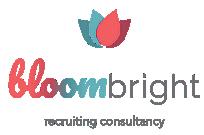
While each one of us is an original, we all have something in common: we all want to belong. So we strive to invite different perspectives to drive our innovation and different stories to build our culture. When we do, we end up in a place we all want to be.
